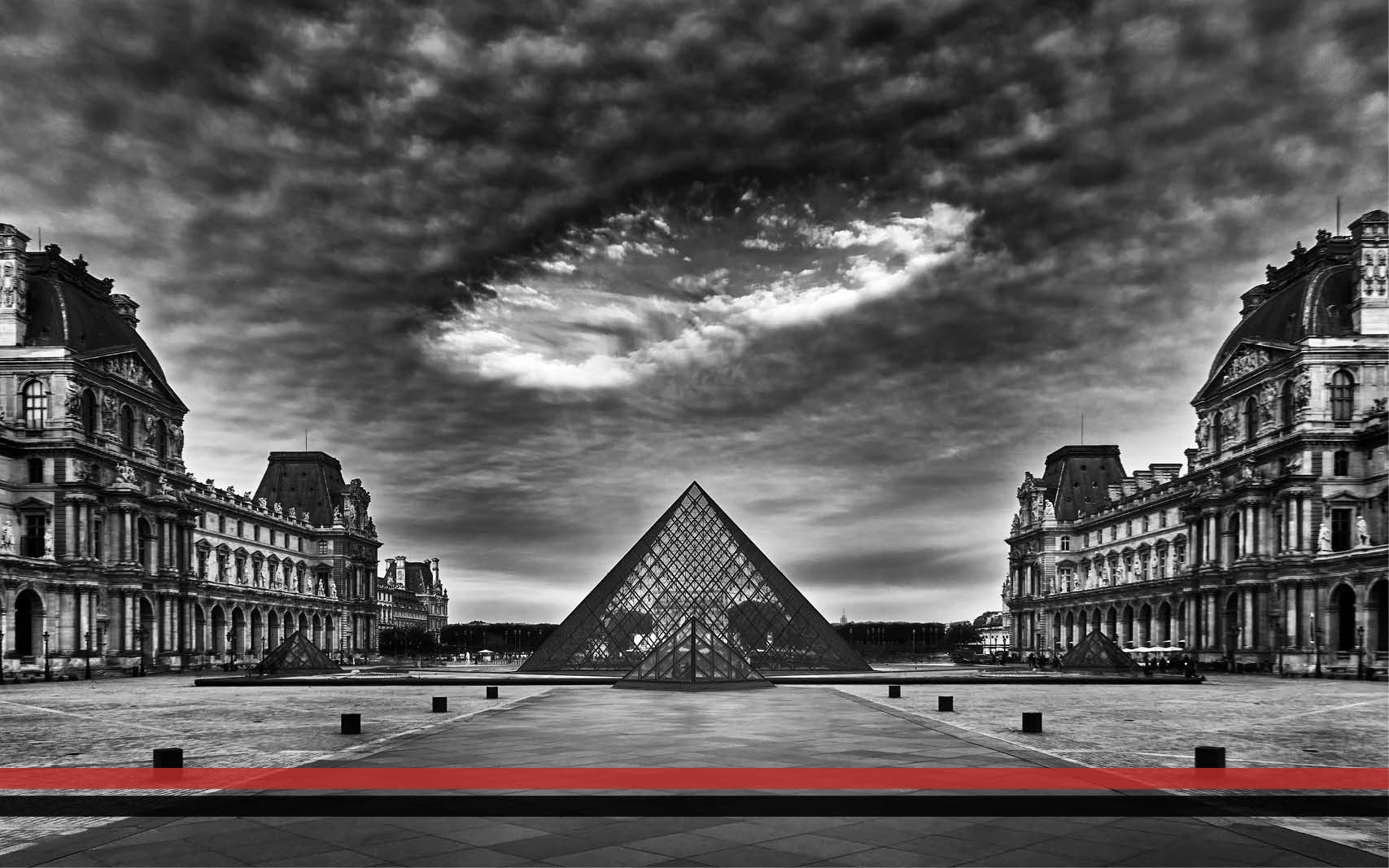
Paris Silenced
A curated selection of 22 fine art images of Paris, recording a unique moment in the French capital’s rich history – the Covid lockdown in 2020, which turned Paris into a ghost town.
Photography ByIan Borthwick
Latest exhibition: Mod’s Hair
141 Aikmans Road, Merivale, Christchurch
Exhibition on now – open to the public free
Curated by:Generously sponsored by: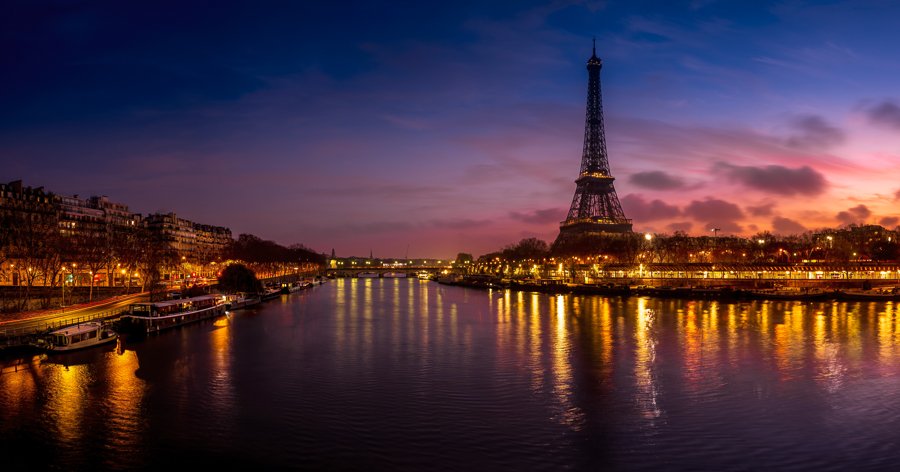
Ian Borthwick, Eiffel Panorama, 2020
The emblematic Parisian tower, as seen from Bir Hakeim Bridge, at dawn. No matter what angle I approach the Eiffel Tower from, it always represents a challenge, either visually or technically. To render its grandeur, this particular image is made up of five separate vertical images, merged into one on the computer. The shots were all taken using a tripod, but as a two-tiered bridge with the metro on the upper-level Bir Hakeim presents its own difficulties: when the metro goes past, the bridge shakes, so you have to time your shots between trains! Order online

Ian Borthwick, Majestic Solitude, 2020
There are few sights so touching in their majesty as the Eiffel Tower at the break of day, especially when it is wrapped in a veil of silence. Although I have lived in Paris for over 40 years, whether seen up close or, as here, from the other side of the river, the Tour Eiffel still has the power to move me. Framing this shot with the twin wings of the Palais de Chaillot, looking out over the city from this historic esplanade, I felt immensely privileged to be there alone, while all that mighty heart was lying still.
Order online
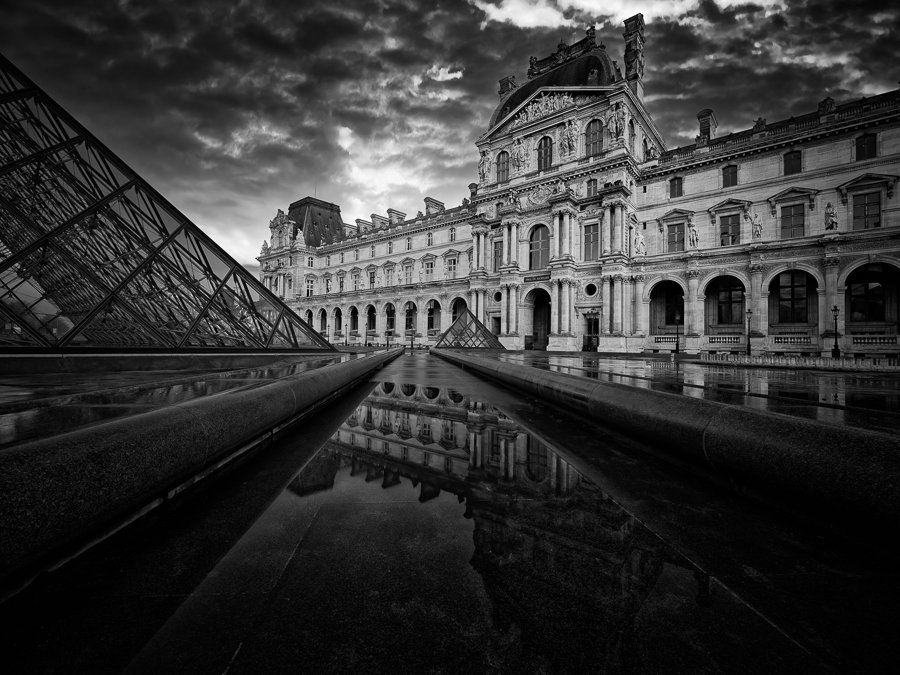
Ian Borthwick, Eerie Silence, 2020
With nine million visitors a year, the Cour Napoléon, the heart of the Louvre, is understandably another part of Paris that is habitually over-run with people. Even on Tuesdays, when the Louvre is closed, crowds still gather here to absorb the splendour of its architecture and the magnificent juxtaposition with I.M. Pei’s steel and glass pyramid. Order online
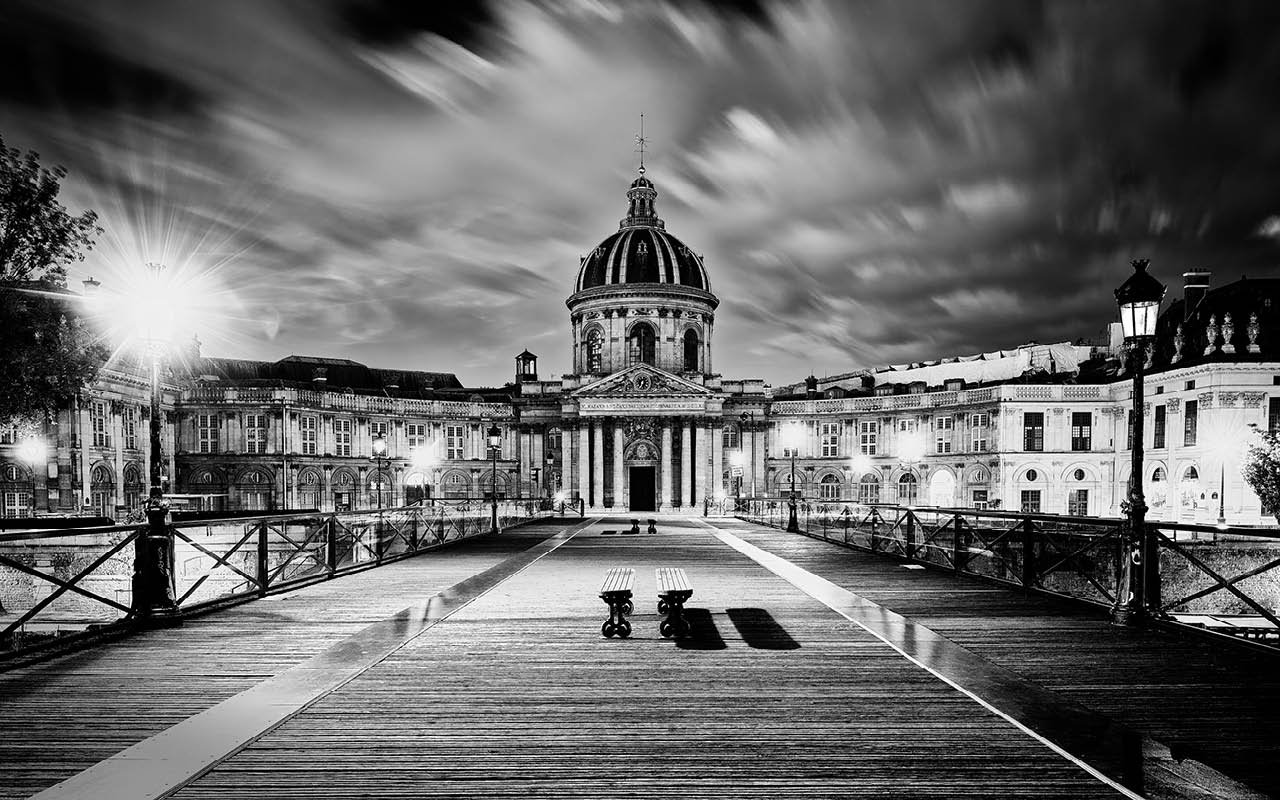
Ian Borthwick, Purely Academic, 2020
Swirling clouds over the hallowed dome of the Institut de France – home of the French Academy, symbol of enlightenment and virulent guardian of the French language since 1795. As seen from the Pont des Arts, which links it to the Louvre on the other side of the Seine.
Order online
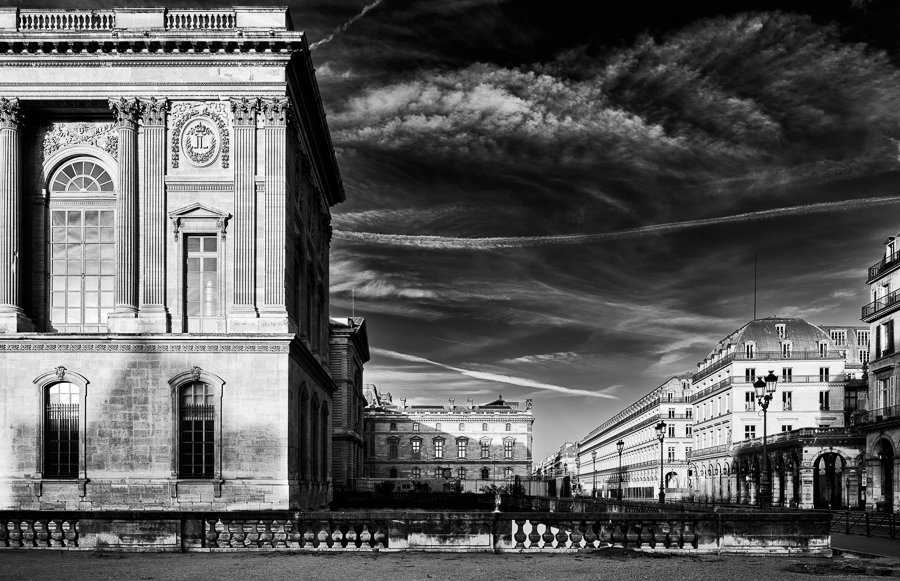
Ian Borthwick, Lesson in Perspective, 2020
Taken on the corner of the Rue du Louvre and the Rue de Rivoli, another graphic example of why Paris is considered the most beautiful city in the world. On the left, the classical perfection of the Eastern façade of the Louvre and its 185-metre-long colonnade (1670), complete with the letter L in honour of King Louis XIV. Juxtaposed on the right with the timeless perspective of the Rue de Rivoli, and its Hausmannian buildings dating from 1860. Order online

Ian Borthwick, Empty Gardens, 2020
The Pavillon de Flore of the Louvre and the start of the Tuileries Gardens. Although desperately empty in this shot, with over 100 sculptures, 3000 trees, 125,000 plants and 3000 chairs for lounging in, it is a favourite place for Parisians to stroll, totalling more than 14 million visitors per year. On the right of the image, on the other side of the Seine is the Musée d’Orsay, another magnet for tourists with over five million annual visitors. Order online
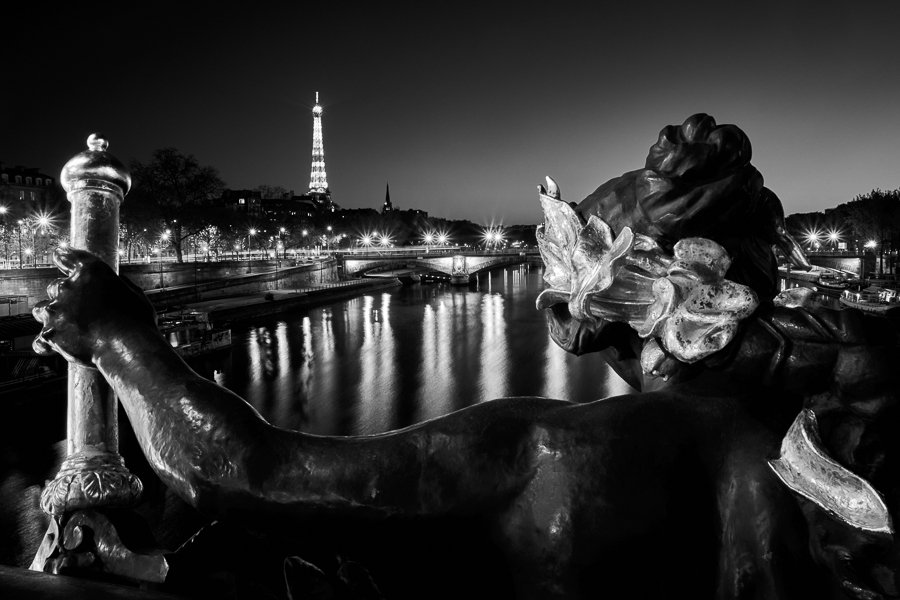
Ian Borthwick, Untroubled Waters 2, 2020
The mighty Seine, as tranquil as a mill pond, as seen from the city’s most ornate bridge, the Pont Alexandre III. Normally, on a warm Spring evening such as this the quays along the Seine are thronging with people, the house-boats and barges are filled with laughter, and the river itself is churned up by an unending stream of tourist boats, pleasure craft, and occasional barges. Order online

Ian Borthwick, Shock of the New 1, 2020
Up close and personal with I.M. Pei’s stunning steel and glass pyramid at the Louvre. A source of bitter debate when it was first mooted in the mid-1980s, decried and vilified when it was completed in 1989, the pyramid is now an iconic part of this historic courtyard. This wide-angle shot uses the leading lines and reflections to mirror the diamond or rhomboid shape of the Pyramid’s glass panels. Built using the same exact proportions as the Great Pyramid of Cheops, it contains 603 rhomboid and 70 triangular glass panels. Order online
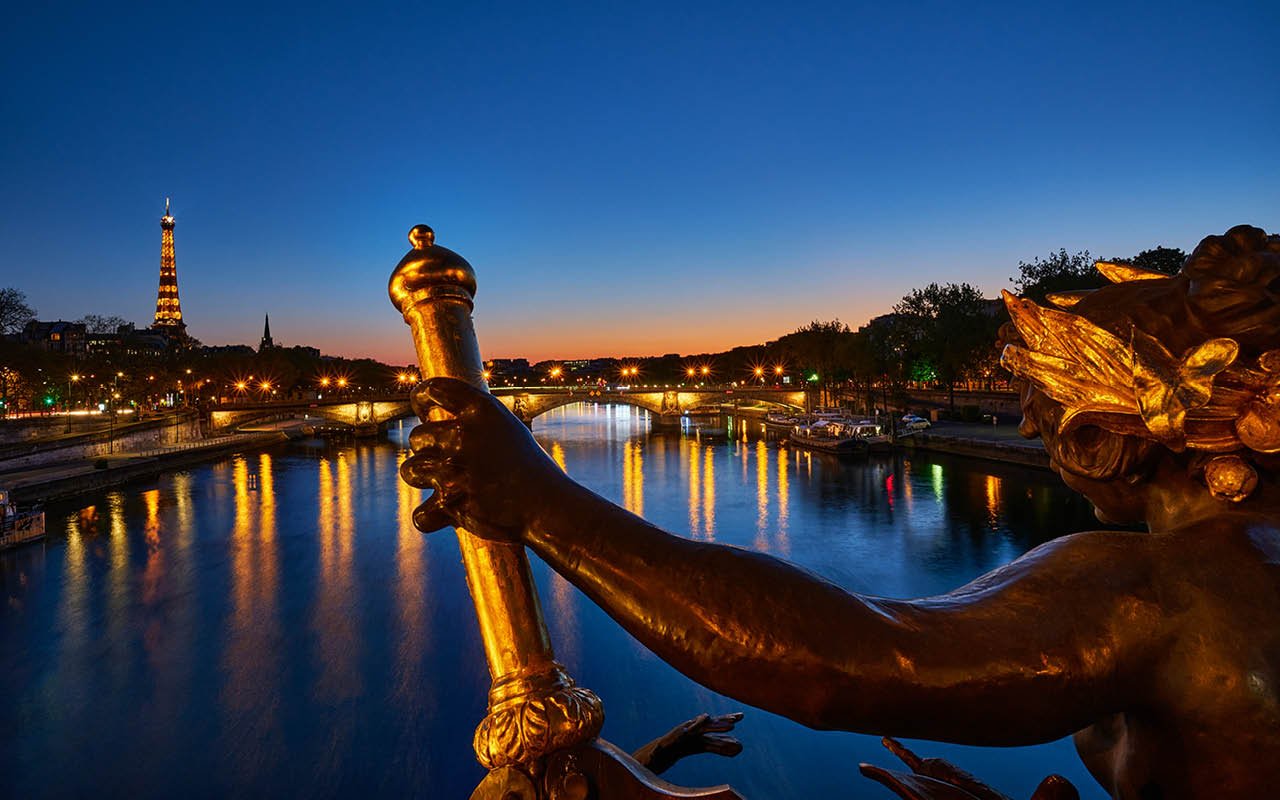
Ian Borthwick, Untroubled Waters 1, 2020
The mighty Seine, as tranquil as a mill pond, as seen from the city’s most ornate bridge, the Pont Alexandre III. Normally, on a warm spring evening such as this the quays along the Seine are thronging with people, the house-boats and barges are filled with laughter, and the river itself is churned up by an unending stream of tourist boats, pleasure craft, and occasional barges.
Order online
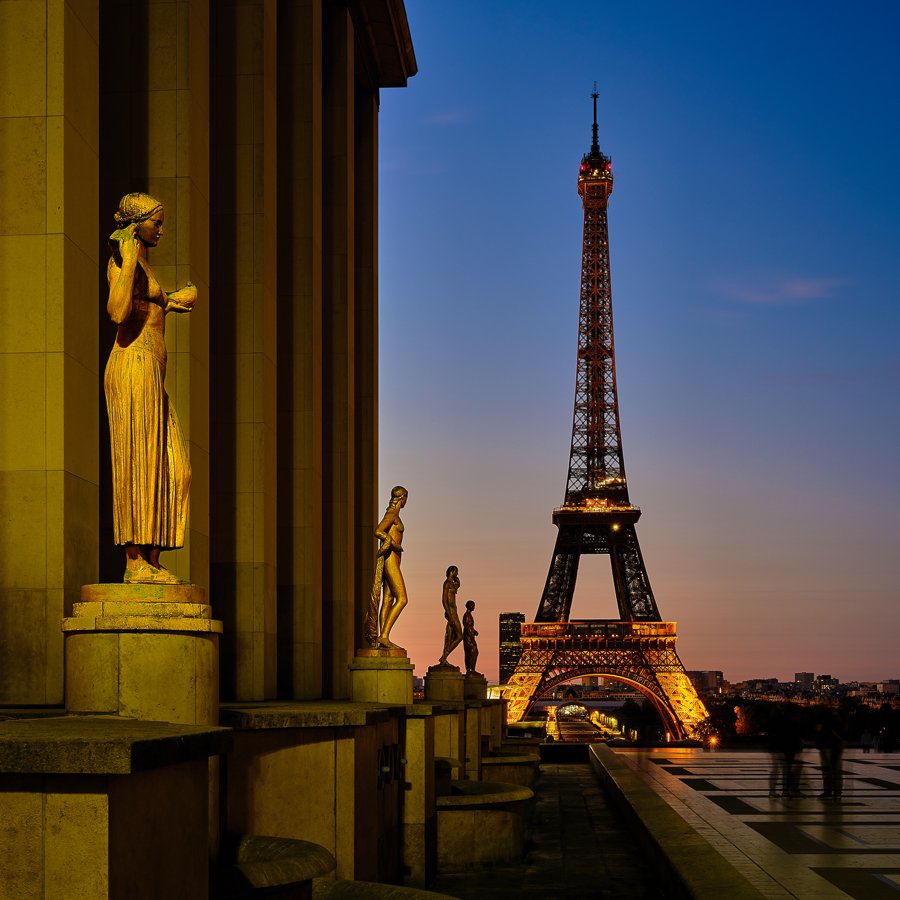
Ian Borthwick, Chaillot Morning 1, 2020
With its unimpeded view of the Eiffel Tower on the other side of the river, at all hours of the day and night the Palais de Chaillot is usually a bustling mass of sightseers, partygoers, touts, skate-boarders and instagrammers. Joining the two wings of the palace, the Human Rights Esplanade, 125 m wide by 60 m deep, is a deeply symbolic place: the photo of Hitler posing here in June 1940 became one of the iconic images of WW2, and just as symbolically it was here that the US Army celebrated VE Day on May 8th 1945. Order online

Ian Borthwick, Shock of the New 2, 2020
Up close and personal with I.M. Pei’s stunning steel and glass pyramid at the Louvre. A source of bitter debate when it was first mooted in the mid-1980s, decried and vilified when it was completed in 1989, the pyramid is now an iconic part of this historic courtyard. This wide-angle shot uses the leading lines and reflections to mirror the diamond or rhomboid shape of the Pyramid’s glass panels. Built using the same exact proportions as the Great Pyramid of Cheops, it contains 603 rhomboid and 70 triangular glass panels. Order online
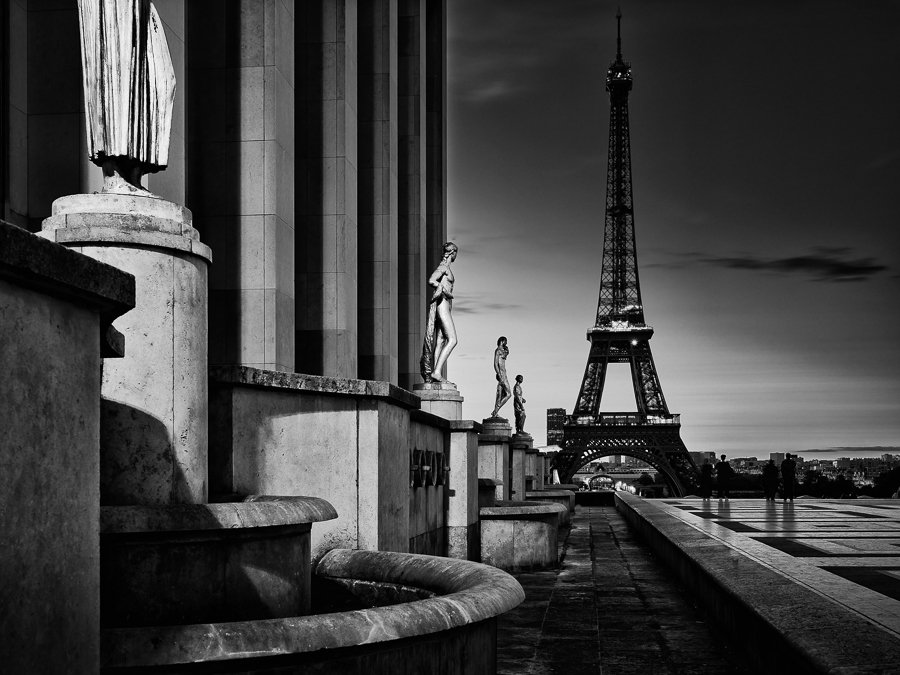
Ian Borthwick, Chaillot Morning 2, 2020
With its unimpeded view of the Eiffel Tower on the other side of the river, at all hours of the day and night the Palais de Chaillot is usually a bustling mass of sightseers, partygoers, touts, skate-boarders and instagrammers. Joining the two wings of the palace, the Human Rights Esplanade, 125 m wide by 60 m deep, is a deeply symbolic place: the photo of Hitler posing here in June 1940 became one of the iconic images of WW2, and just as symbolically it was here that the US Army celebrated VE Day on May 8th 1945. Order online

Ian Borthwick, Le Style Français, 2020
Part of a series on ‘le style français’ as it is reflected in the design, architecture, and decoration of Paris. Overlooking the Place de la Concorde, this deeply French combination of elements is on the balcony of l’Hôtel de la Marine. Before becoming the French Navy HQ for several centuries, it was the home of the French Crown Jewels, and rich depository of all royal furniture. Marie-Antoinette even had her own apartment here, before the whole place was ransacked during the revolution. Ironically it was on this balcony that crowds gathered to watch the decapitation of Marie-Antoinette and her husband King Louis XVI, both in 1793. Order online

Ian Borthwick, La Samaritaine, 2020
The archetypal Parisian building, as imagined by the great urban renovator Baron Haussmann in the mid-19th Century. Overlooking the Seine on the Right Bank, at one stage La Samaritaine was the biggest department store in Paris, totalling 48,000 m2. It was closed in 2005 and, following extensive renovations, did not reopen until June 2021, near the end of the Covid pandemic. Order online
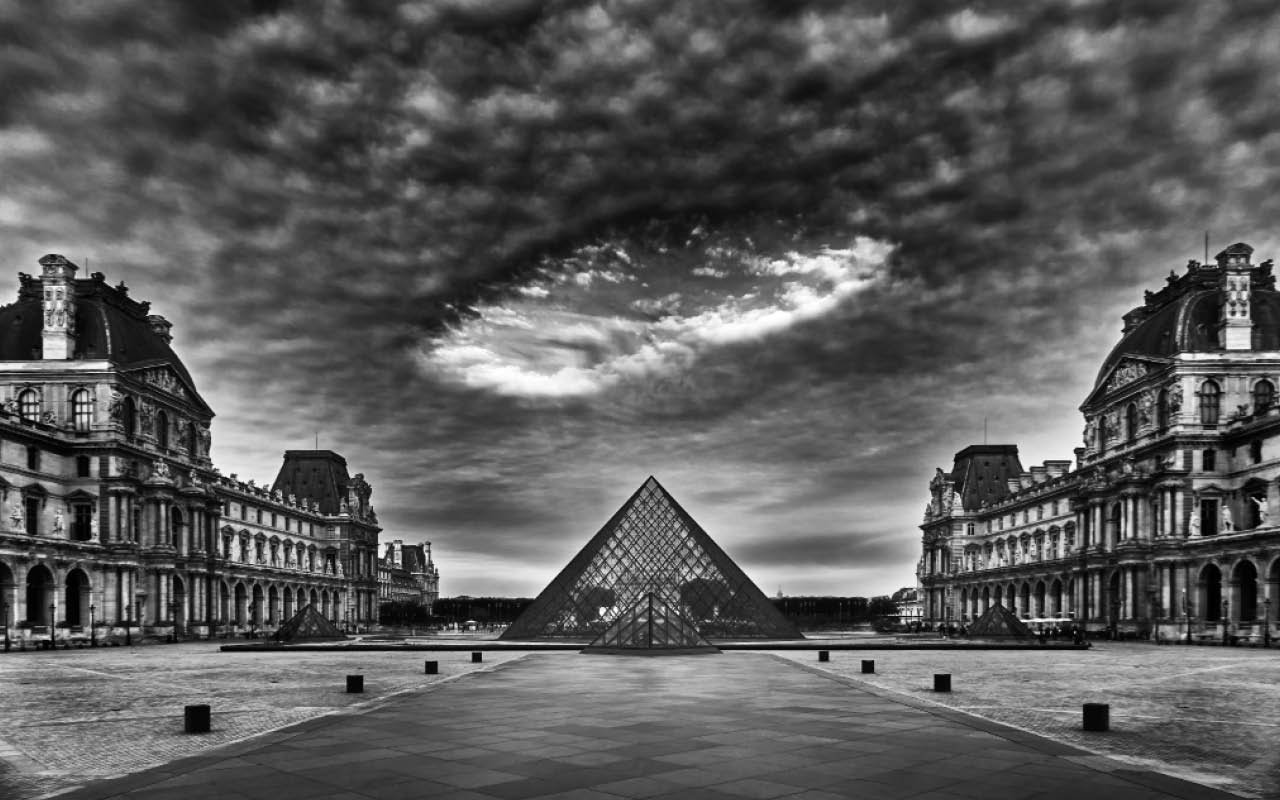
Ian Borthwick, Cosmic Energy, 2020
The Cour Napoléon of the Louvre, perhaps the world’s greatest art museum, and its now-iconic glass and steel pyramid by I.M. Pei. Hovering above this majestic vista, the surreal cloud formation a stark reminder that, aligned with the stars, the ancient pyramids of Egypt were supposedly built according to the energies of the cosmos.
Order online

Ian Borthwick, Bridge of Sighs, 2020
Just downstream from the Eiffel Tower, constructed using some of Mr Eiffel’s techniques, the Bir Hakeim Bridge has a rich cinematic history. In popular culture, it has been renamed ‘Inception Bridge’ after figuring largely in the film of the same name. Since that film’s success, at all hours of the day and night sighing couples from all over the world, often in wedding dress, come to the bridge to have their photograph taken – making this graphic Covid shot even more extraordinary.
Order online
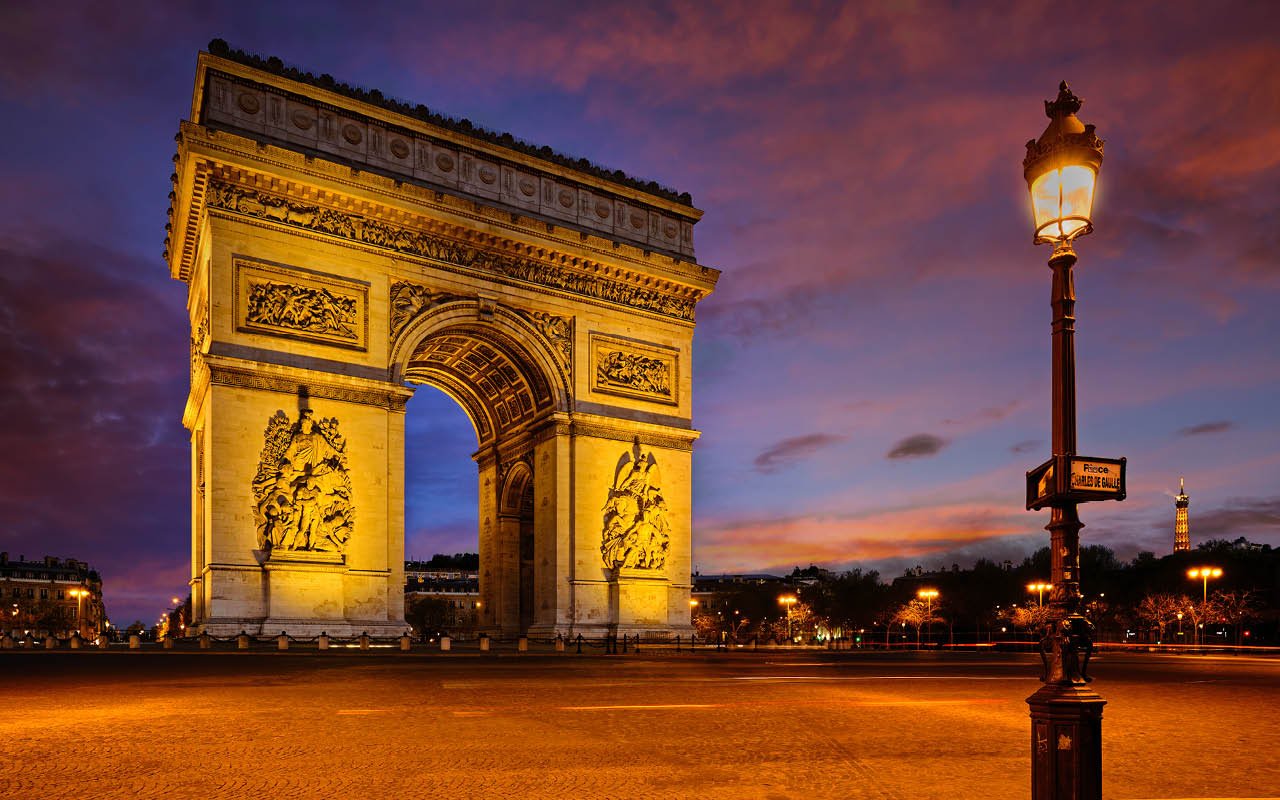
Ian Borthwick, Reduced to Silence, 2020
A scene perhaps never to be repeated. Usually, at 10:30 pm on a Saturday night – or any night – the Place Charles de Gaulle (aka Place de l’Étoile) is a heaving mass of traffic, 12 unformed klaxonning lanes feeding in from the 12 avenues which make up l’Etoile. But during Covid, apart from perhaps a lone scooter sneaking through on the right, this massive junction was, as the French say, ‘réduit au silence’ (reduced to silence).
Order online

Ian Borthwick, Pont Neuf Reflections, 2020
During the pandemic, the sounds of silence were echoed by the stillness of the waters in the River Seine. Revelling in the abnormally calm conditions and knowing where the sun was due to come up, I rushed to take up position on the Pont des Arts before dawn. This is perhaps my favourite view of Paris: from the elegant simplicity of Pont Neuf (the oldest standing bridge in Paris, 1578), the romantic Square du Vert-Galant at the western tip of Île de la Cité, the spire of La Sainte-Chapelle, the tower of Quai des Orfèvres, and far left, the Tour Saint-Jacques whence pilgrims still leave on the ‘camino’ to Santiago de Compostella. As for the unsightly crane, it stands as a marker of another heartrending moment in history – the reconstruction of Notre Dame ravaged by fire in April 2019. Order online
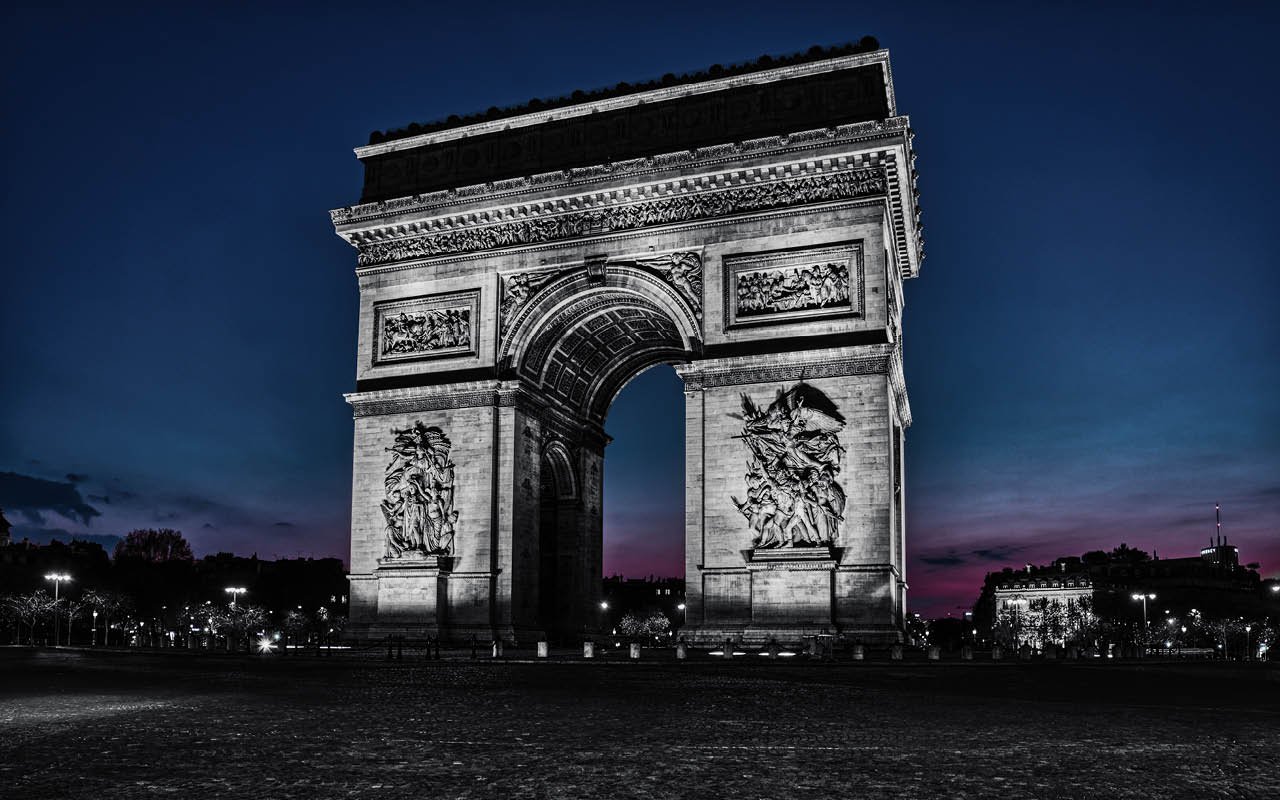
Ian Borthwick, Ghost Town, 2020
Like Photos Reduced to Silence and Arresting Spectacle, this is another image of the Arc de Triomphe and the Place Charles de Gaulle such as we may never see them again. The wildest, busiest, most challenging cross-roads in the whole of Paris at around 10:30 pm on a Saturday, without a single vehicle in sight. Today, perhaps a thing of beauty, but at the time it was deeply disturbing, as if Paris, the City of Light, had turned into a ghost town. By taking a more personal approach in post-production, in this image I have tried to portray the surreal, other-worldly feeling of Paris under Covid.
Order online
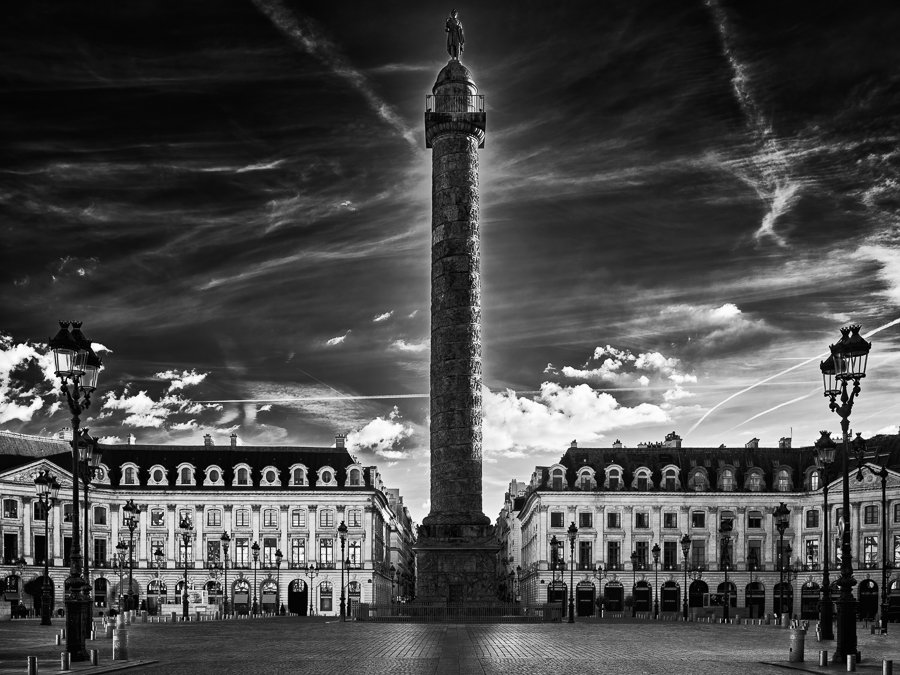
Ian Borthwick, Silent Symmetry, 2020
The empty streets and absence of traffic during Covid was for me a golden opportunity to admire the unspoiled symmetry of some of Paris’ great squares. This is no exception, with a rare shot of Place Vendôme, perhaps the most perfectly proportioned of all the squares of Paris, devoid of human presence. In the centre of the square, lit by the morning sun, stands the astounding Vendôme Column, crowned by a statue of Napoleon. The column itself is made from 425 spiralling bas-relief bronze plates, forged from enemy cannon captured by Napoleon’s armies at the Battle of Austerlitz. Order online
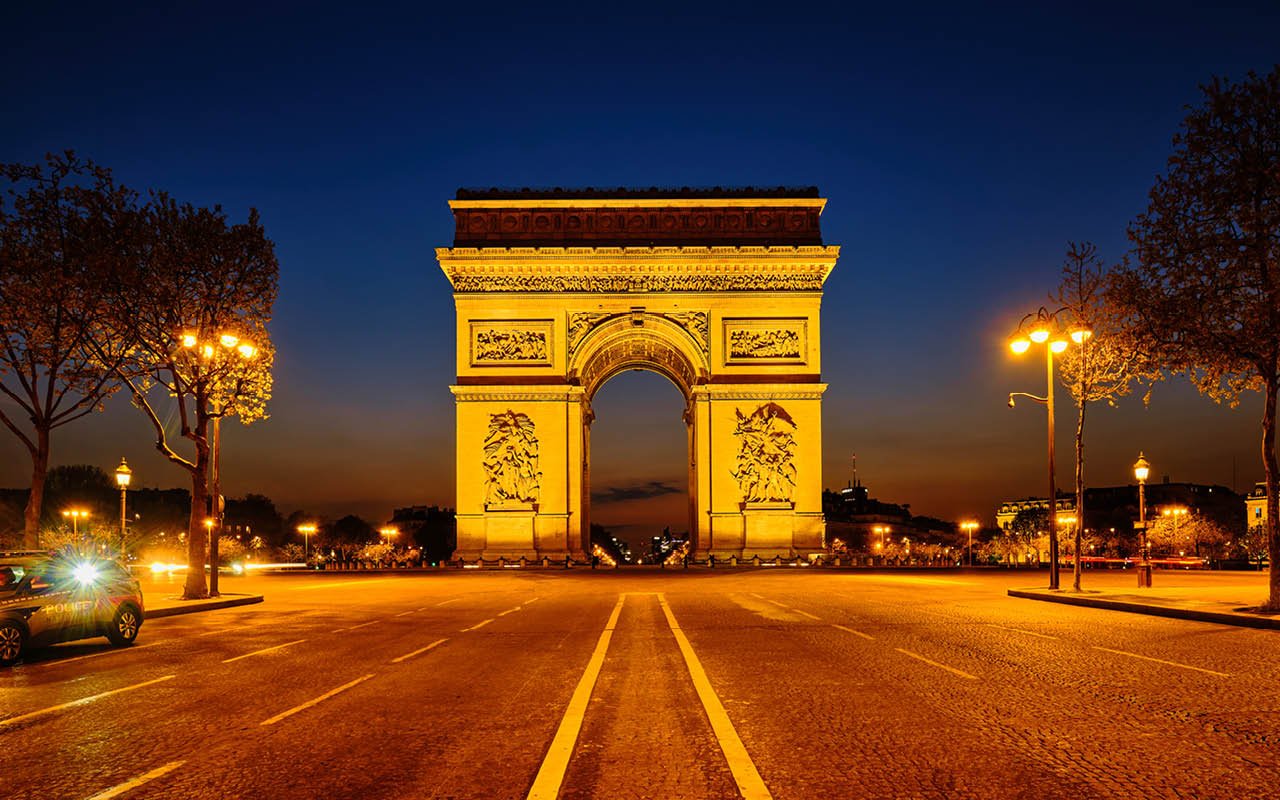
Ian Borthwick, Arresting Spectacle, 2020
Another key moment in my quest to document Paris under lockdown. Around sunset, this spot at the top of the Champs-Elysées is usually overrun with photographers and selfie-takers, a high-risk environment with bustling traffic going both ways. Armed with my media pass, the only pedestrian in sight, I was calmly going about my business until this police car slammed on its brakes and shone a spotlight on me. Next thing, three gendarmes were running at me, demanding to know what I was doing. One of them had clearly seen too many movies as, when I went to dig my pass out of my camera bag he shouted menacingly: “Keep your hands where I can see them.” Thankfully, after examining my pass and the contents of my bag, once the senior officer arrived, all was resolved. And I was allowed to continue my quest.
Order online
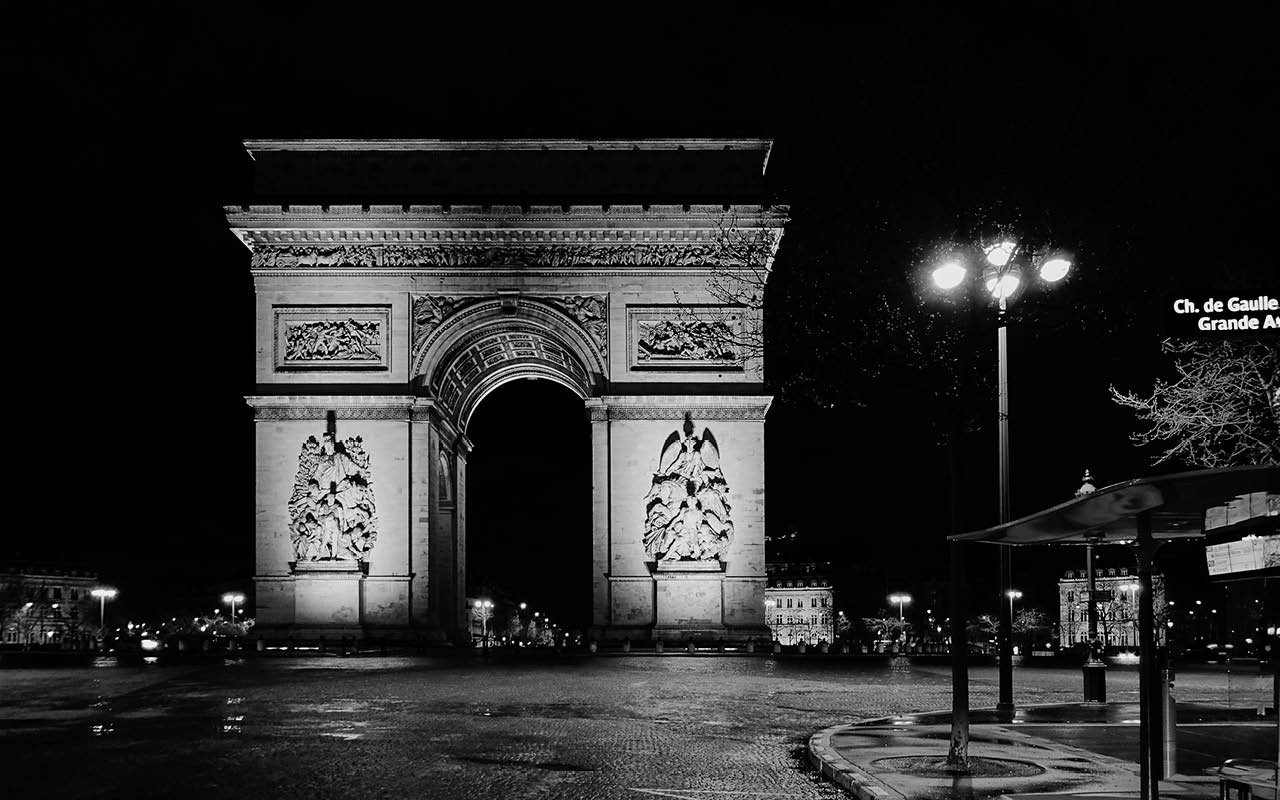
Ian Borthwick, Six Nations Lockdown, 2020
The desolate scene that triggered my quest to document this unique moment in history. Taken at 11:04 pm on a Friday night, I was driving home after commentating on the Six Nations game between France and Scotland. Normally I would never take this route, as the Champs-Elysées and its extension Avenue de la Grande Armée are usually eight chaotic lanes of bumper-to-bumper traffic. But on this memorable evening (Scotland had just won in Paris for the first time in 22 years, in an empty 80,000 capacity stadium) the mighty Arc de Triomphe was veiled in silence.
Order online
Exhibition
In 2020, paralysed by the coronavirus, the world went into lockdown and Paris was no exception. As a journalist, however, I had an official authorisation which enabled me to circulate freely in the city. One Saturday night, driving home after commentating a Six Nations Rugby game live on French radio, it was near midnight as I approached the Arc de Triomphe.
I suddenly realised that seeing the immense Place Charles de Gaulle, the Avenue de la Grande Armée and the Champs-Elysées totally empty was something which had perhaps never happened before, even during the German occupation of World War II.
Paris, the City of Light, the bustling, bubbling metropolis with some of the world’s most famous monuments, had become a ghost town.
So, protected by my media pass I set out to record this unique event, visiting the classic monuments devoid of tourists, marvelling at the perfect reflections in the untroubled waters of the mighty Seine River, and braving arrest by gendarmes on the Champs-Elysées.
The result is this curated selection of the most evocative images, in the hope that for the viewer they will stir the same emotions I felt when I was taking them.
– Ian Borthwick
Ian Borthwick
Legendary Paris-based Rugby journalist Ian Borthwick is also an award-winning photographer whose fine art images are a graphic record of a unique moment in history – the Covid Lockdown which turned the sparkling city of Paris into a ghost town.
Born in Christchurch, educated at Christchurch Boys High School and Canterbury University, Borthwick majored in languages before completing a Masters of Arts (Hons) in French at Auckland University. Combining his passions for language and for the game of rugby, he fashioned a career as a pioneering bilingual journalist, broadcaster, and author, not to mention being for several years the official interpreter and first ever press officer appointed to the French National Rugby team.
For over three decades, totalling over 500 tests and 10 World Cups, he was considered the most widely-read journalist in world rugby, contributing to all the major French newspapers (Le Monde, Libération, Midi-Olympique) as well as all the major English-speaking titles across the globe (The Sunday Times, The Guardian, The Independent, etc.). Writing in French that was often considered better than many native speakers, he won French Rugby Article of the Year in 1988, and French Sports Book of the Year in 2006. When he left his job of ‘grand reporter’ at renowned sports daily L’Équipe in 2012 he embarked briefly on a new venture as media manager at Paris club Racing 92 where, to use his own words, ‘The mediocre first-five from St Albans ended up teaching French to Dan Carter and Johnny Sexton.’
Opening night images
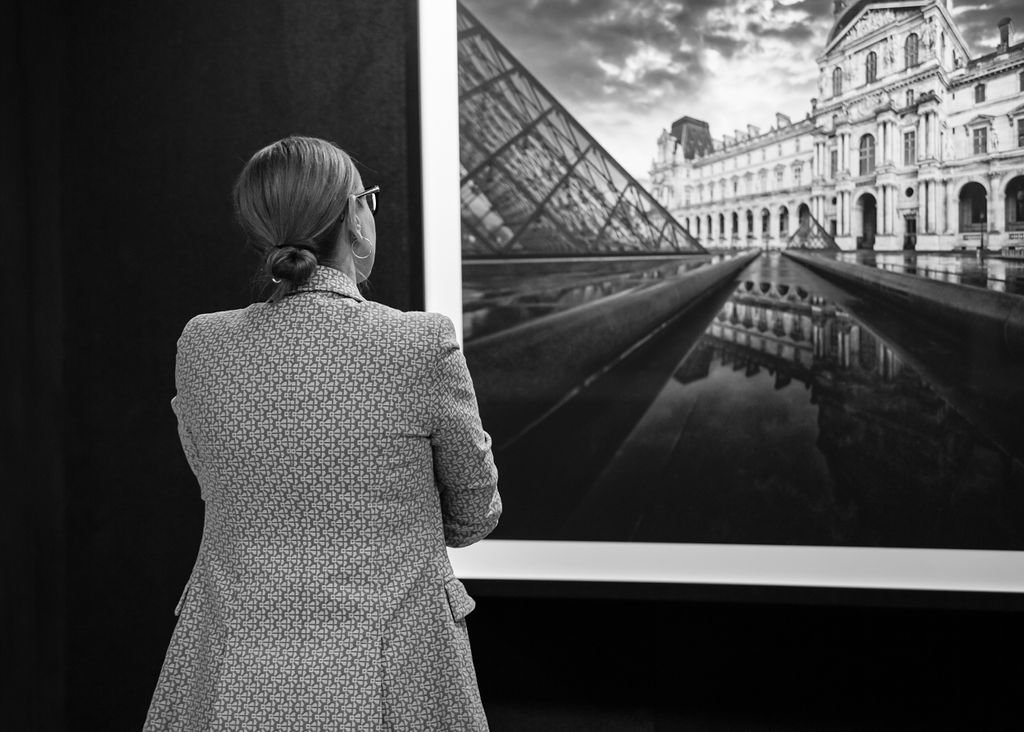
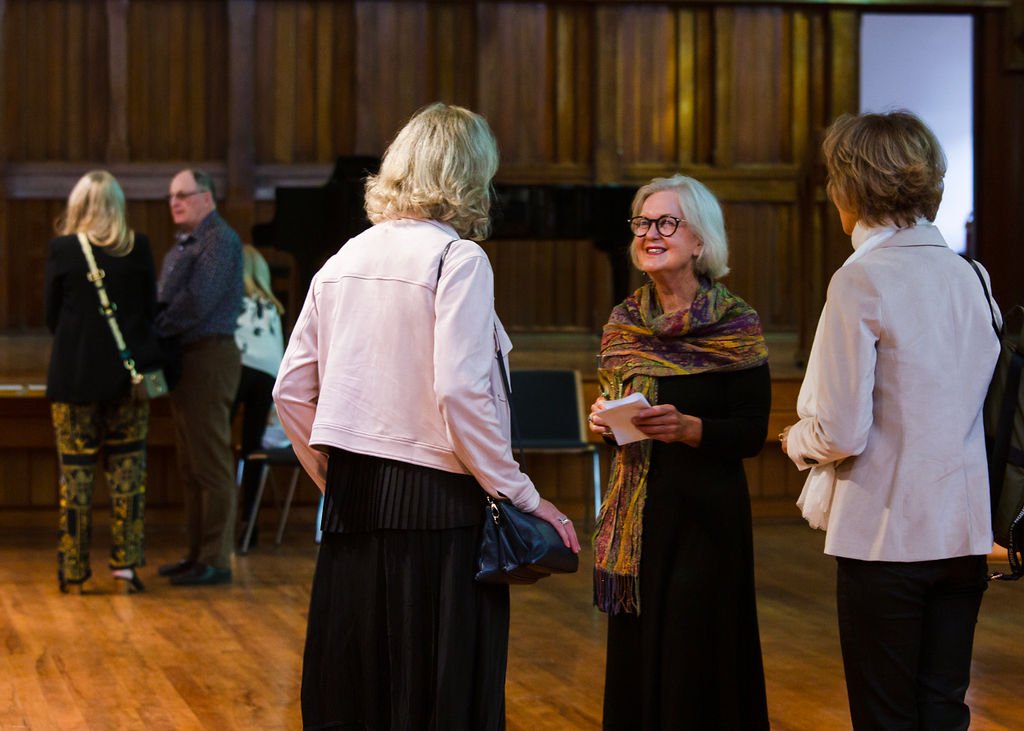
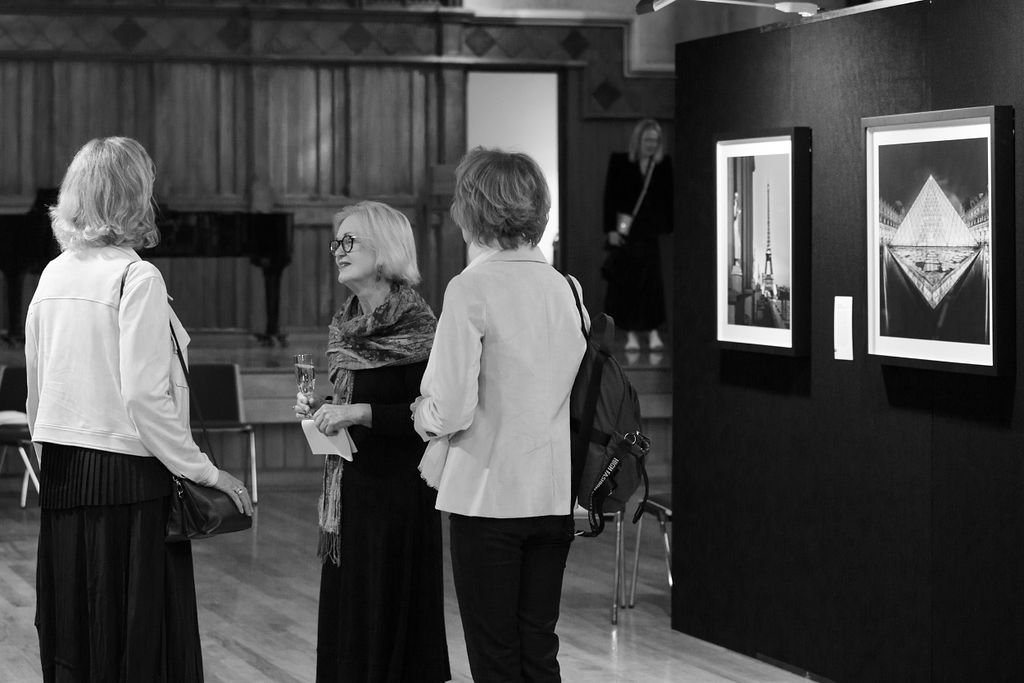
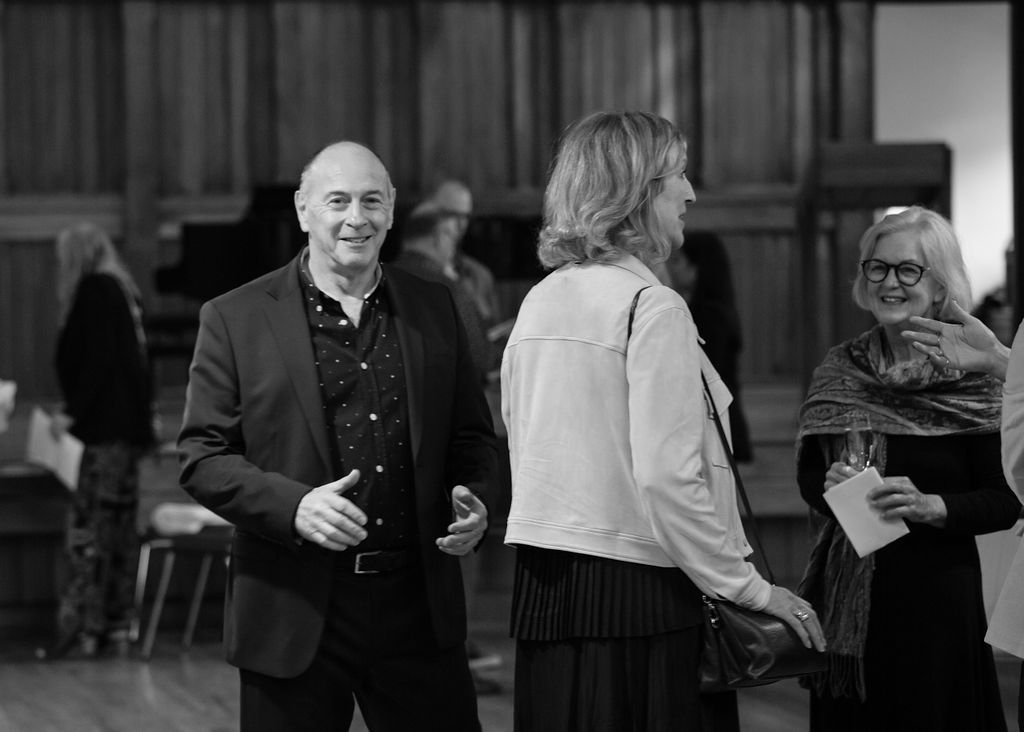
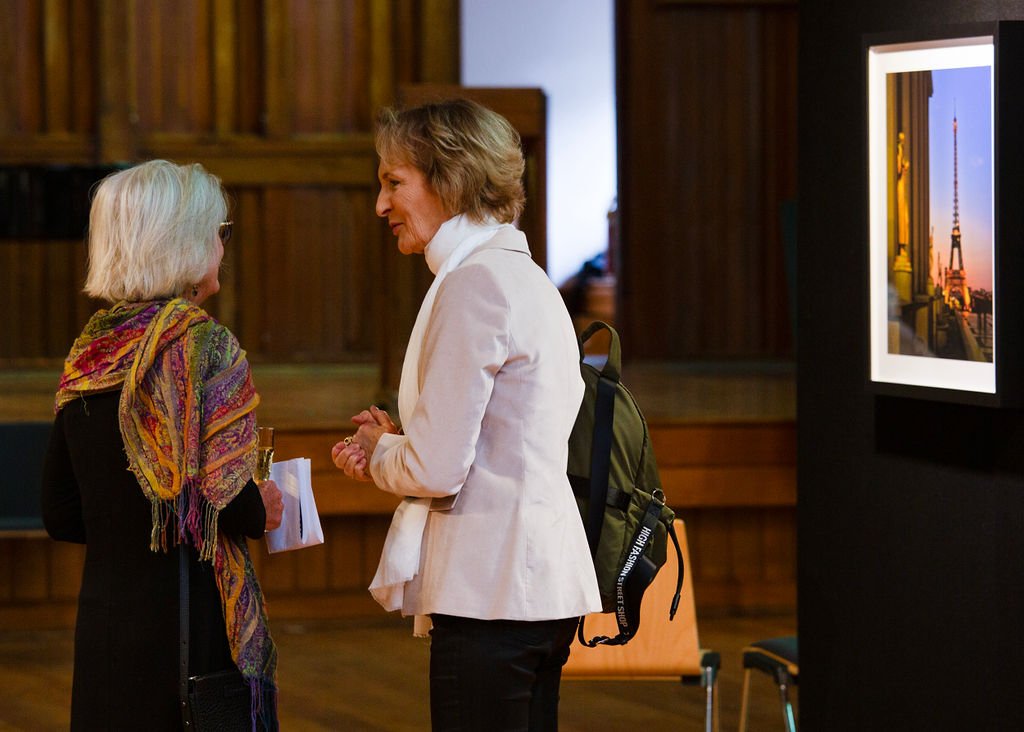
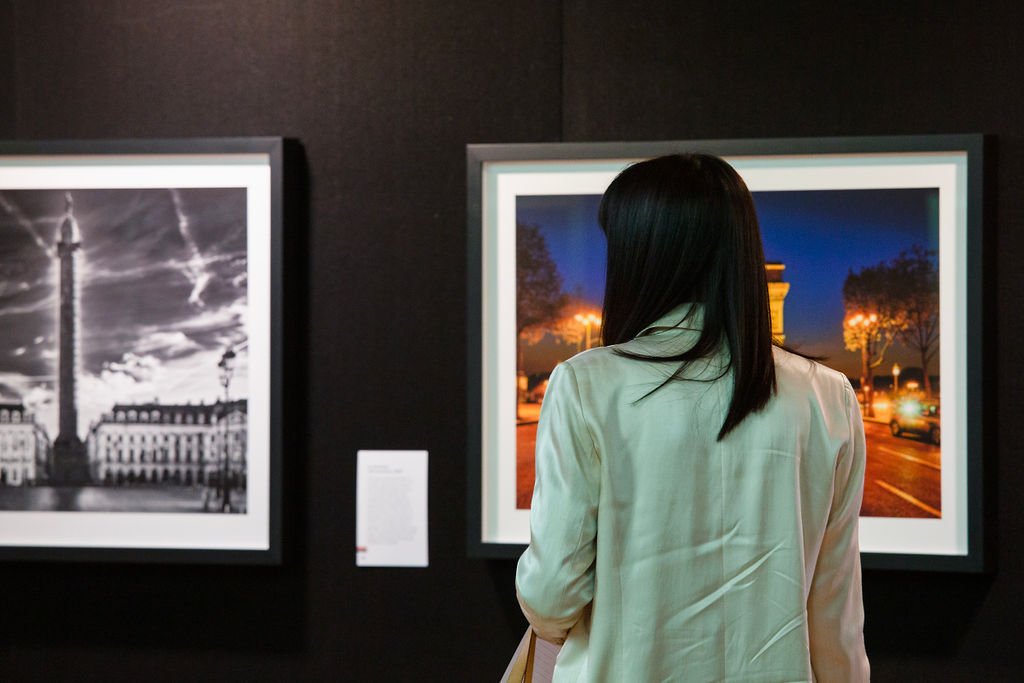
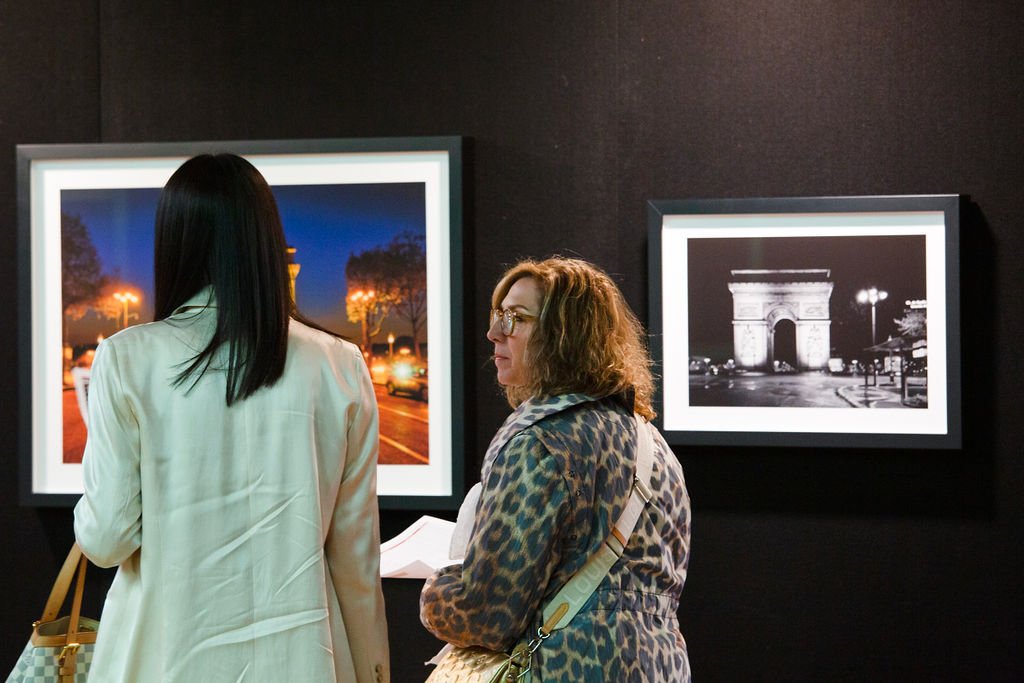
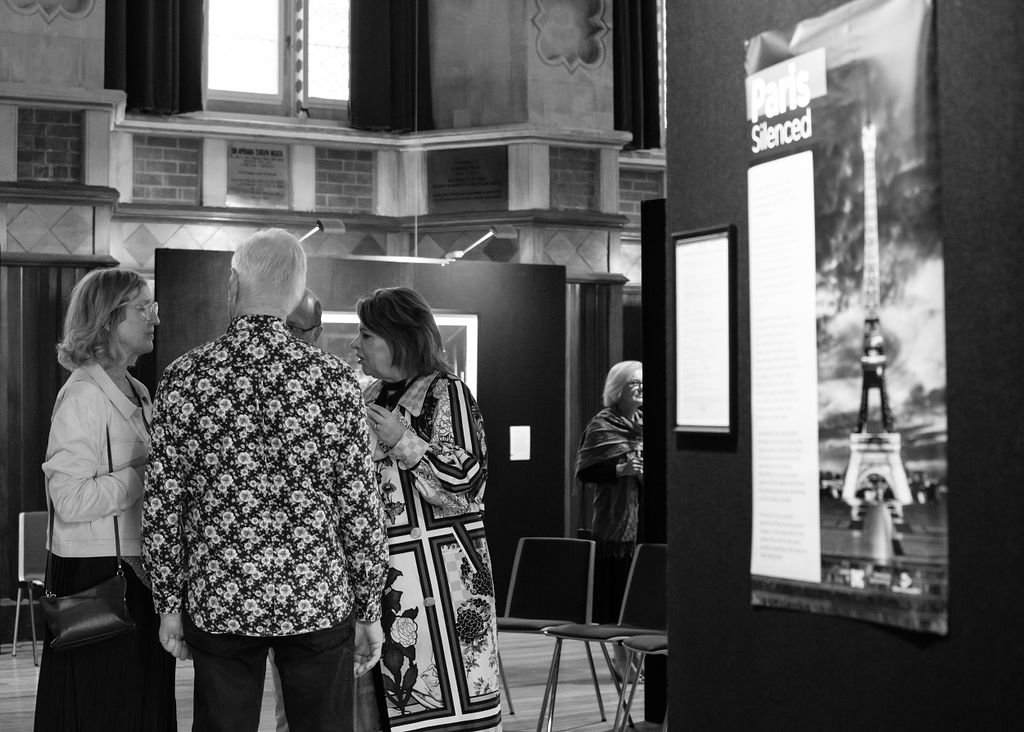
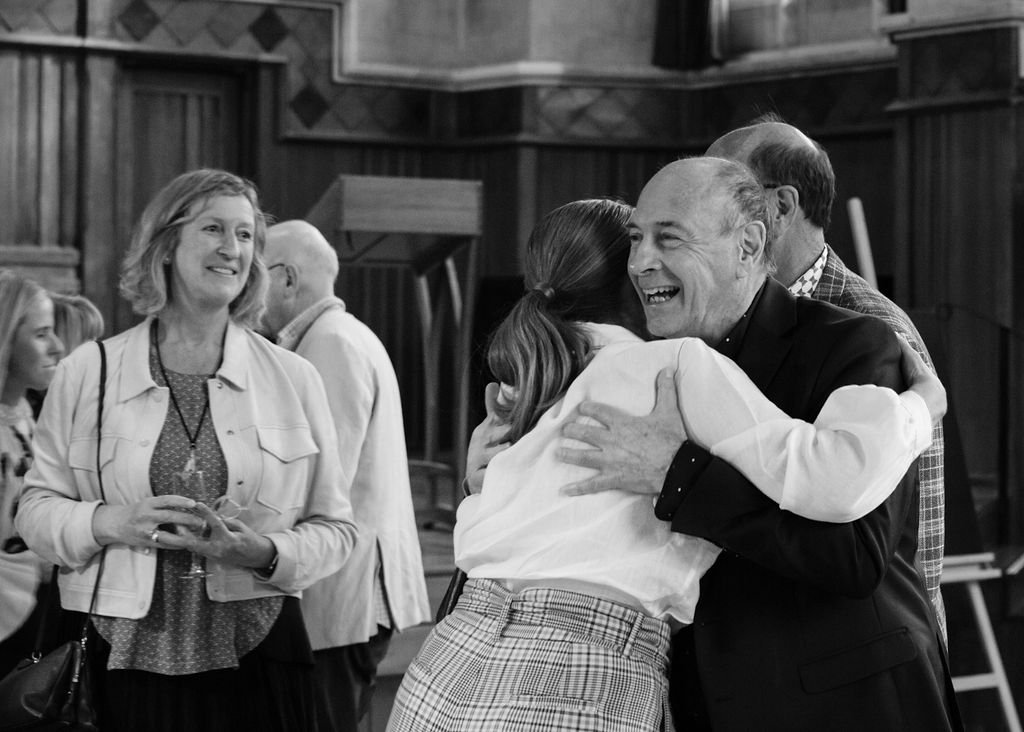
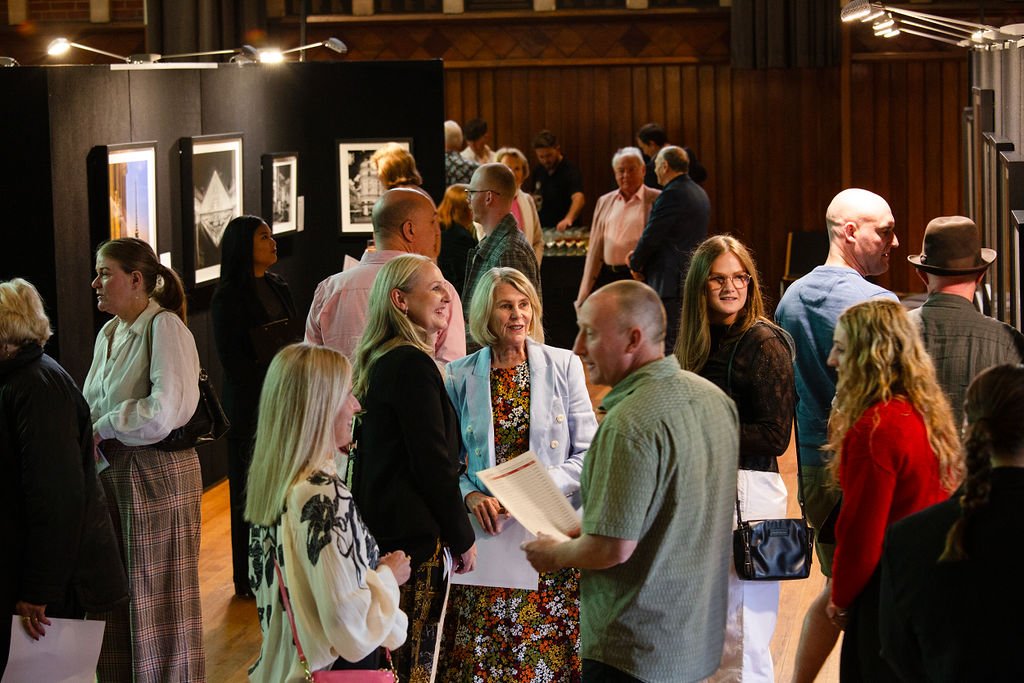
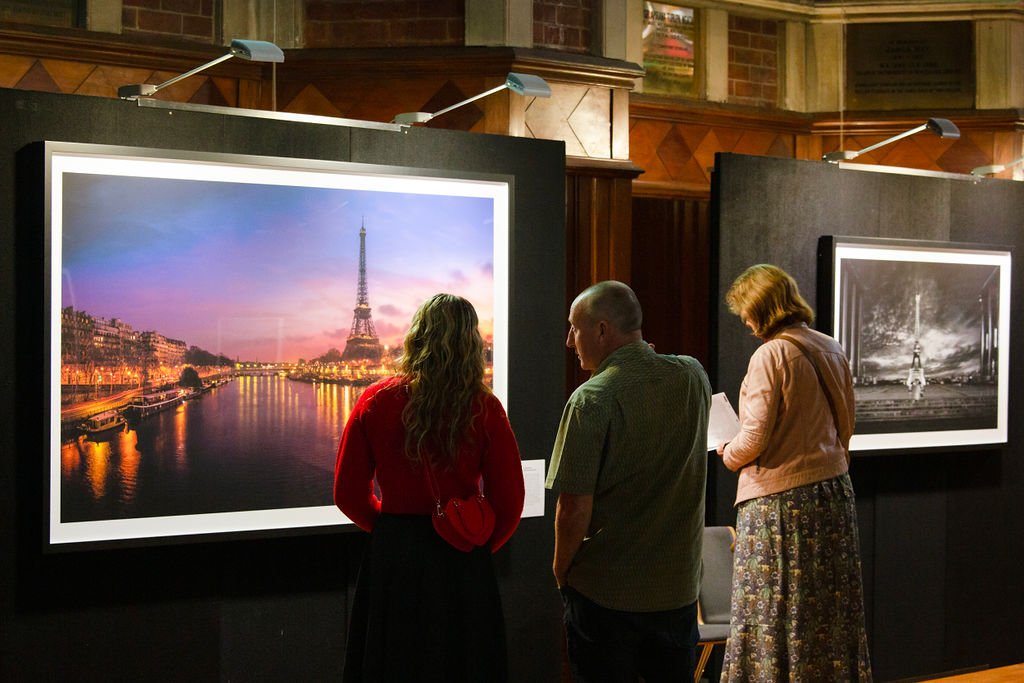
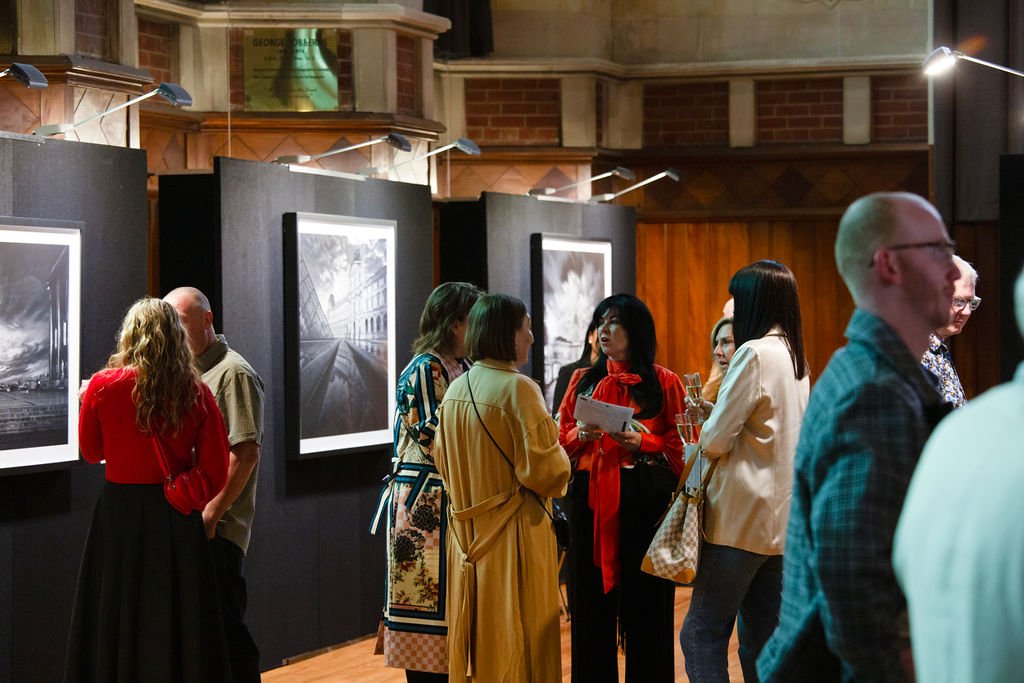
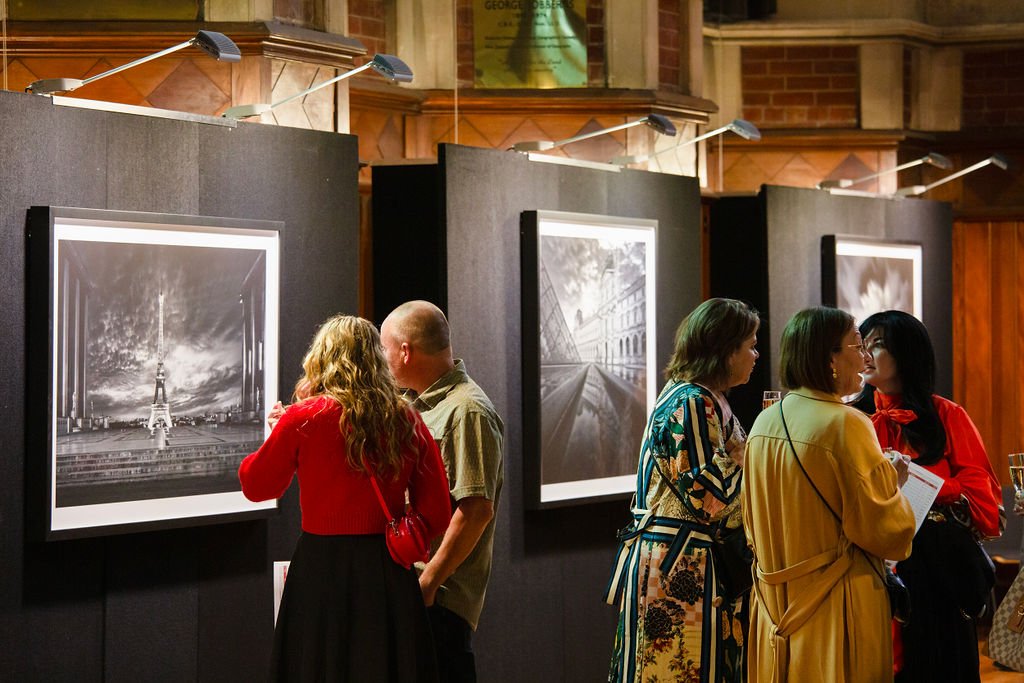
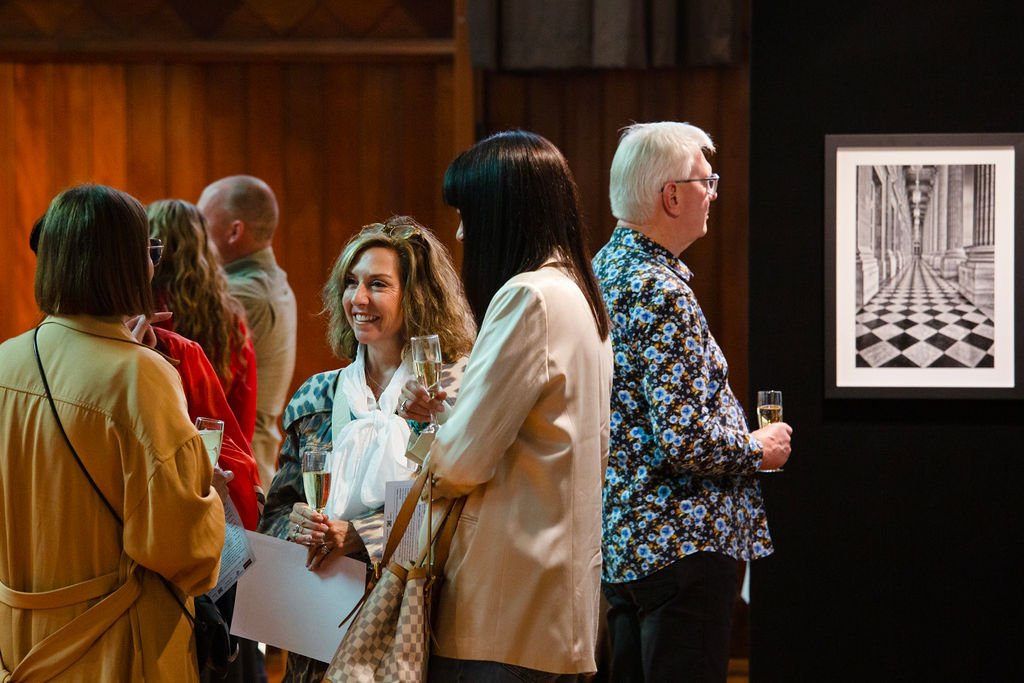
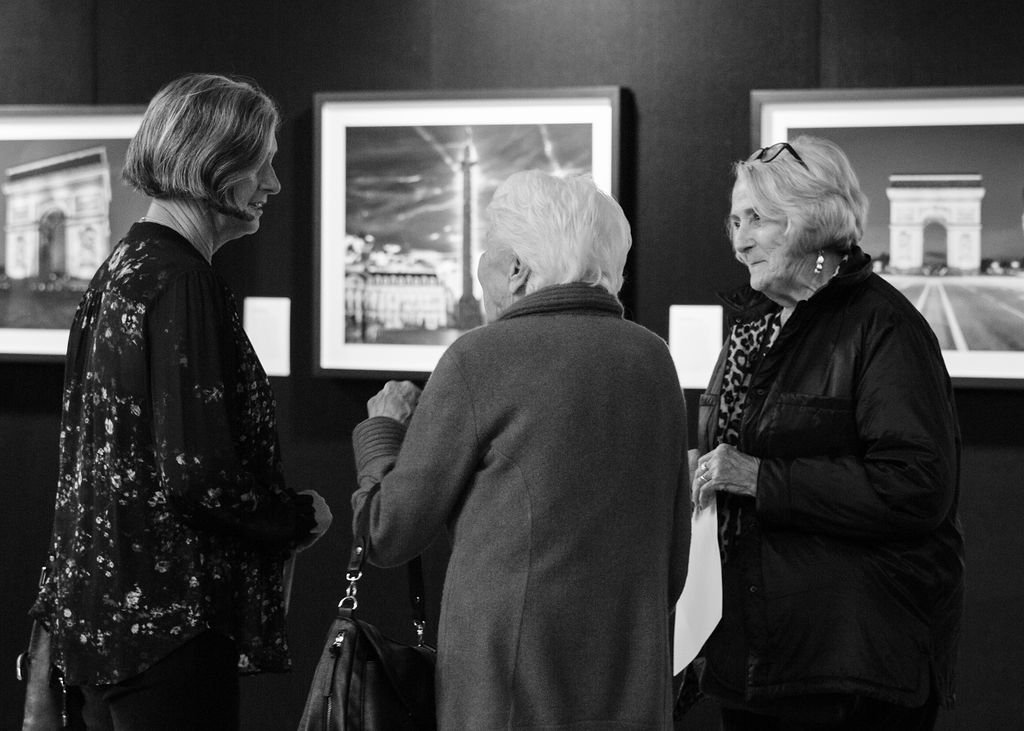
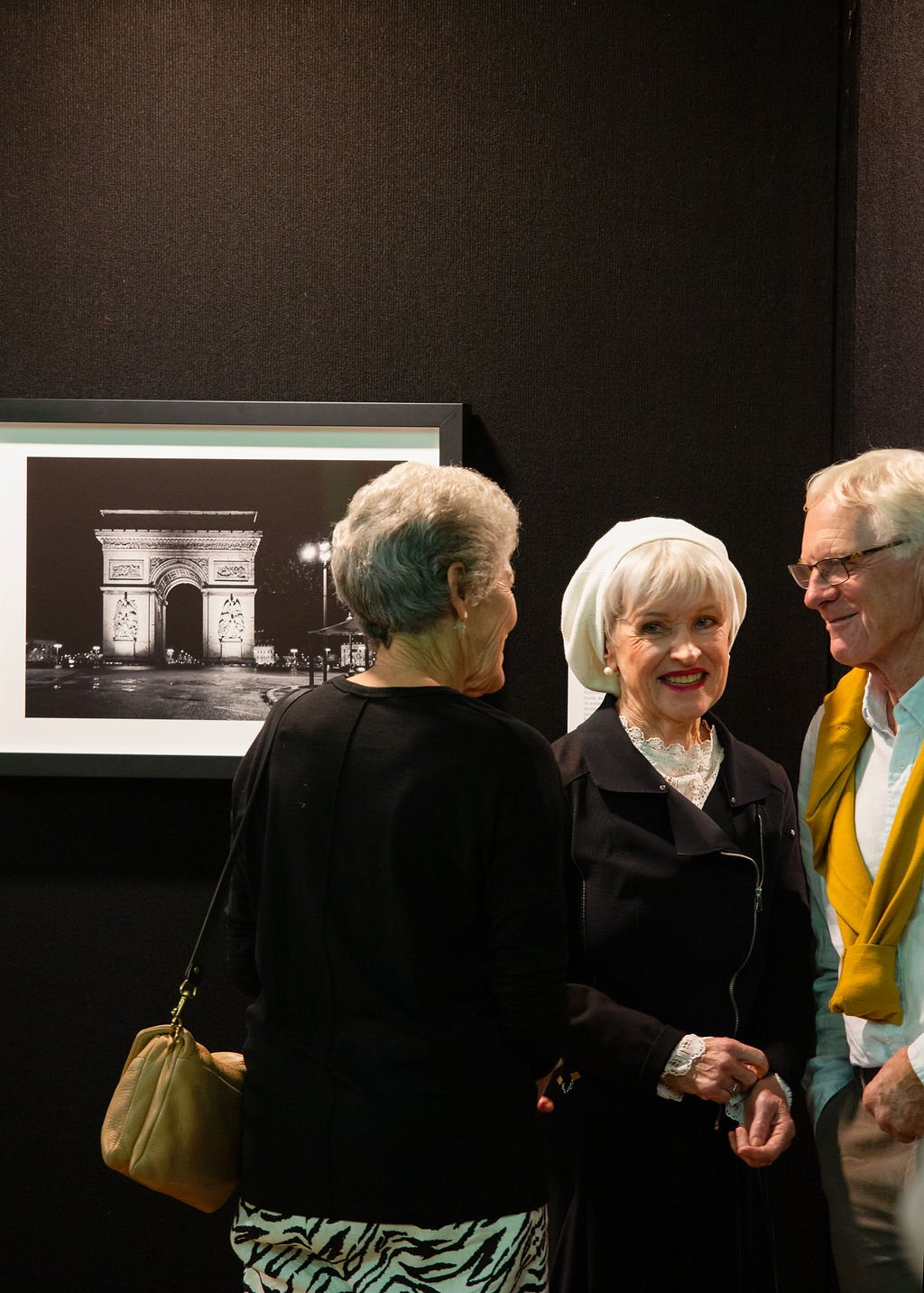
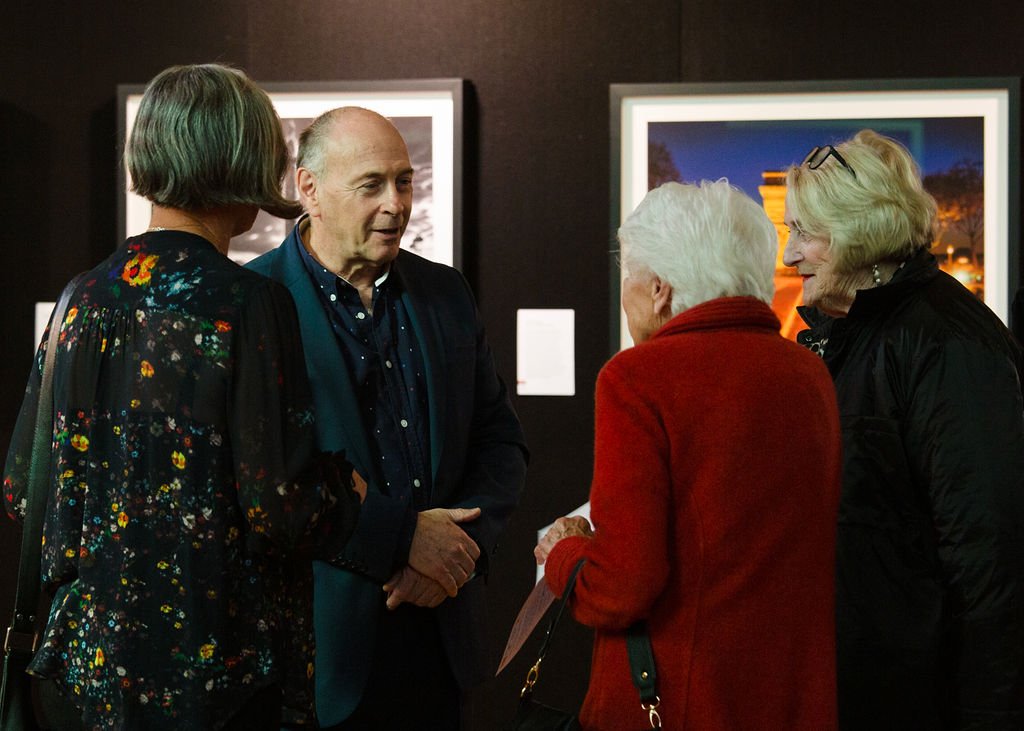
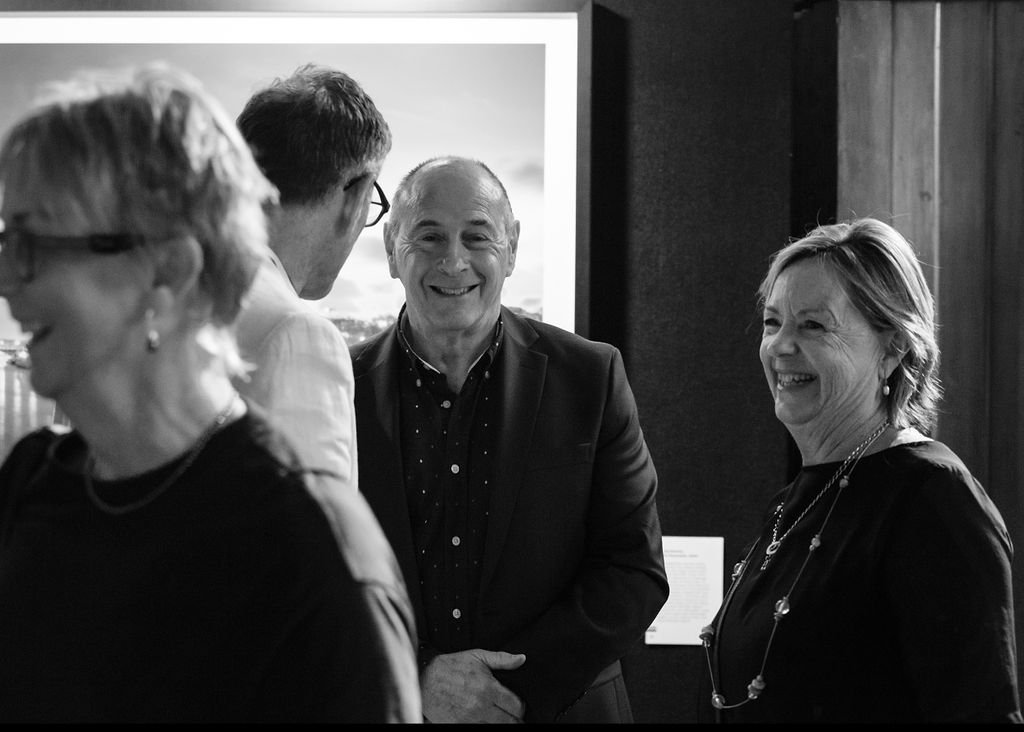
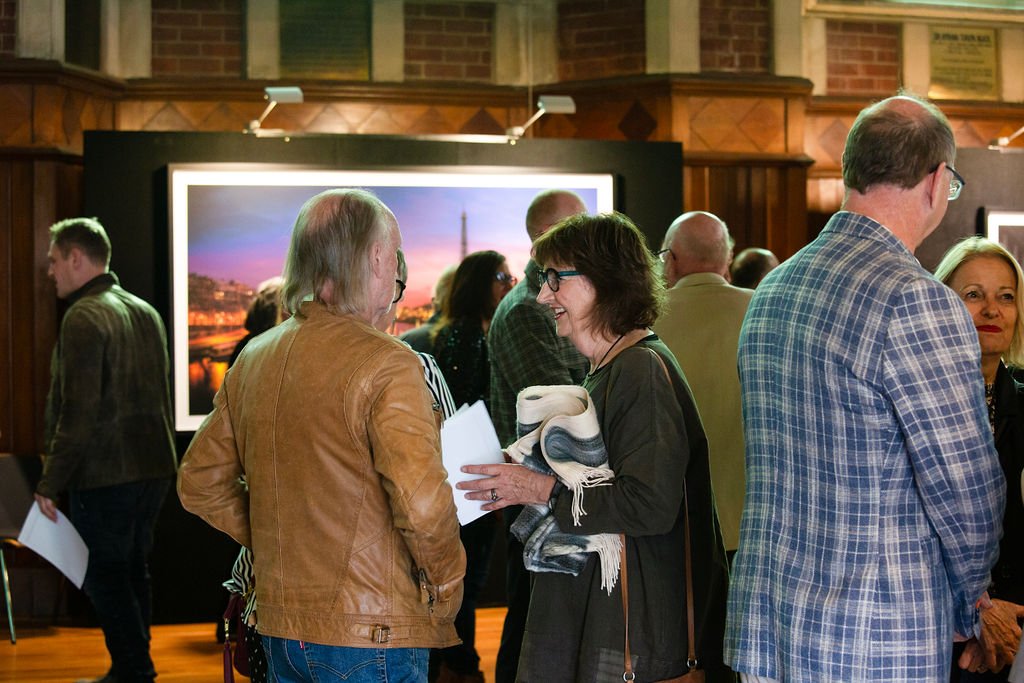
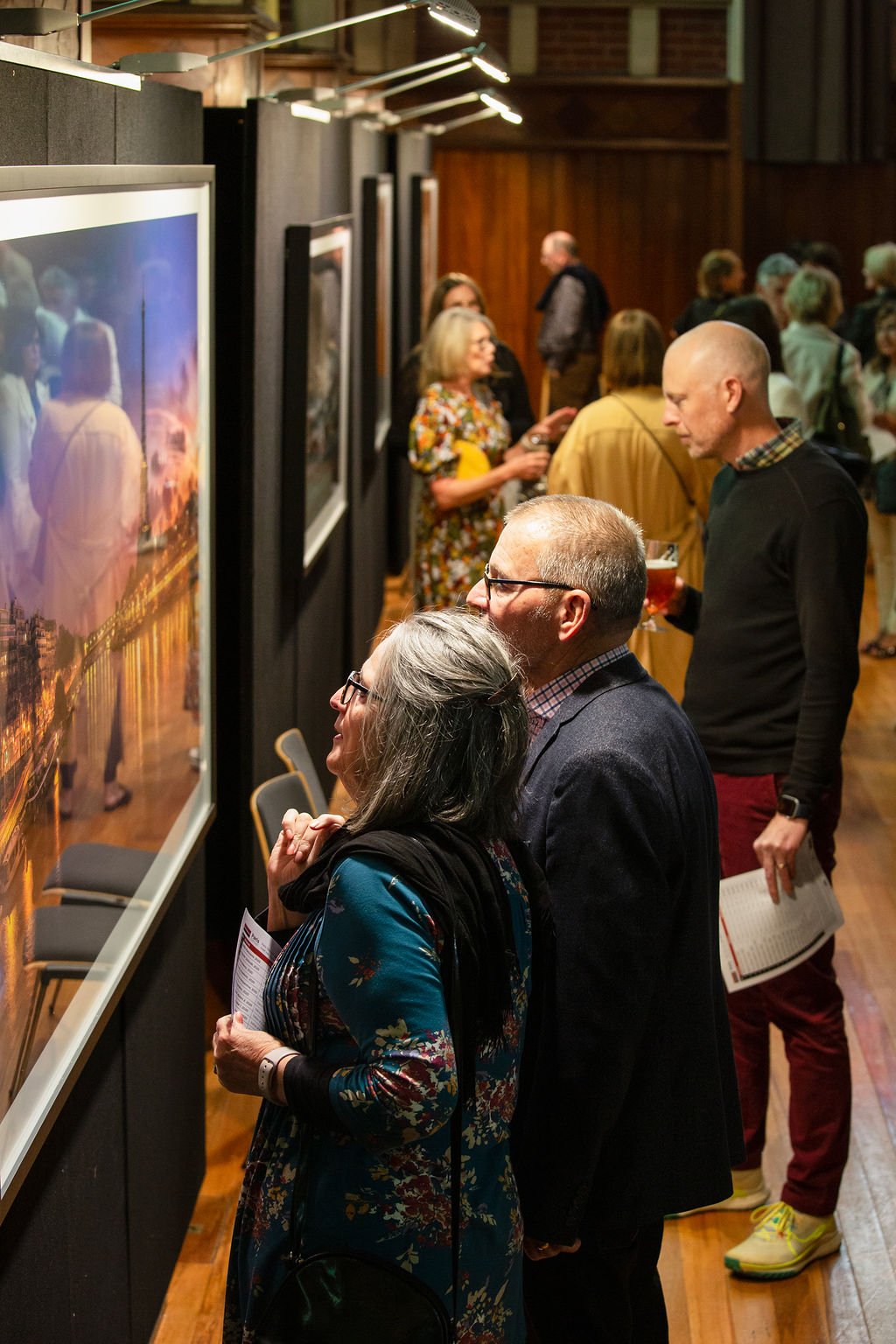


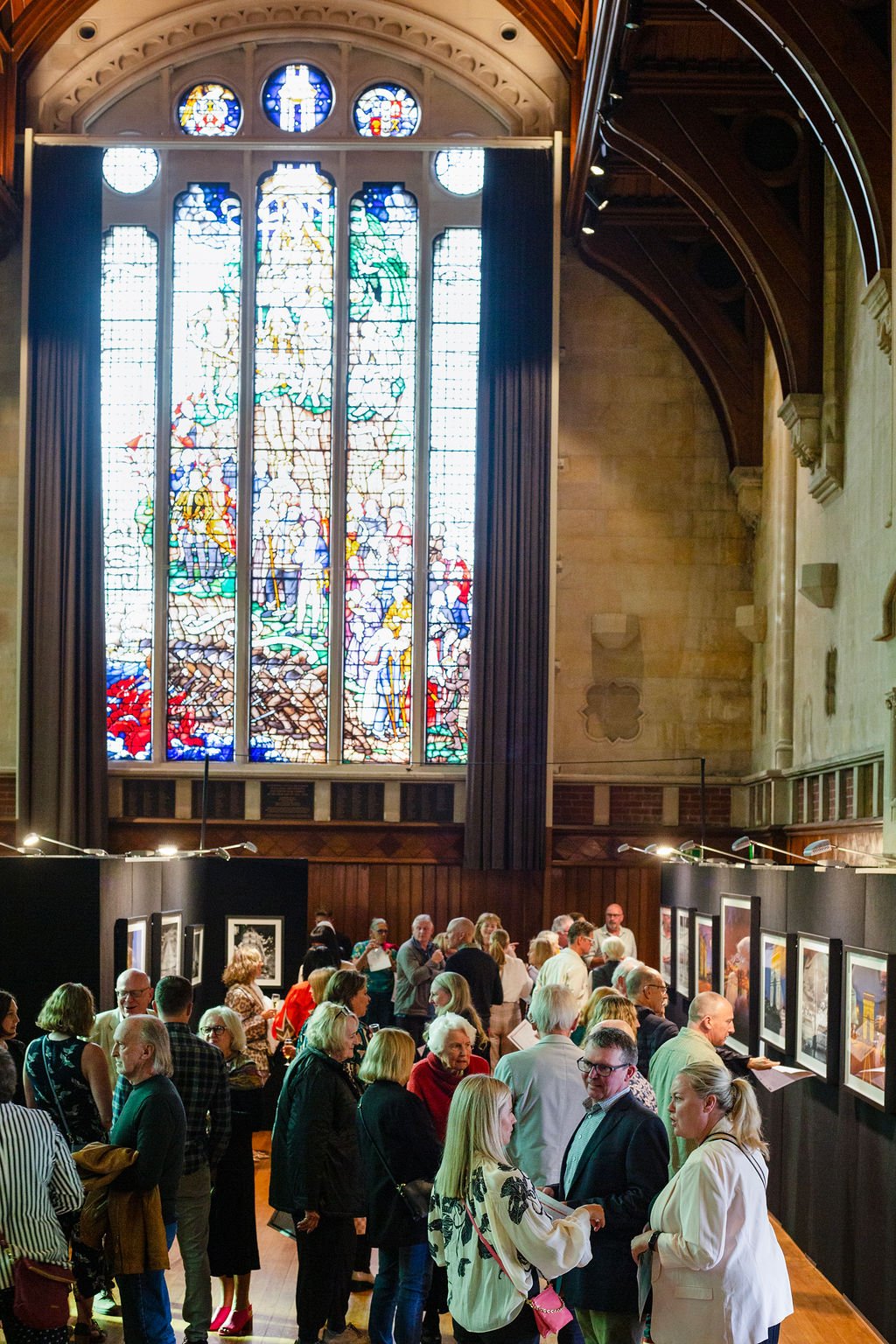
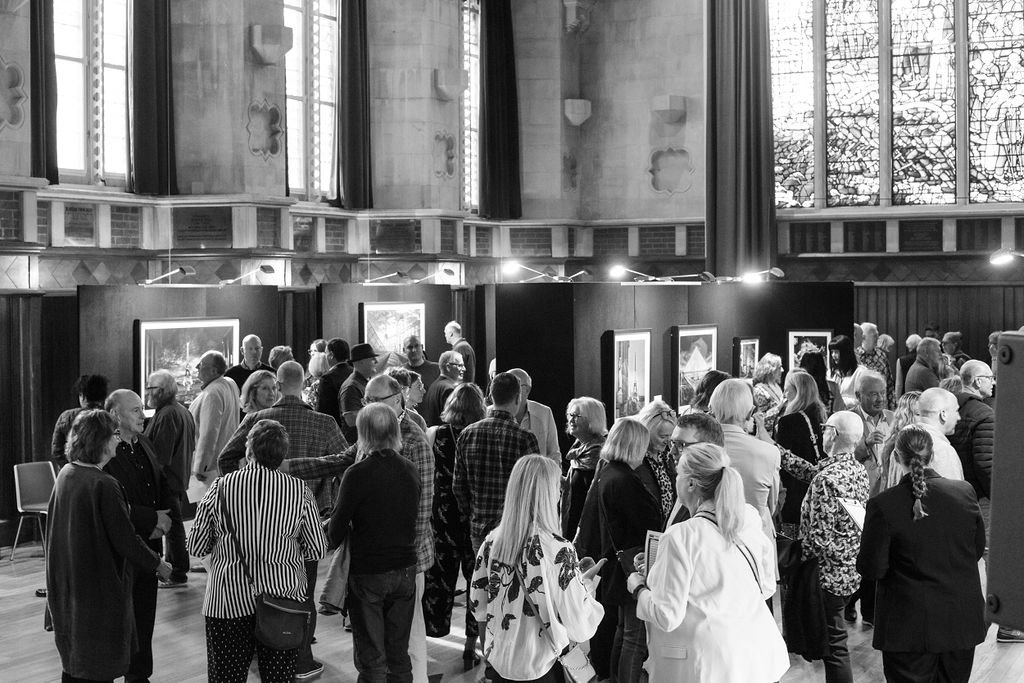
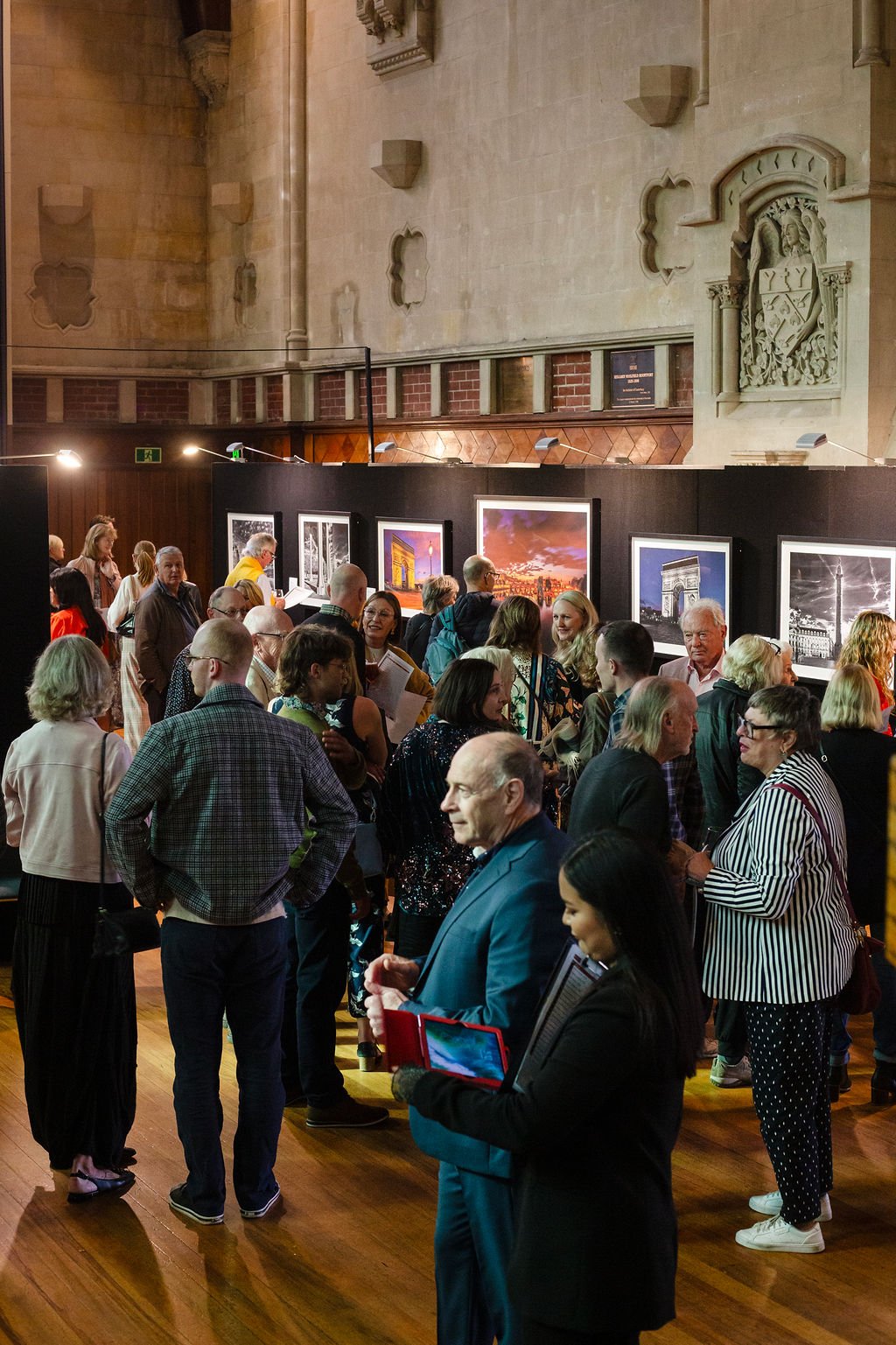

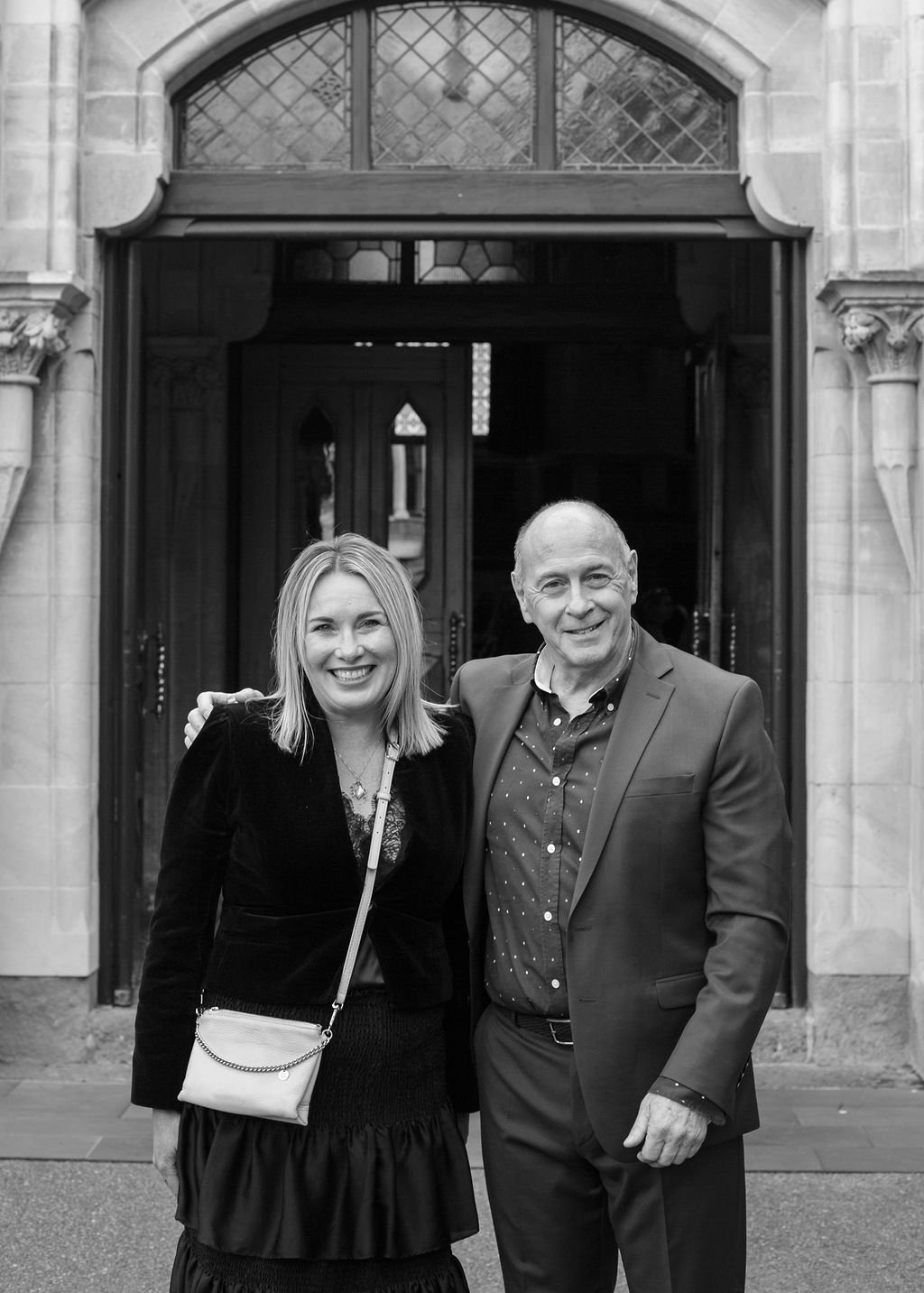
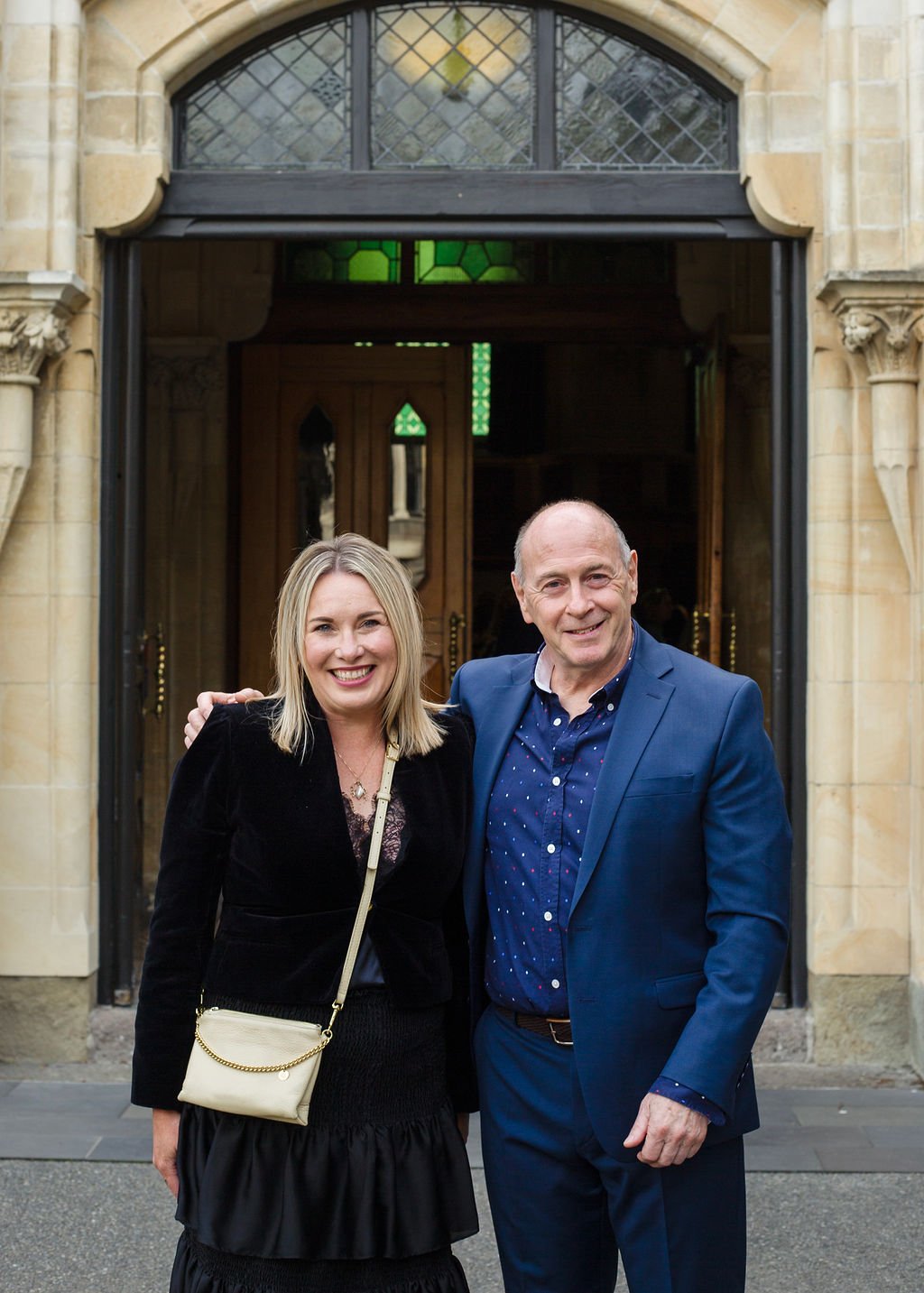
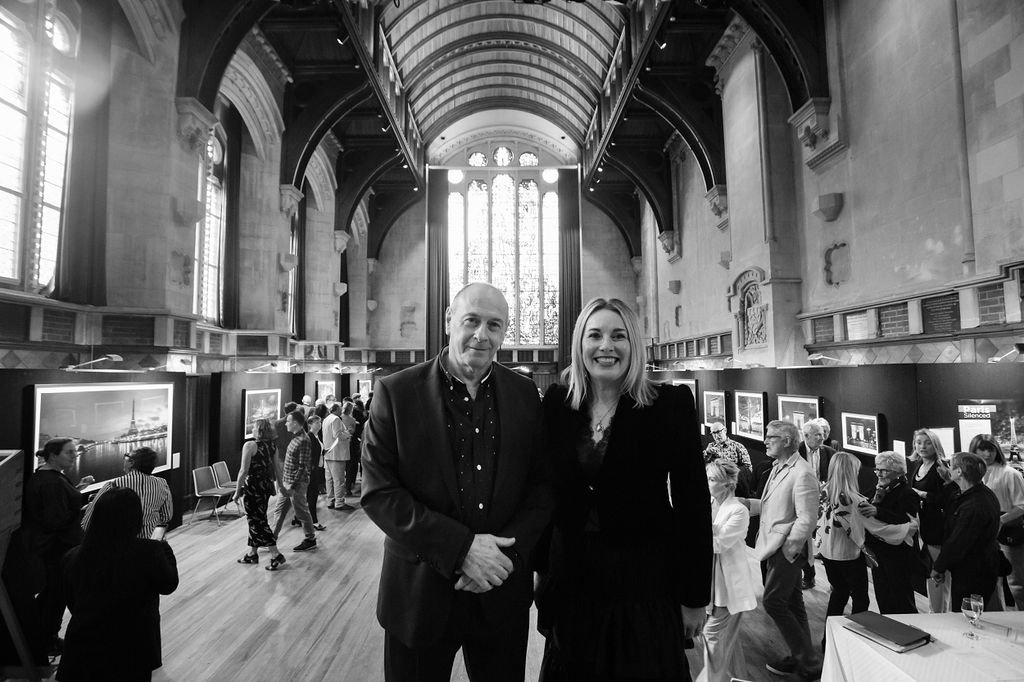

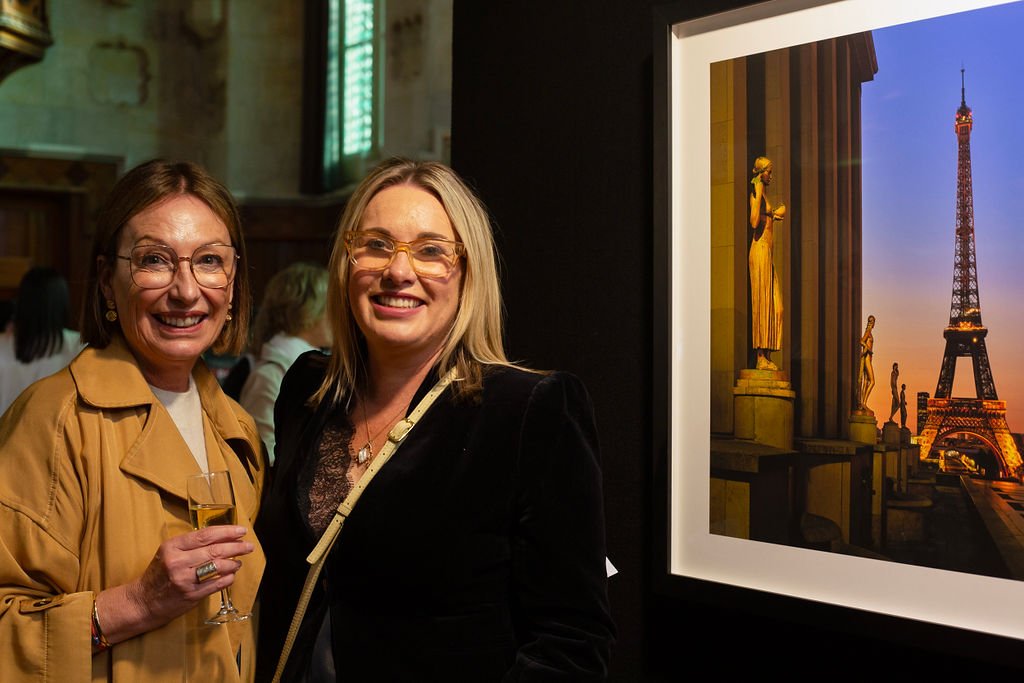
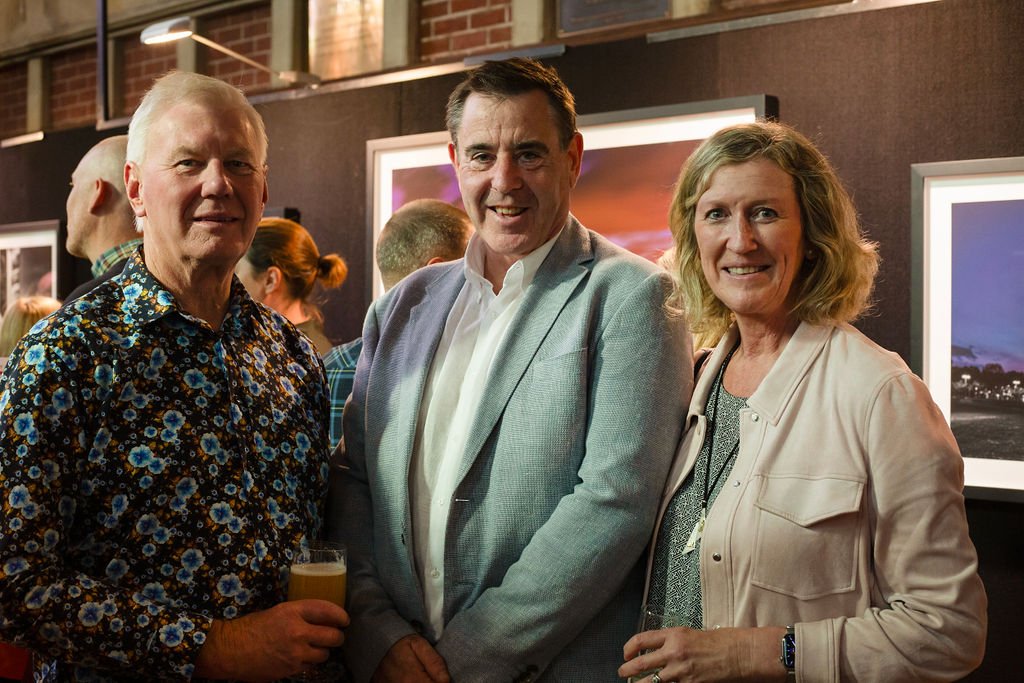
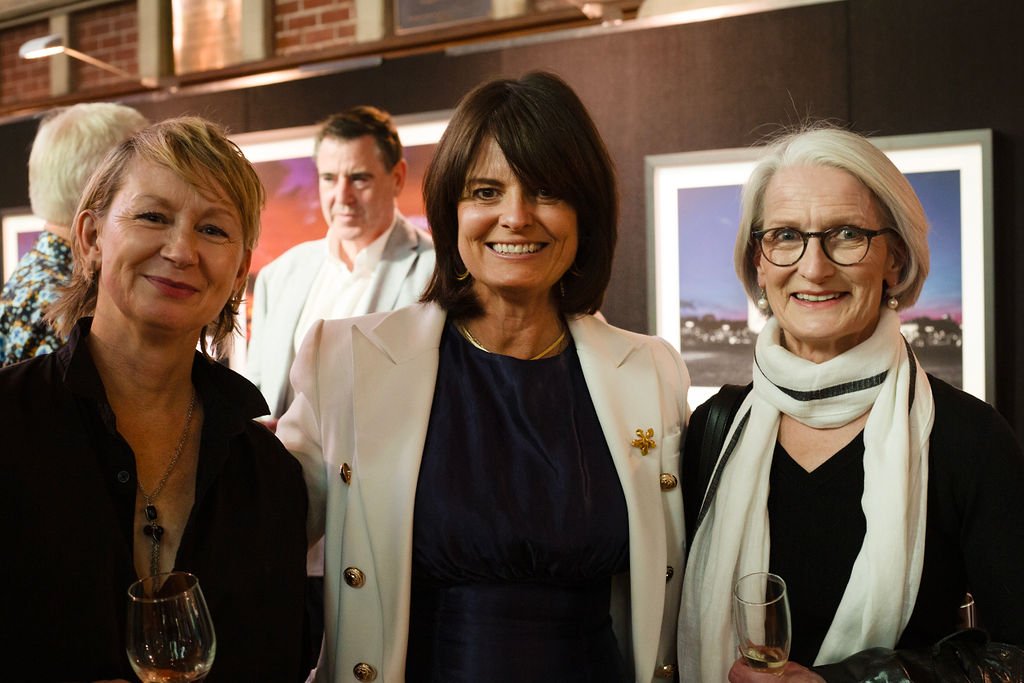
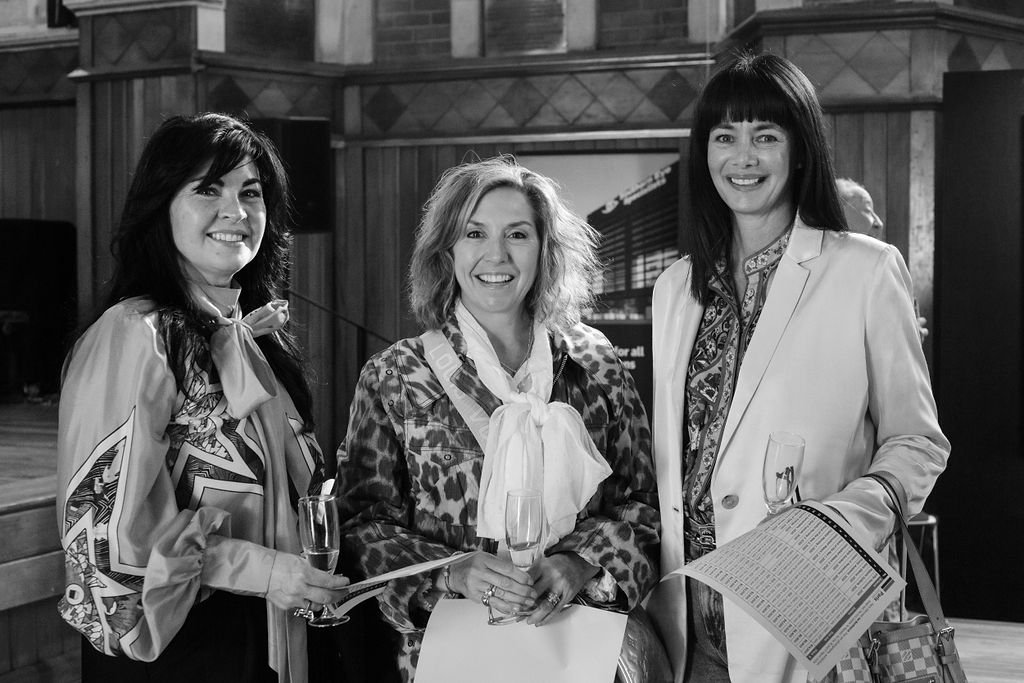
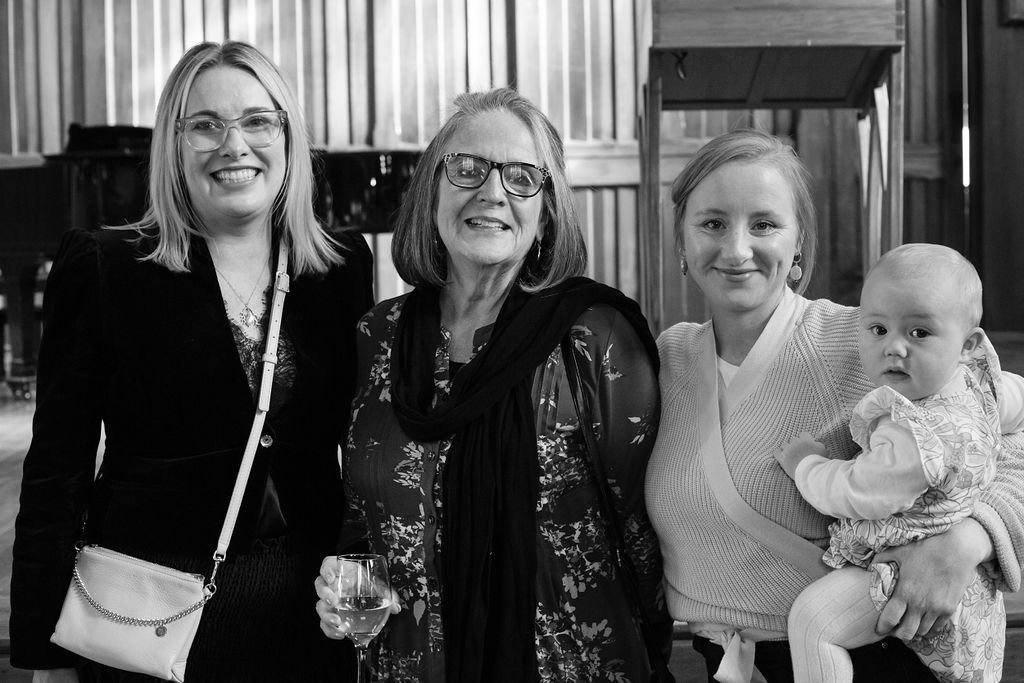
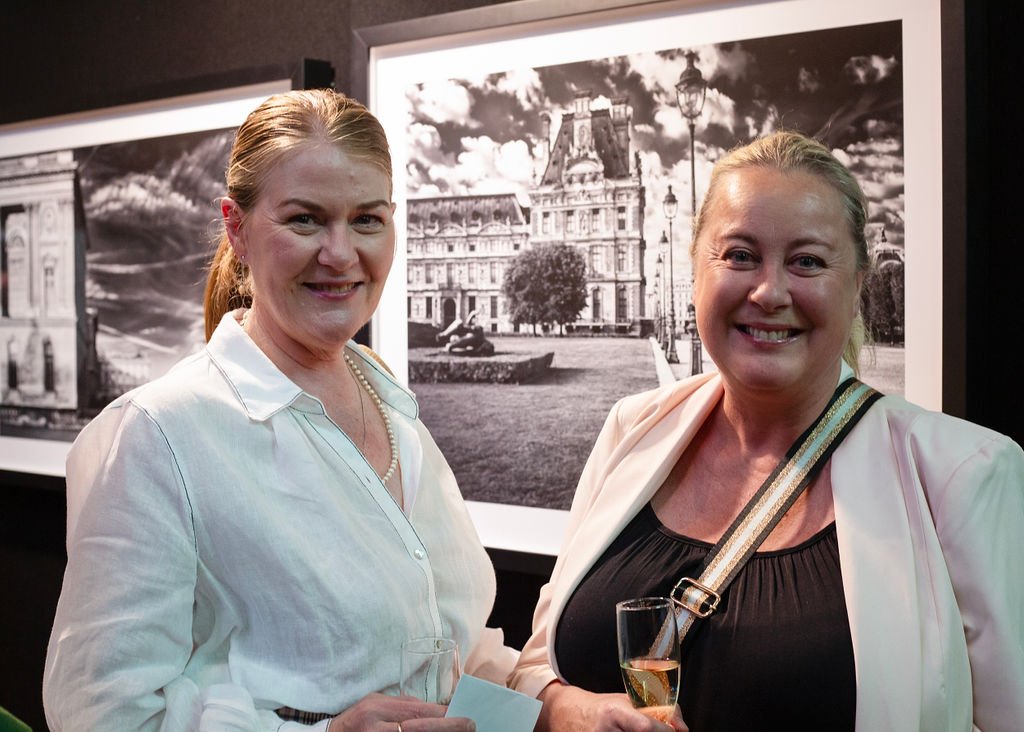

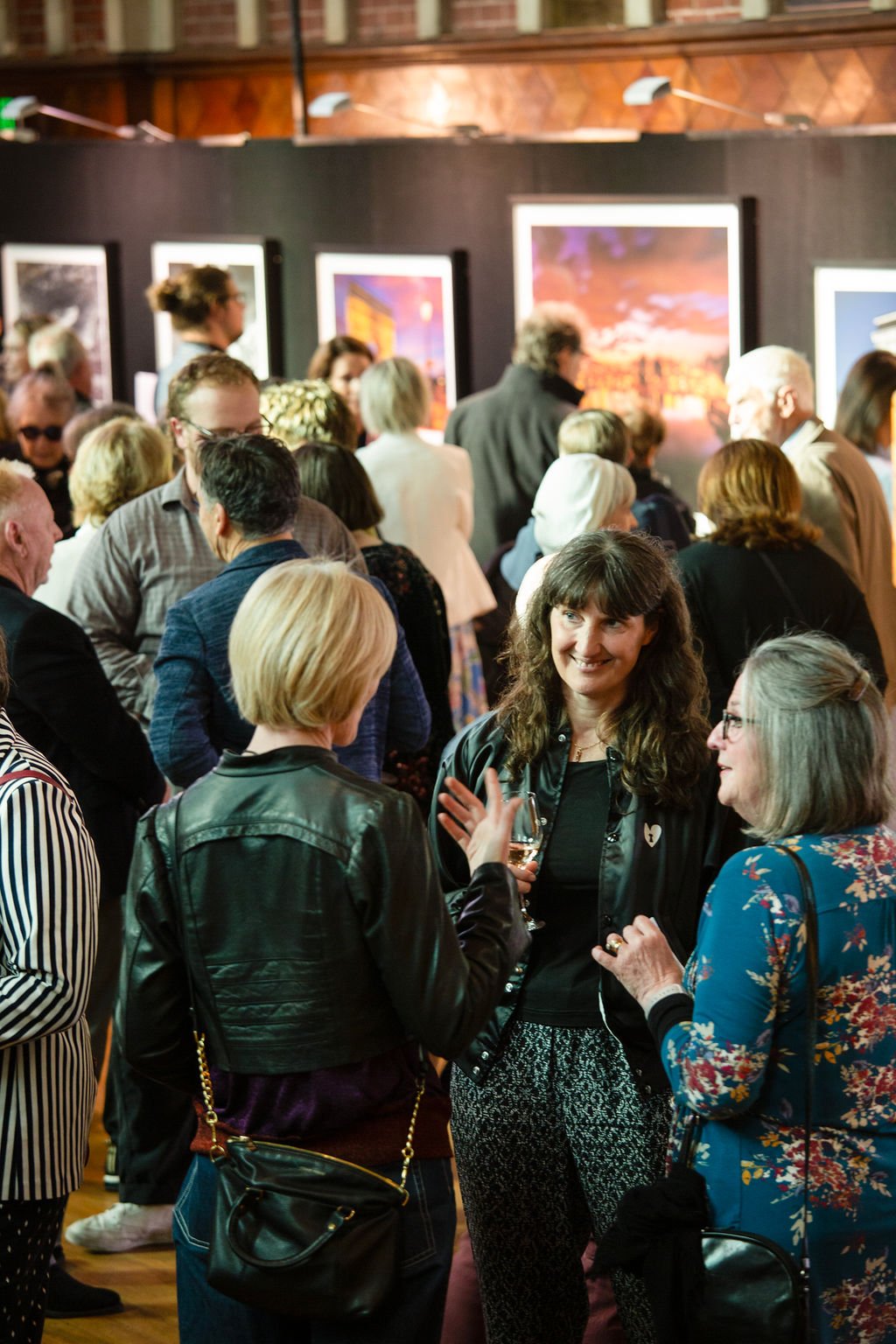
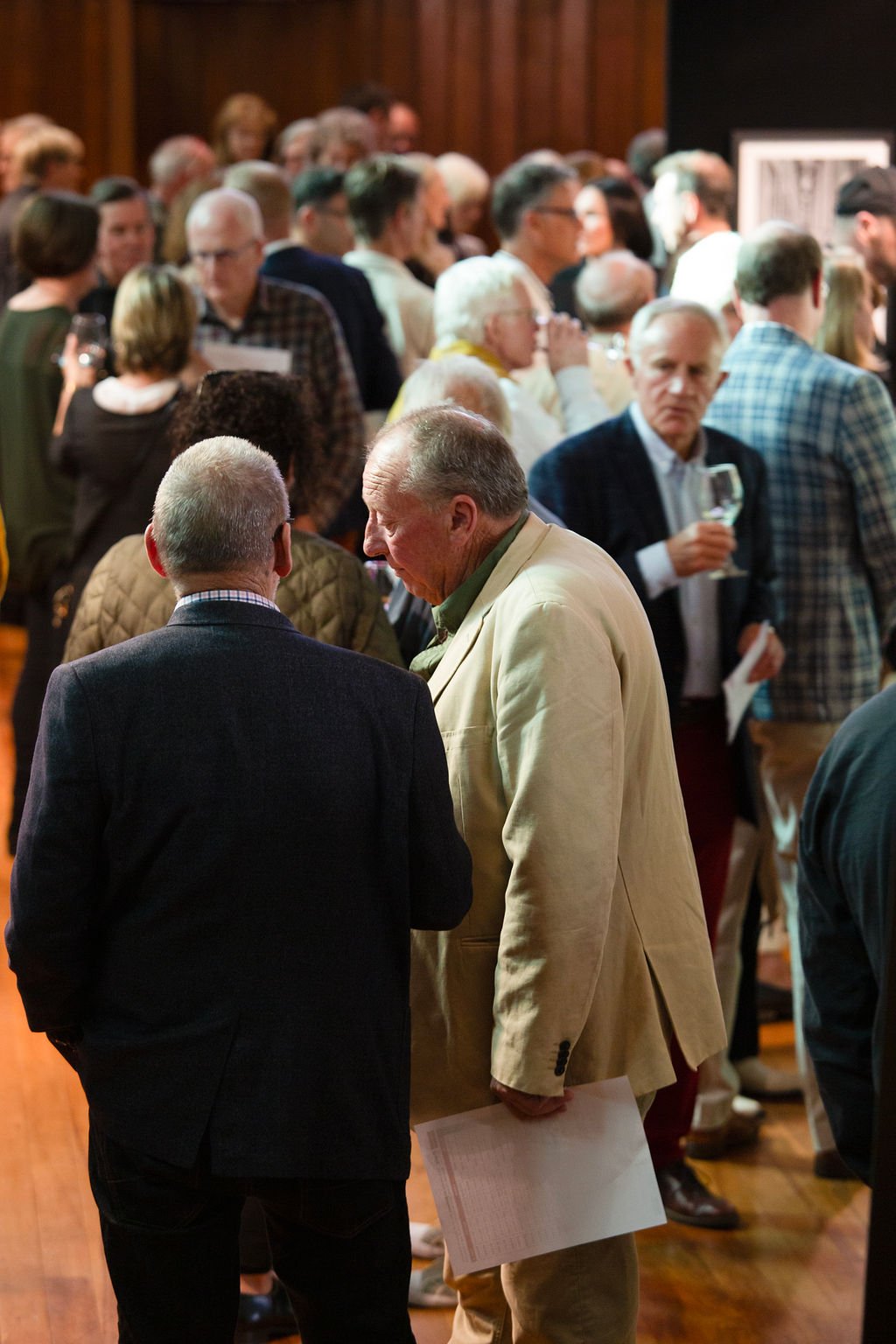
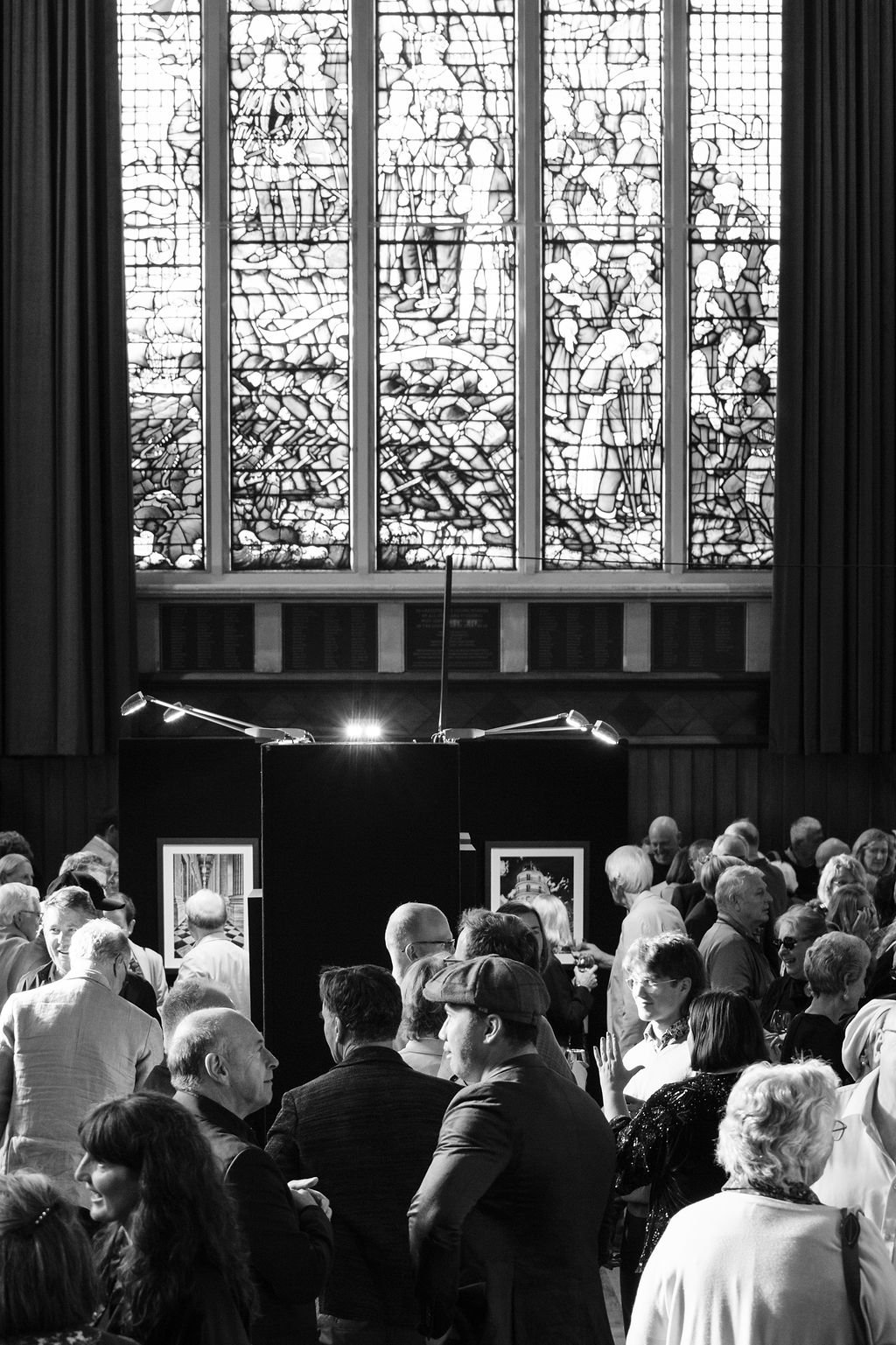
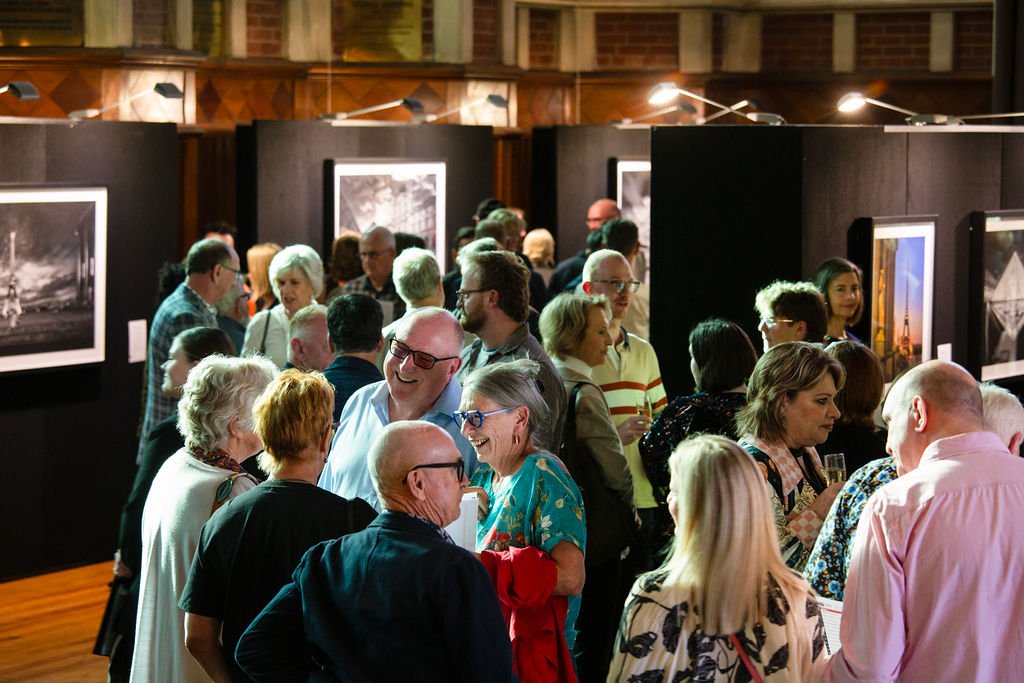
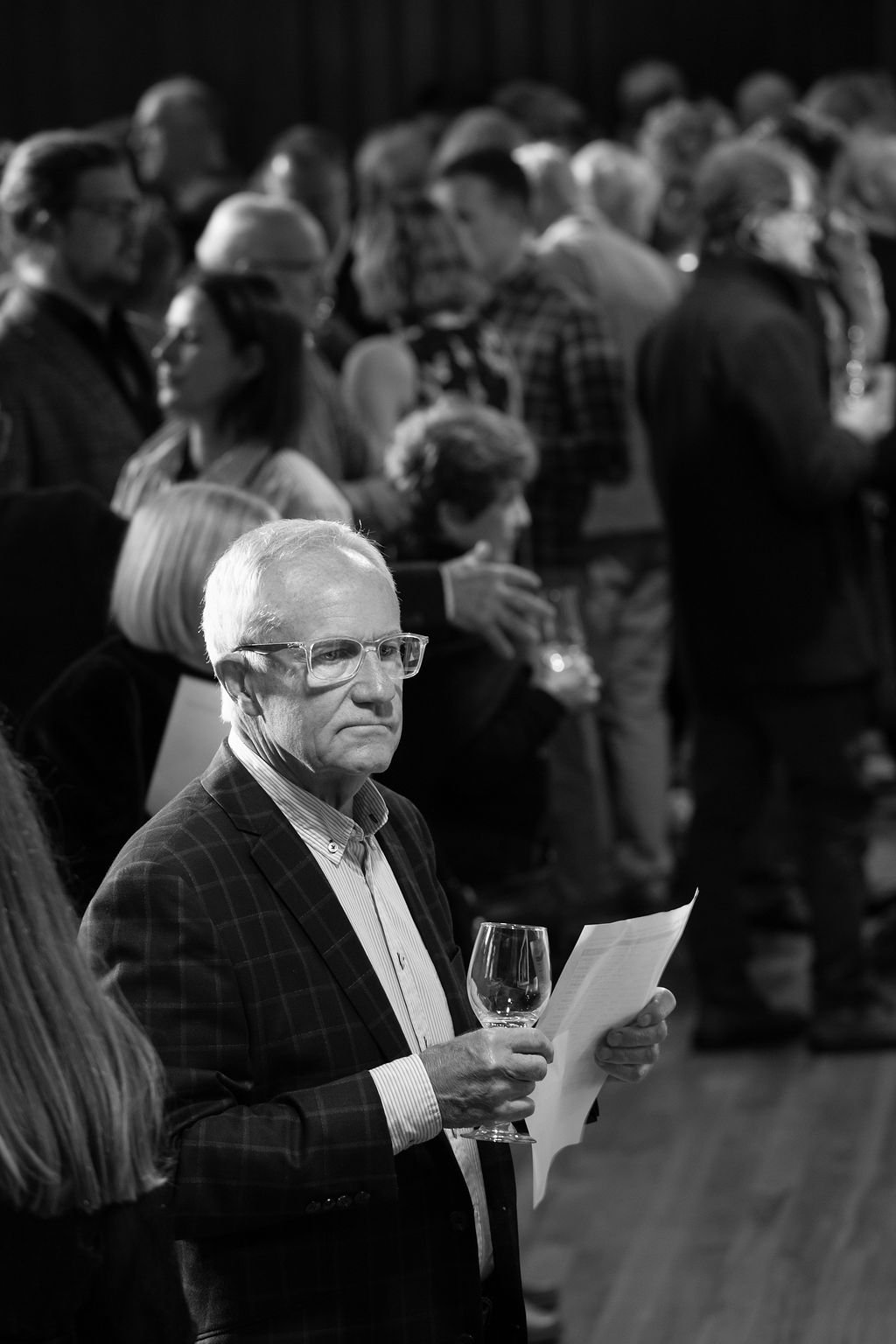
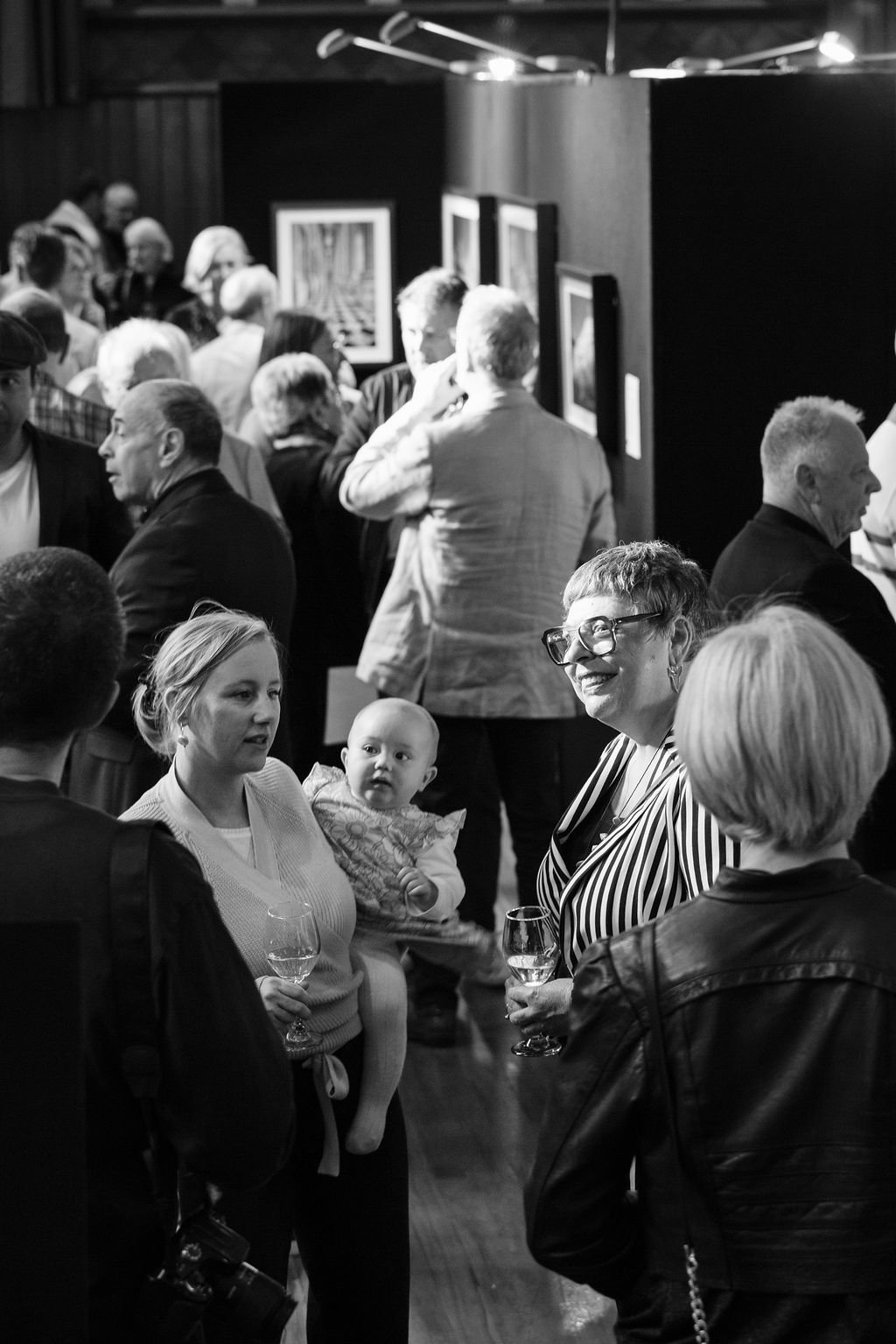
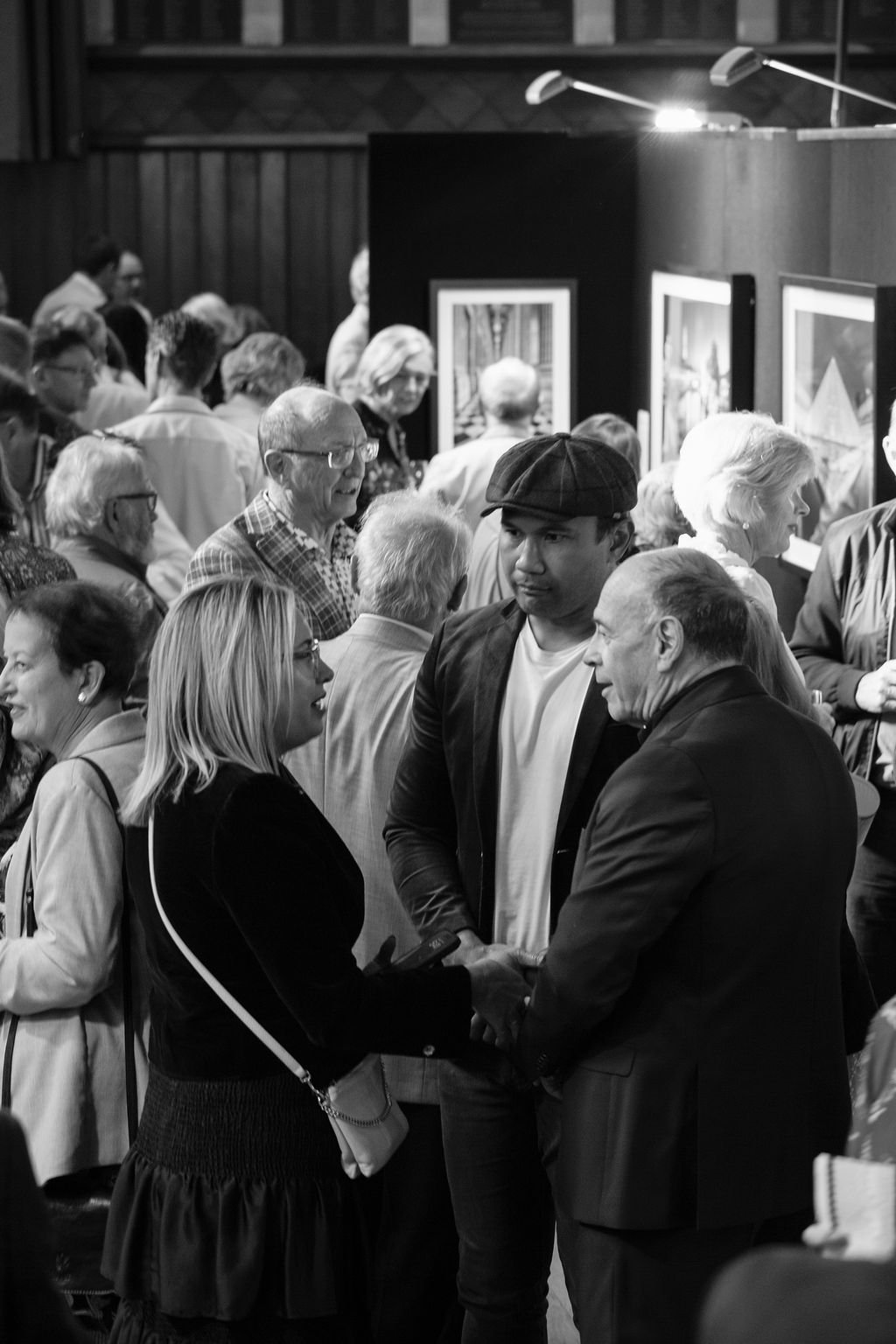
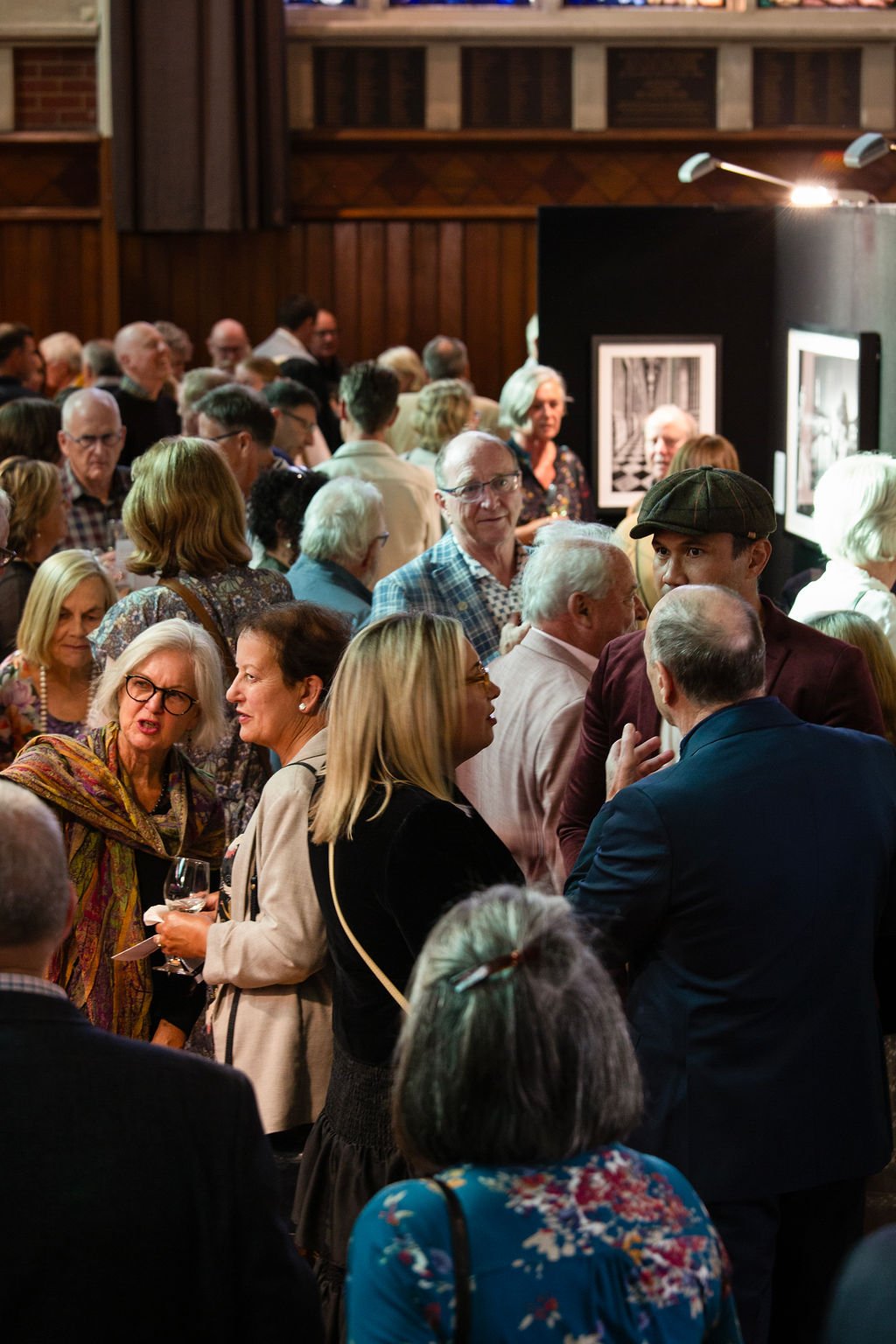

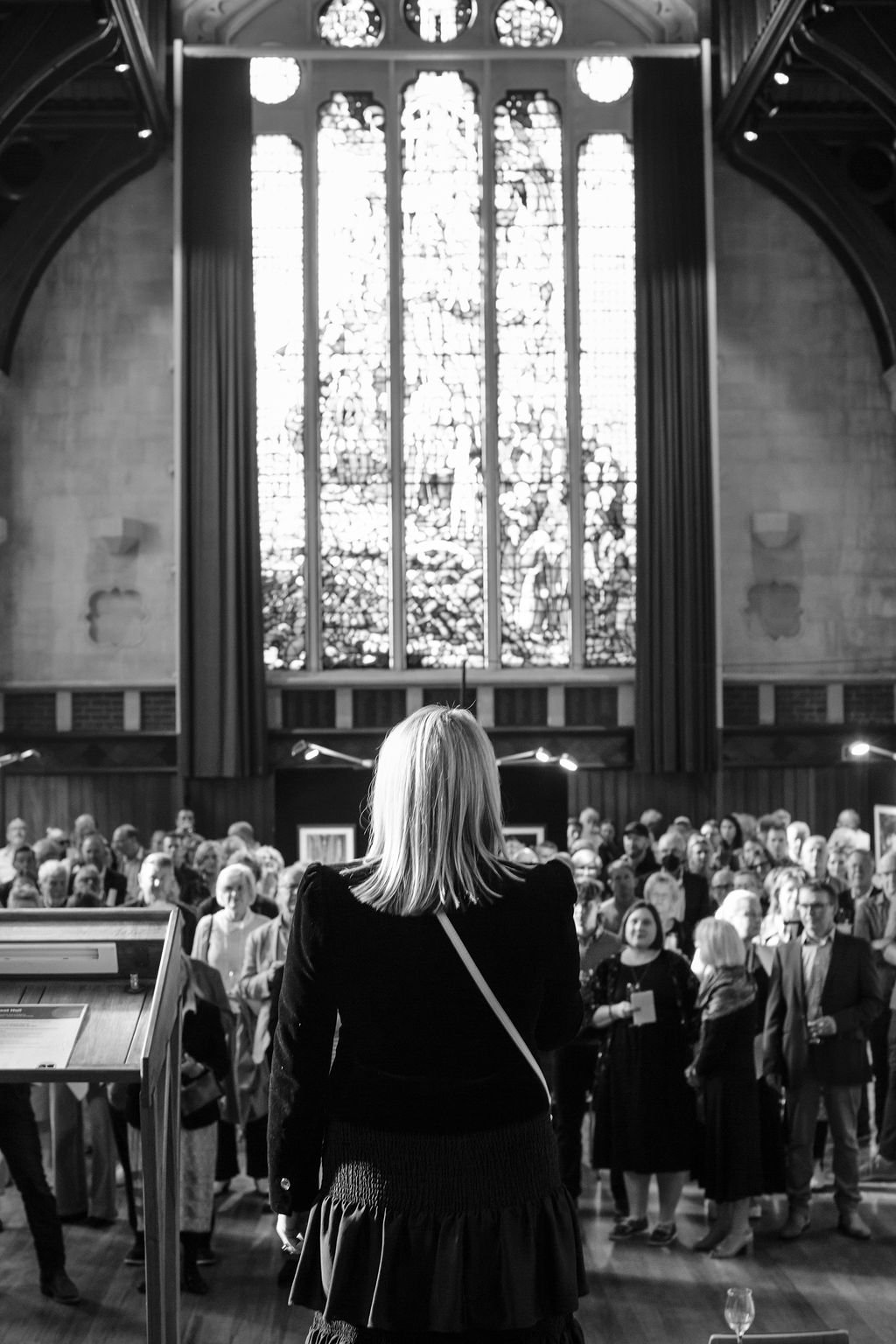
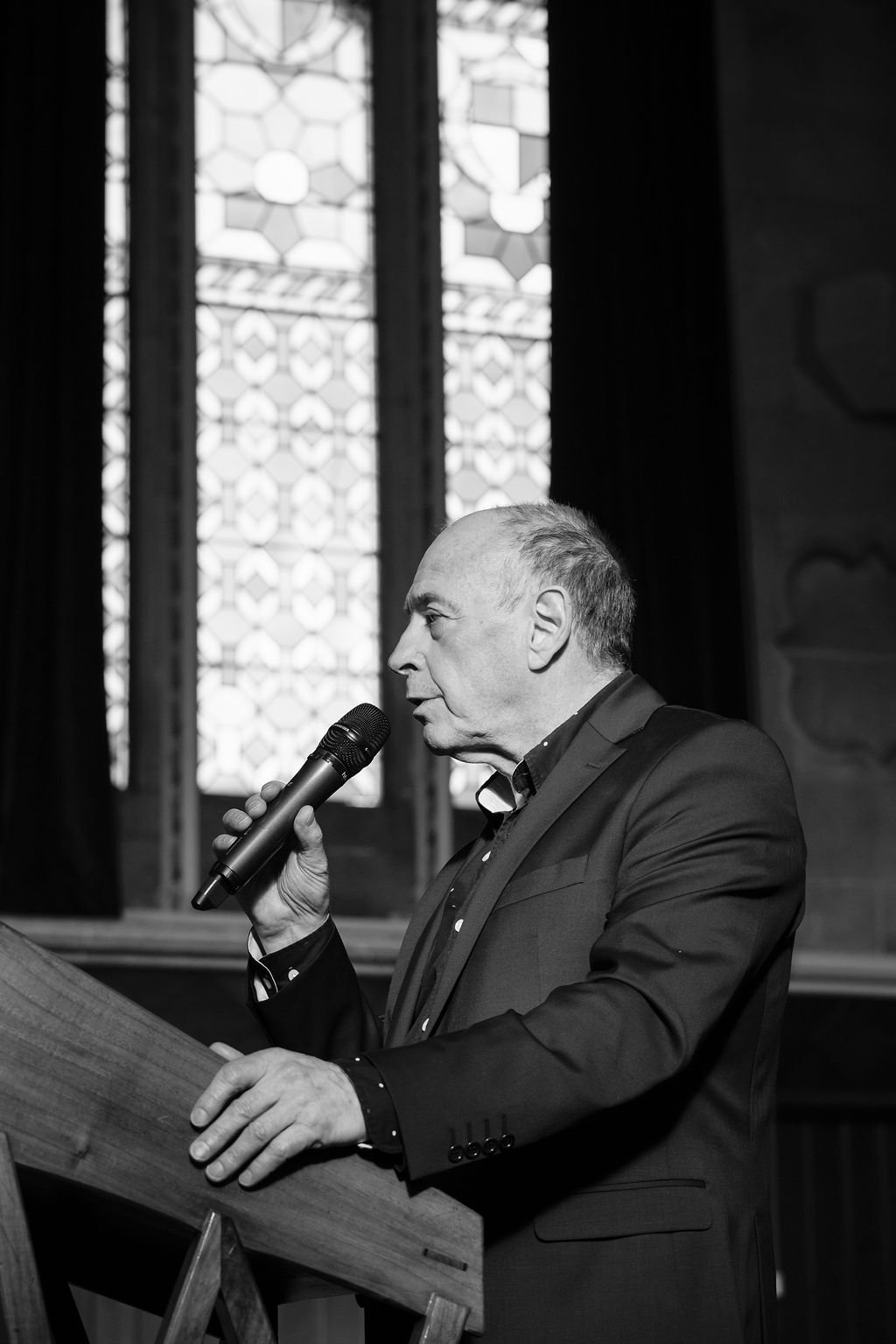
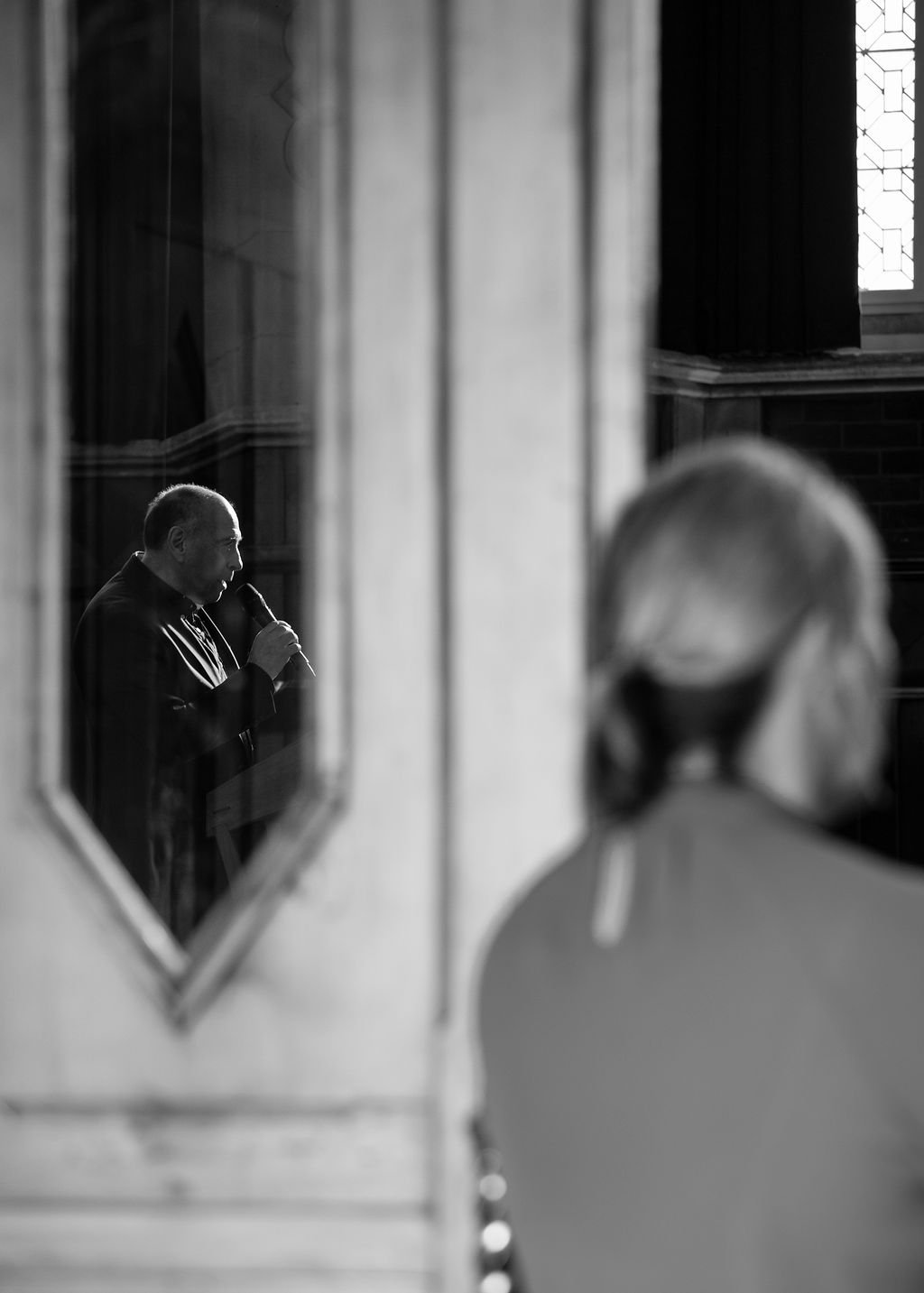
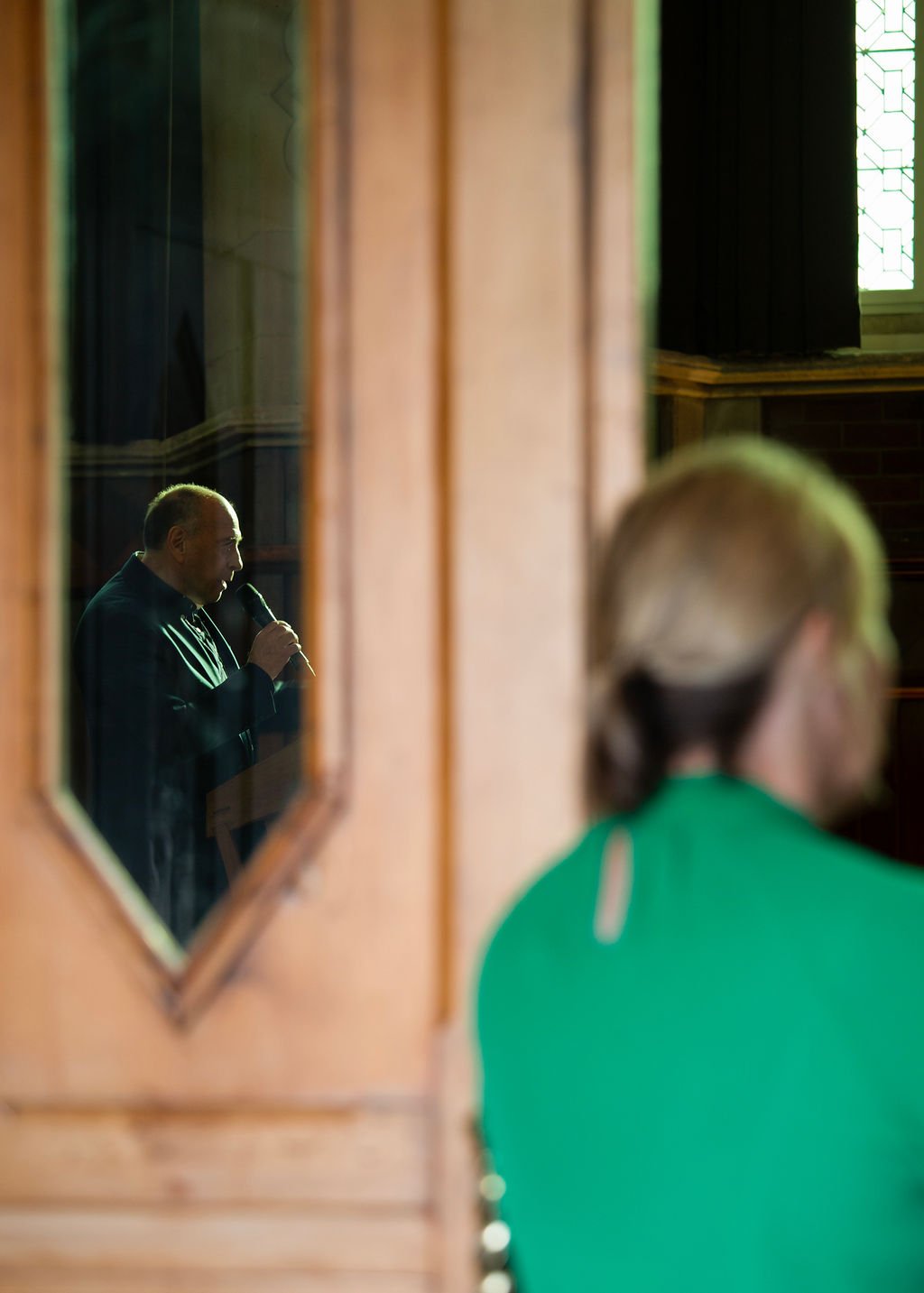
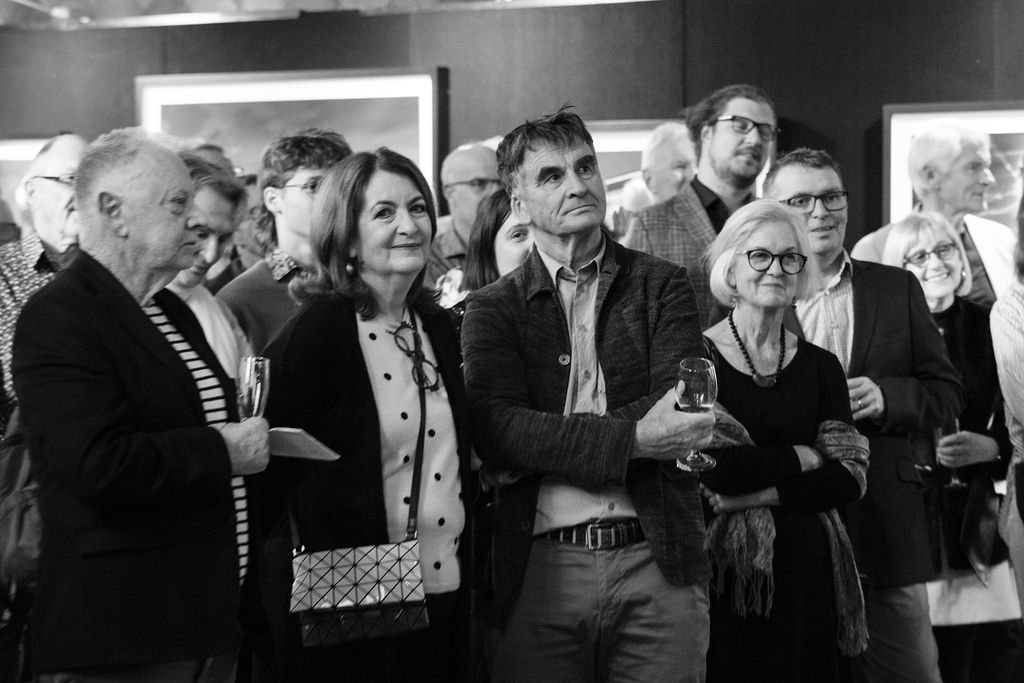
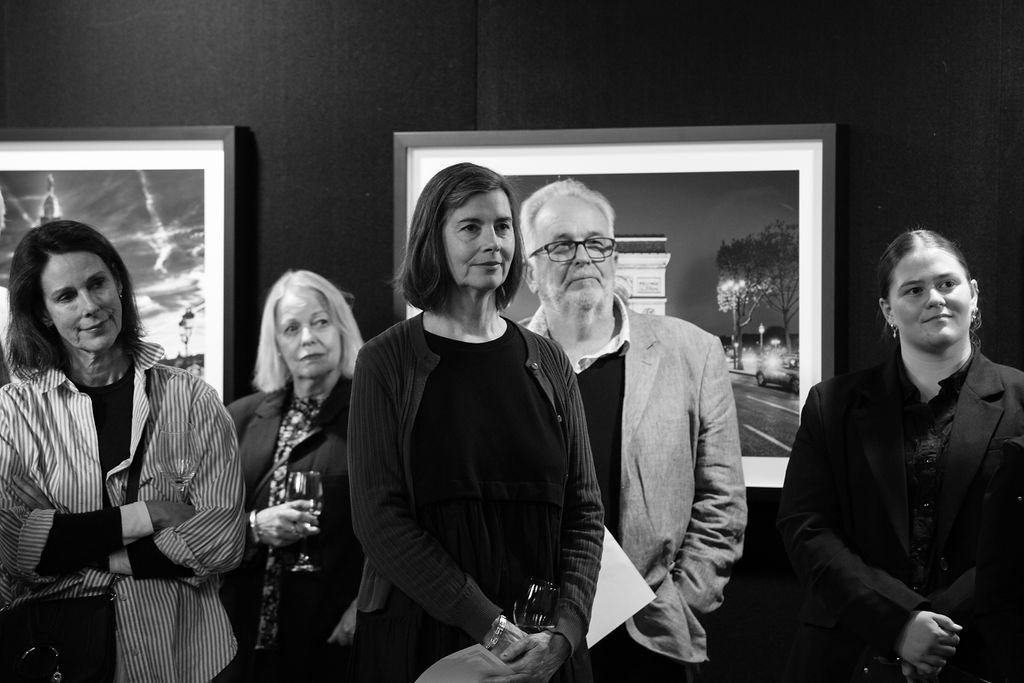
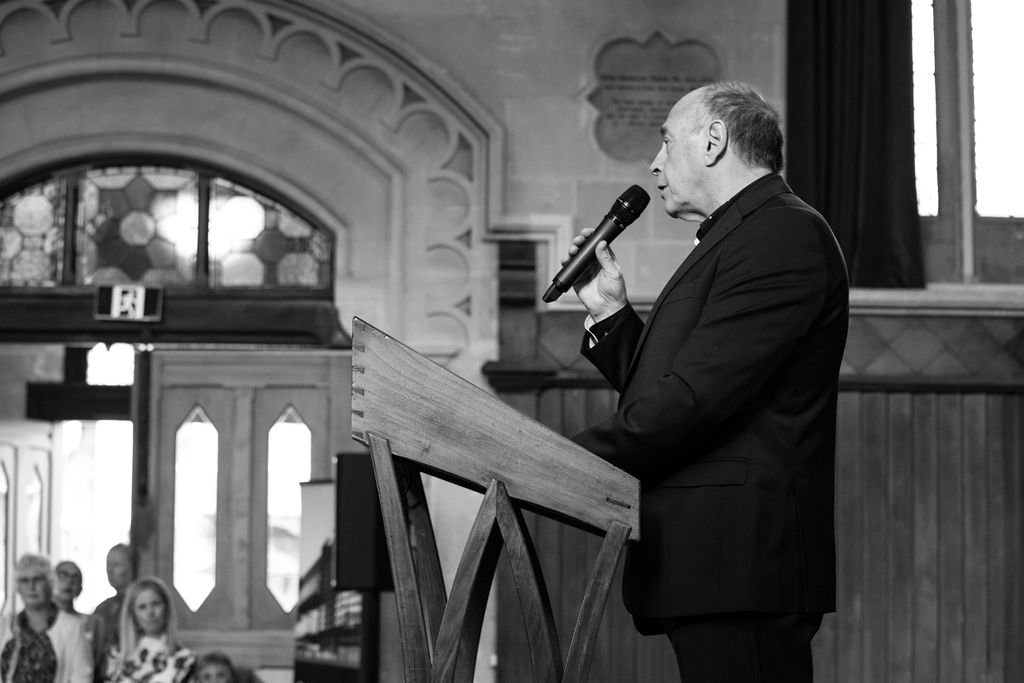
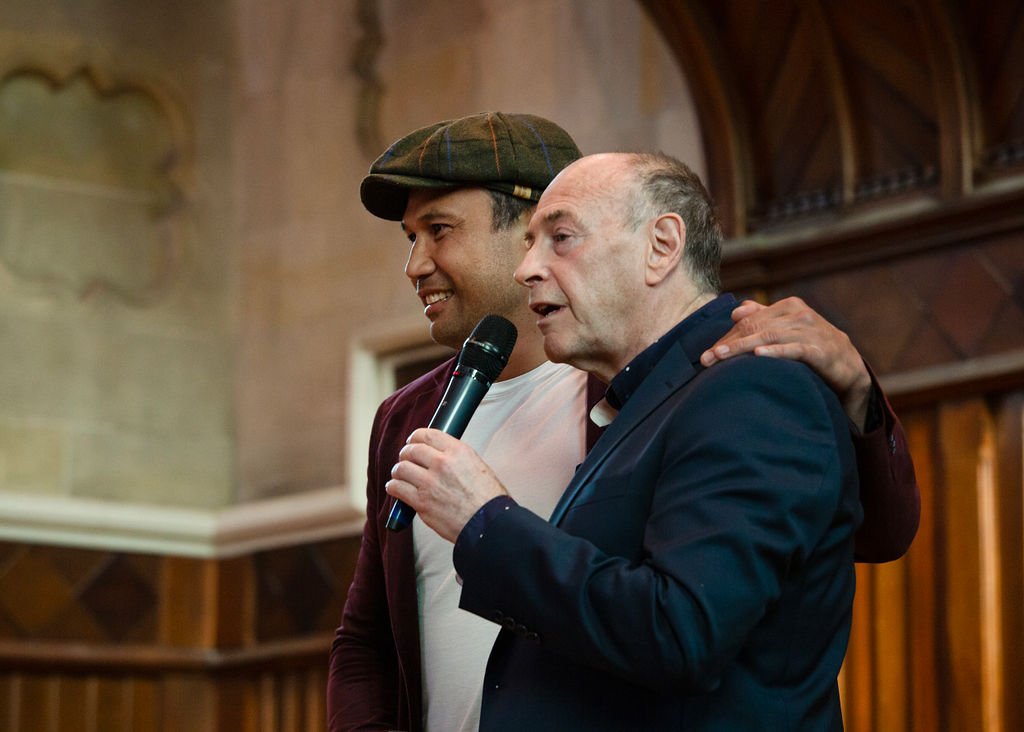
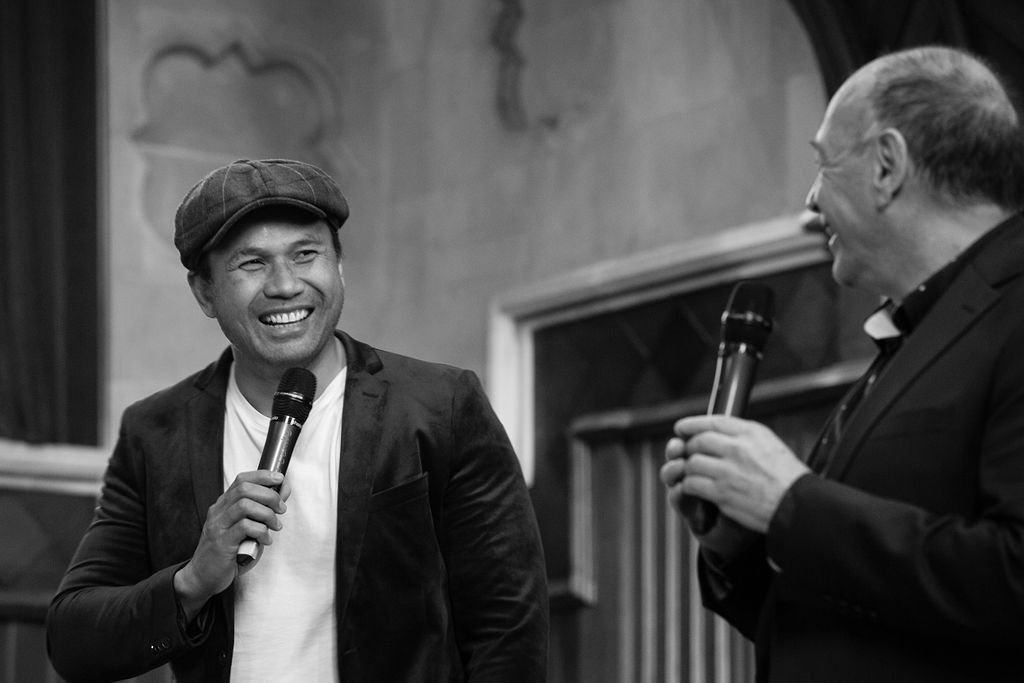
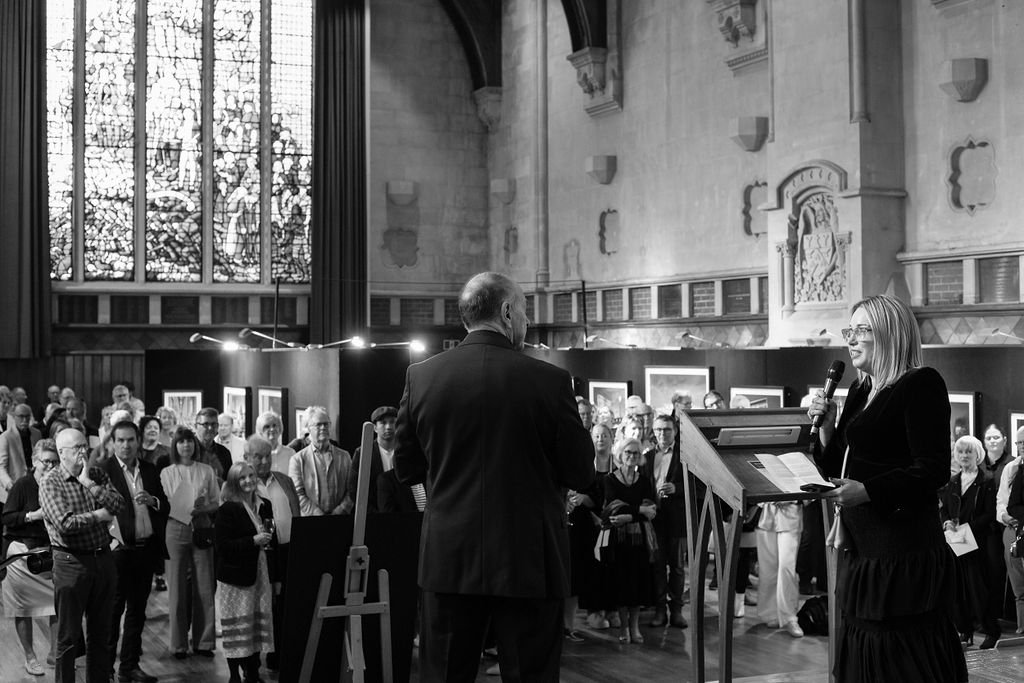
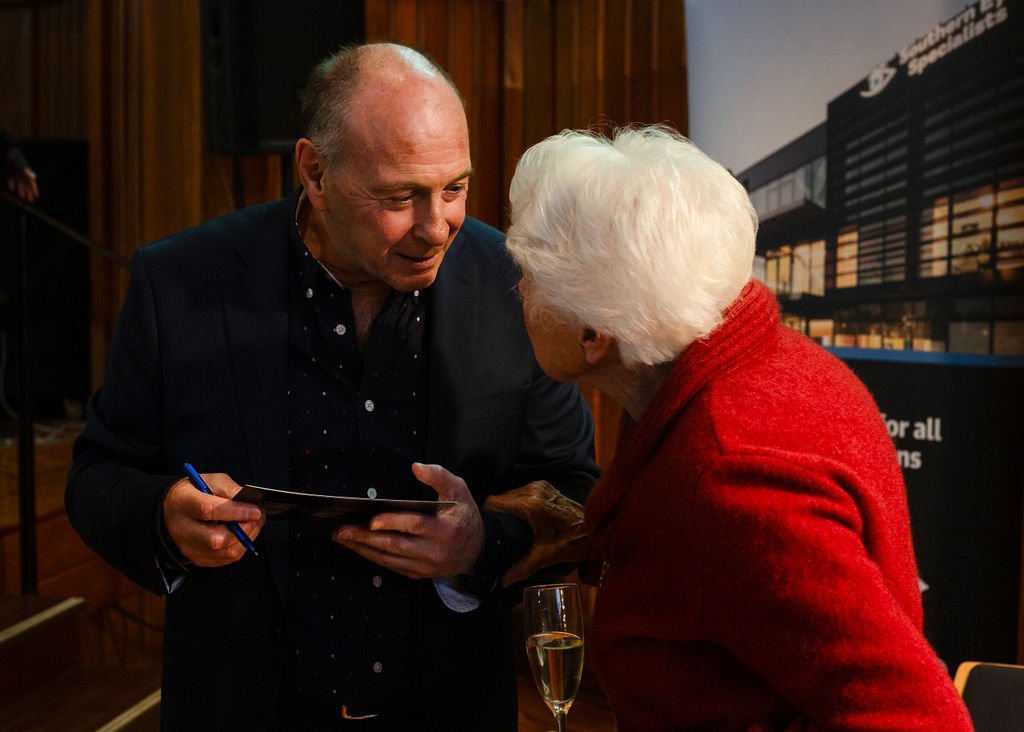
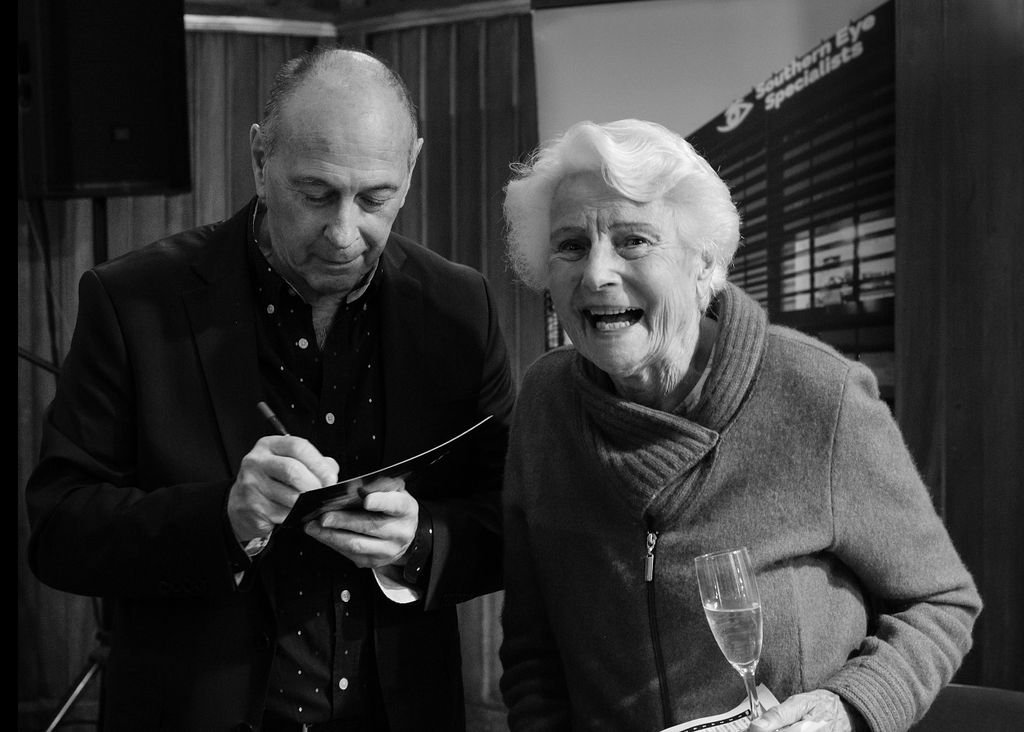
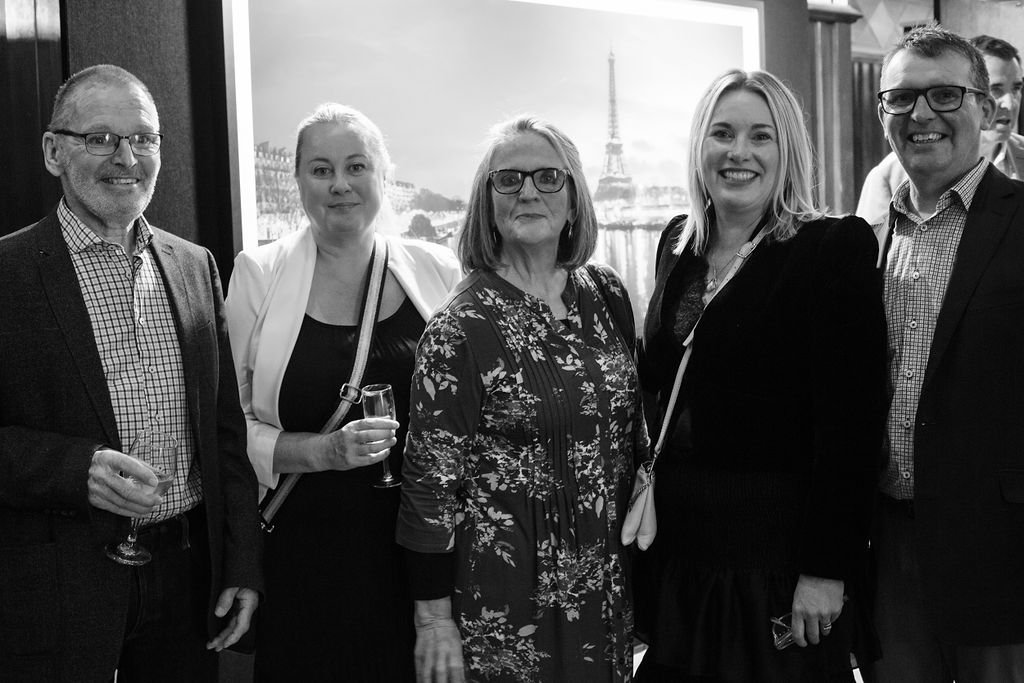
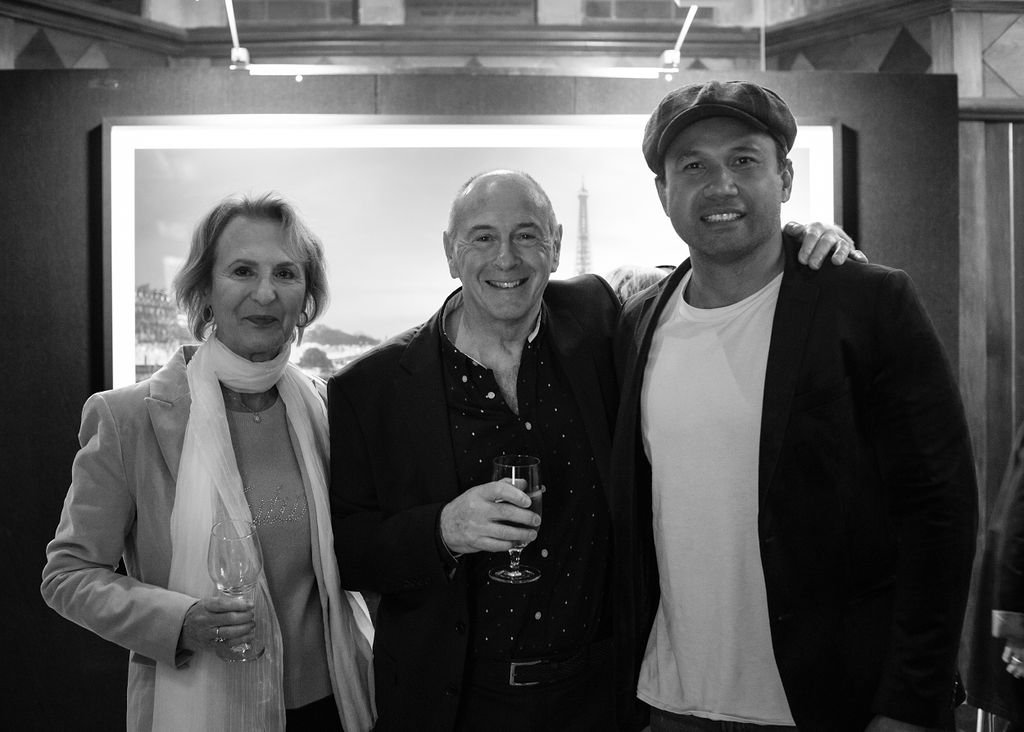

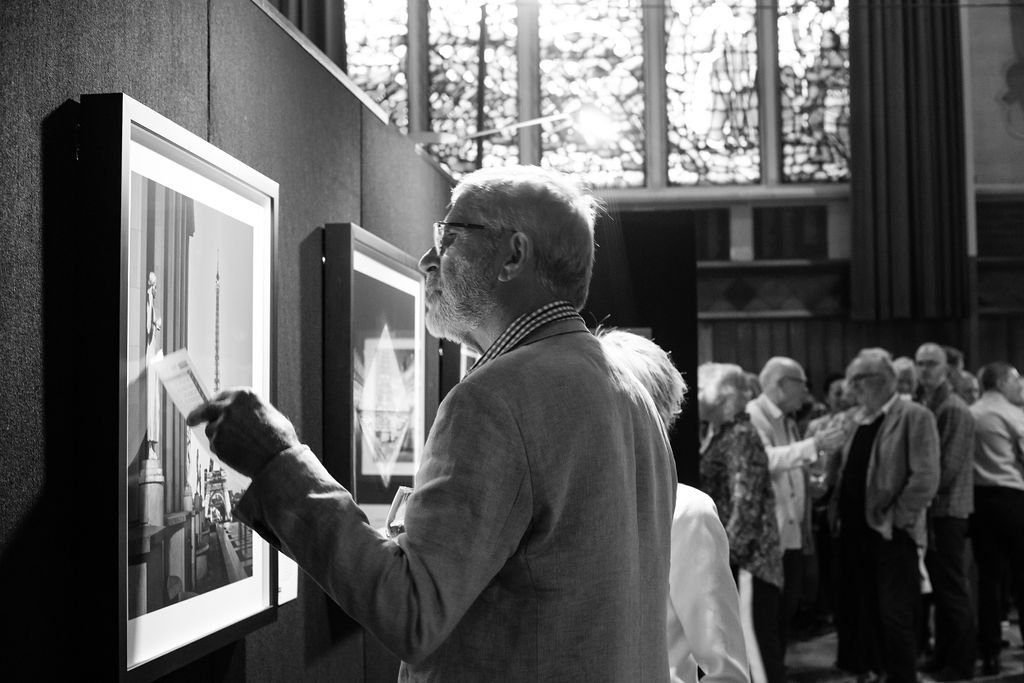
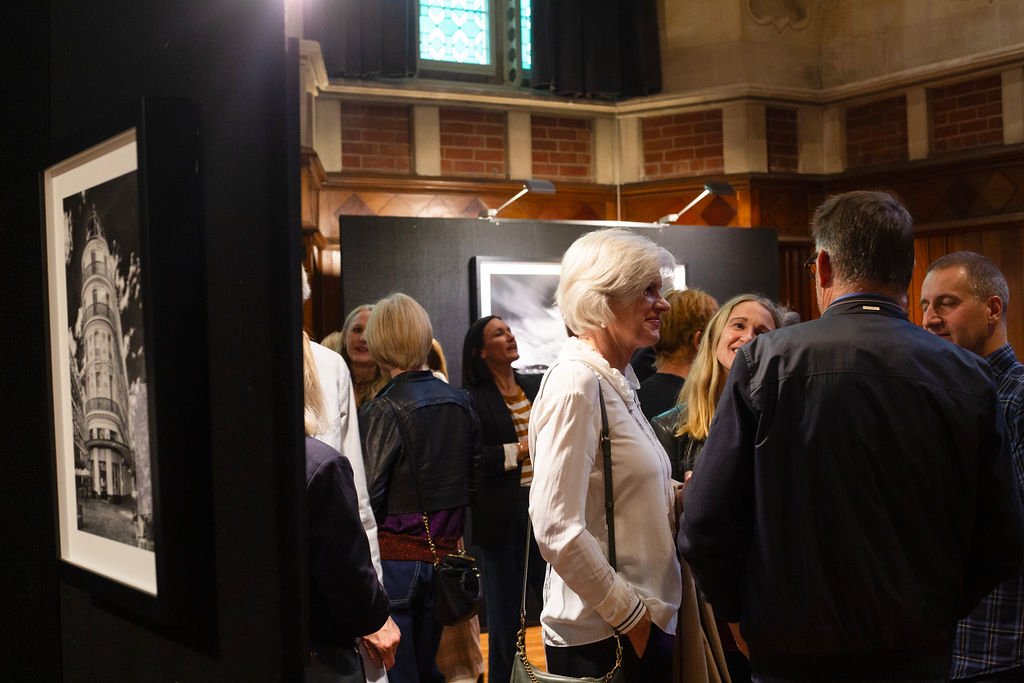
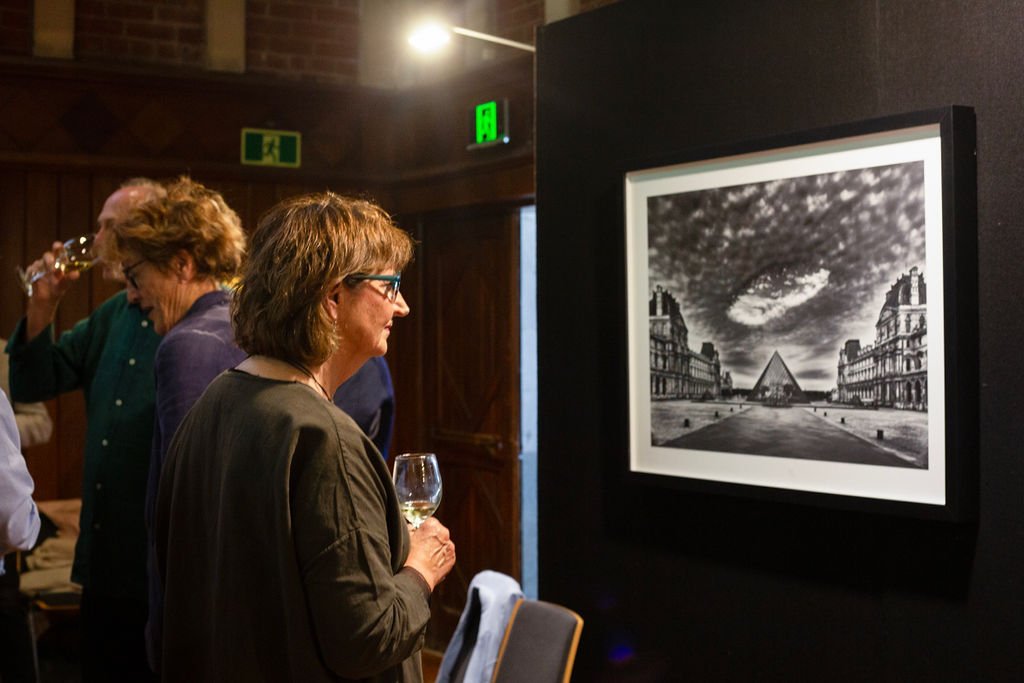
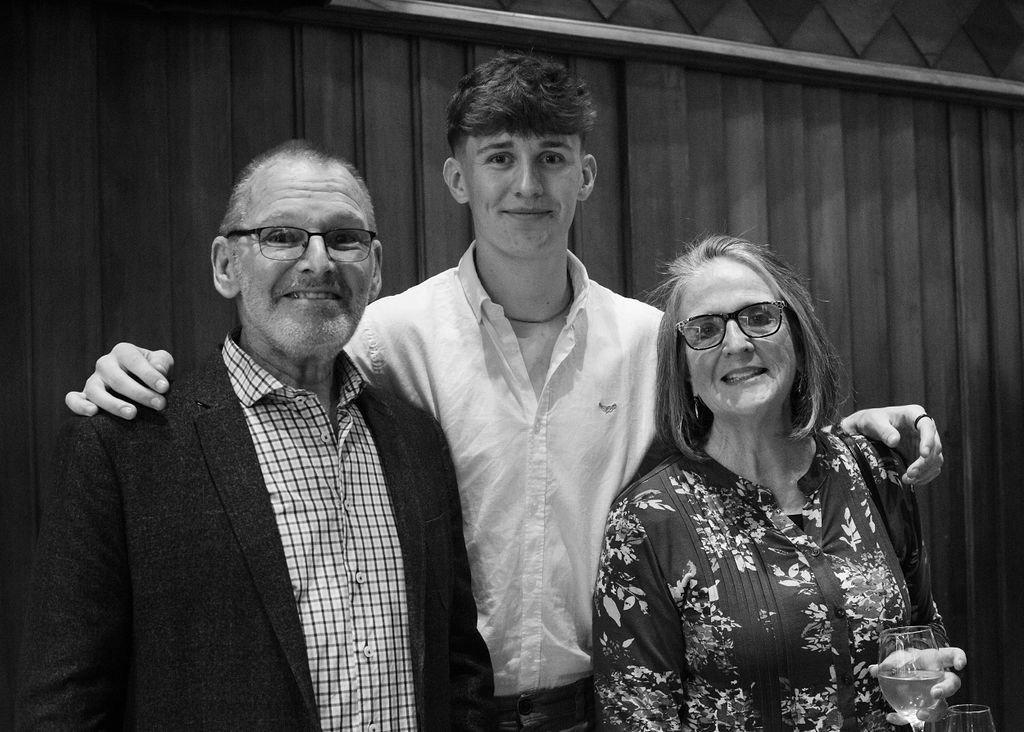
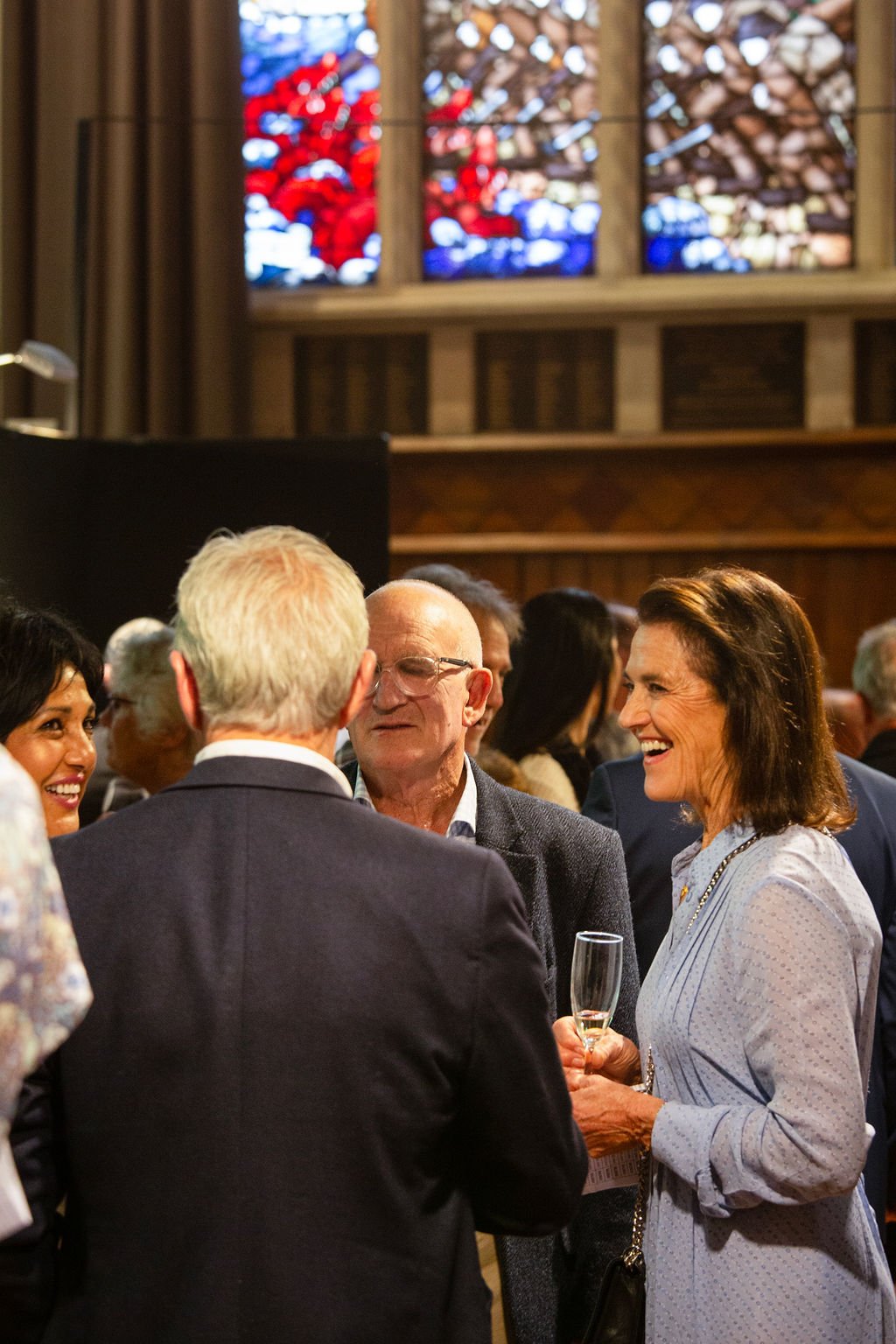
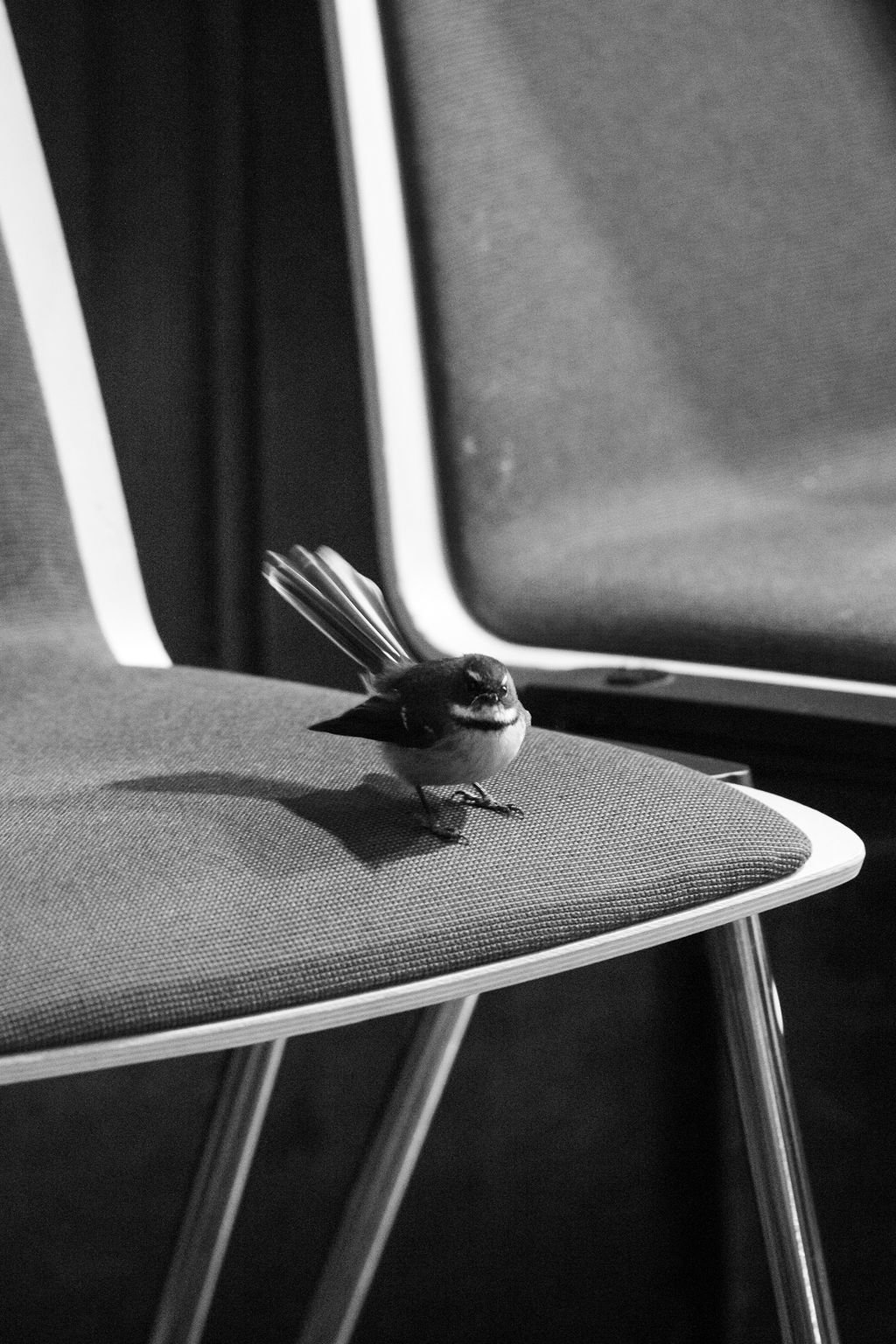
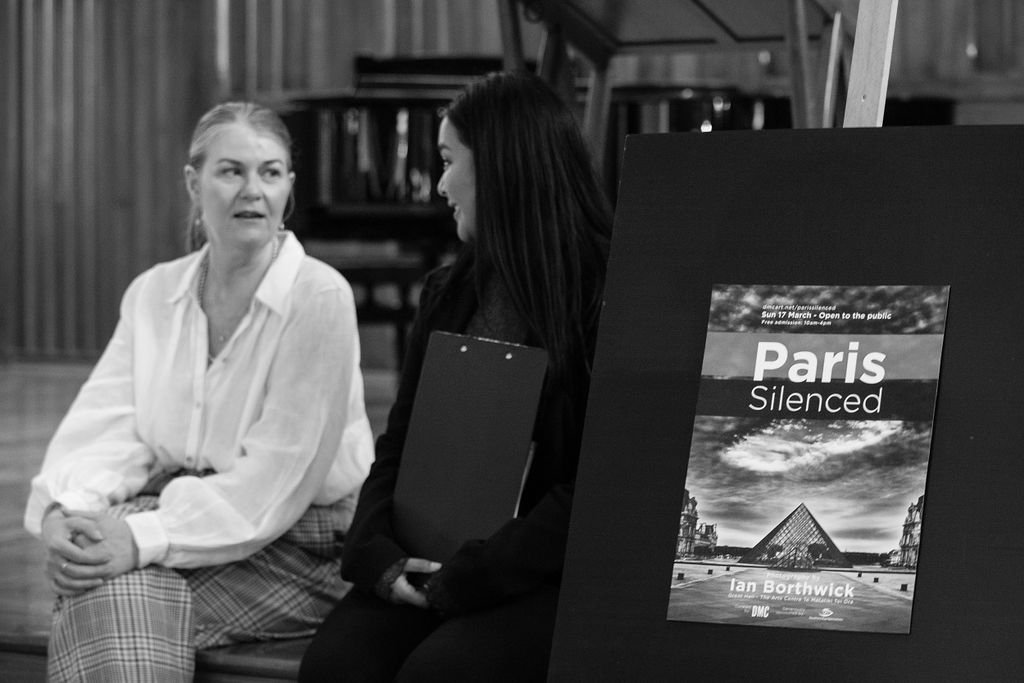
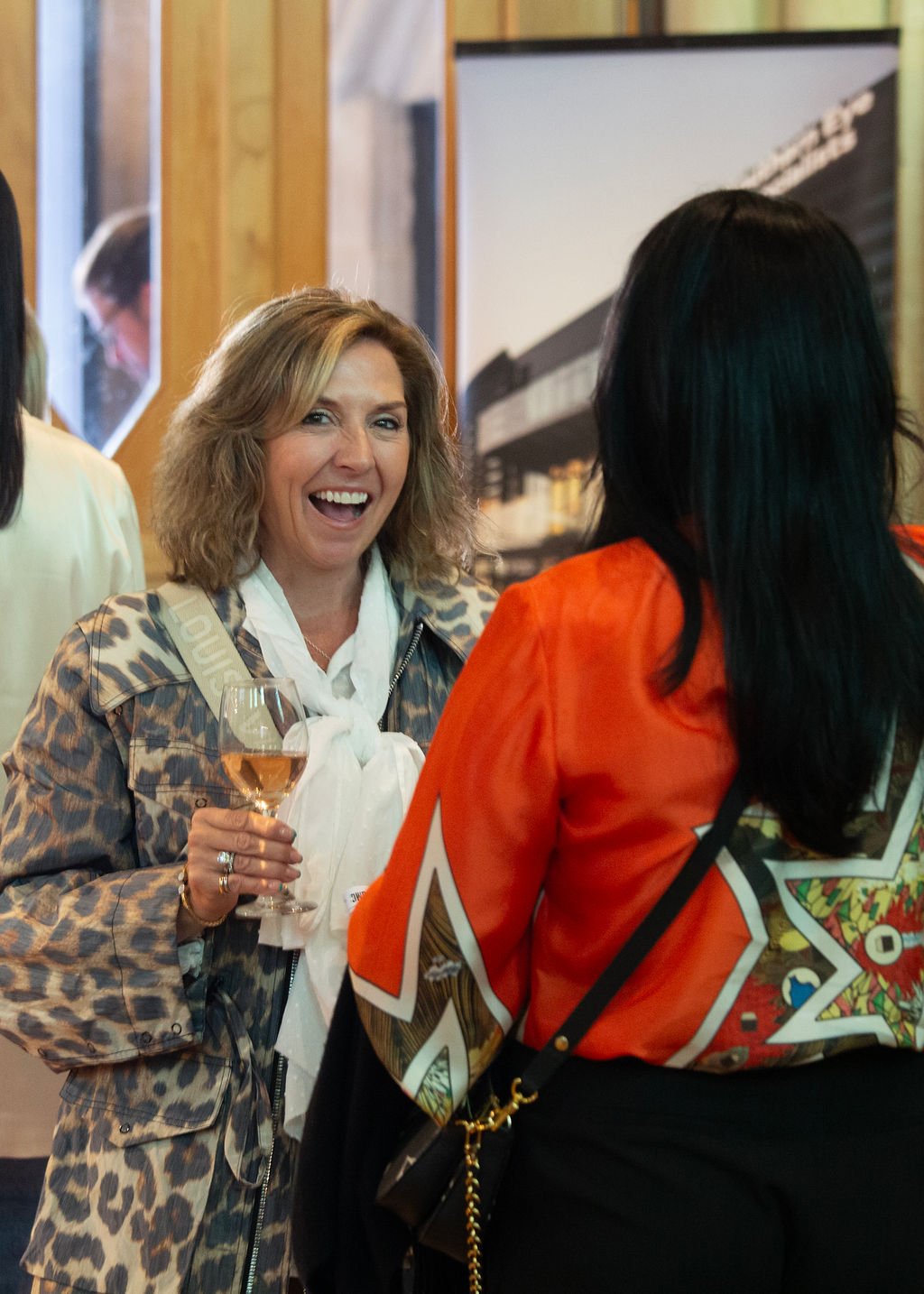
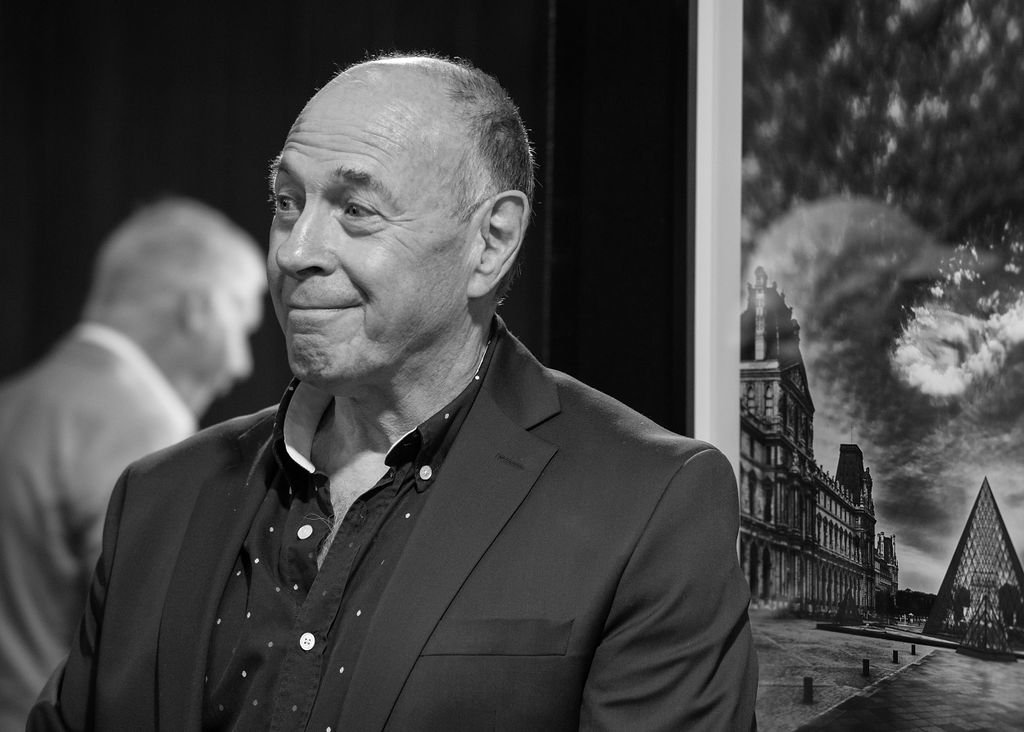
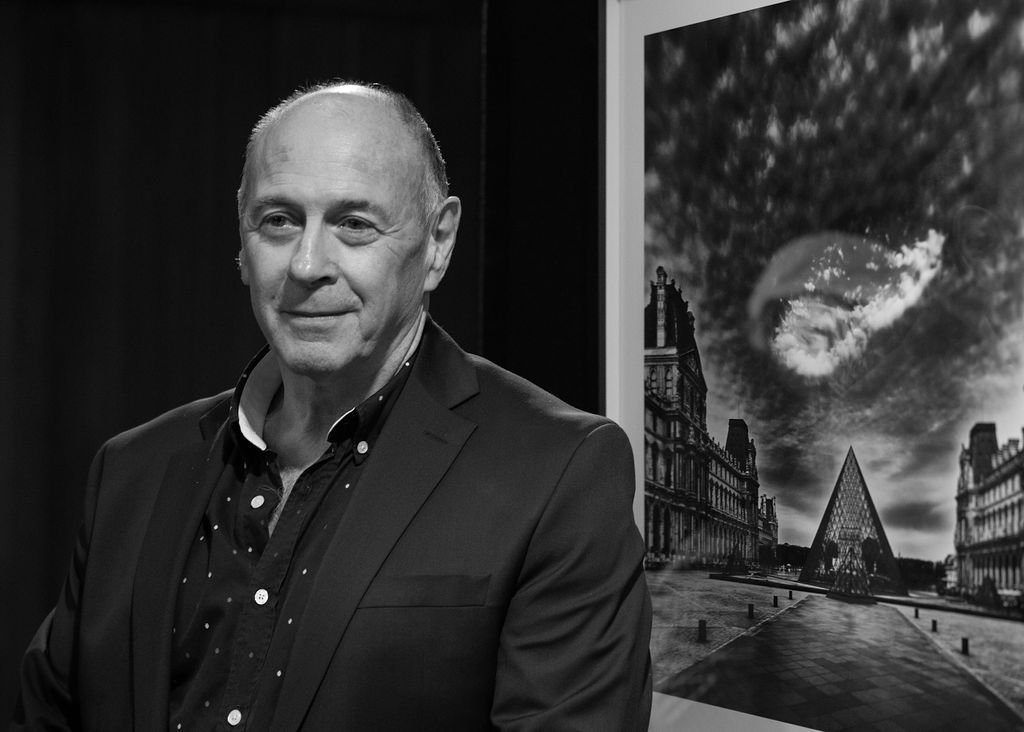
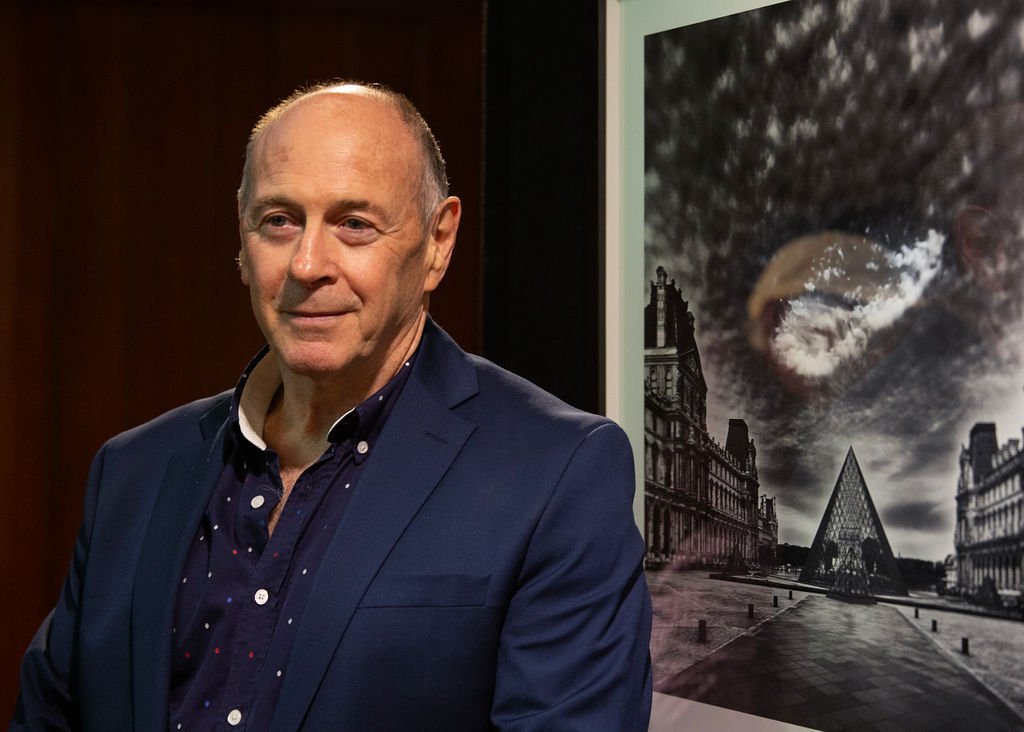
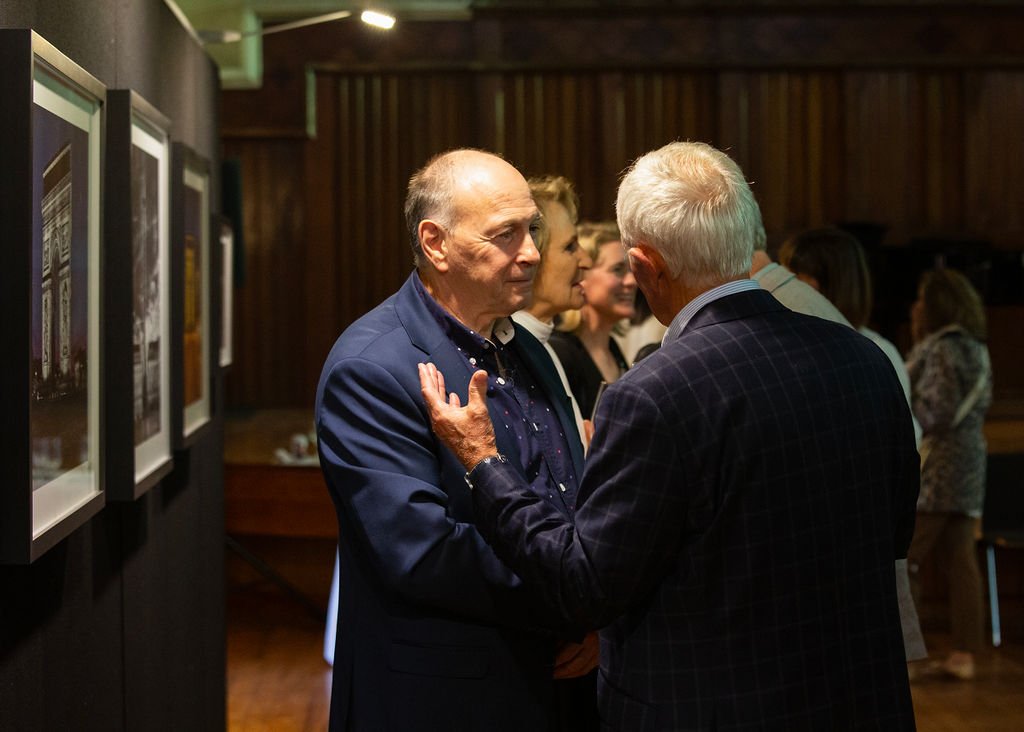
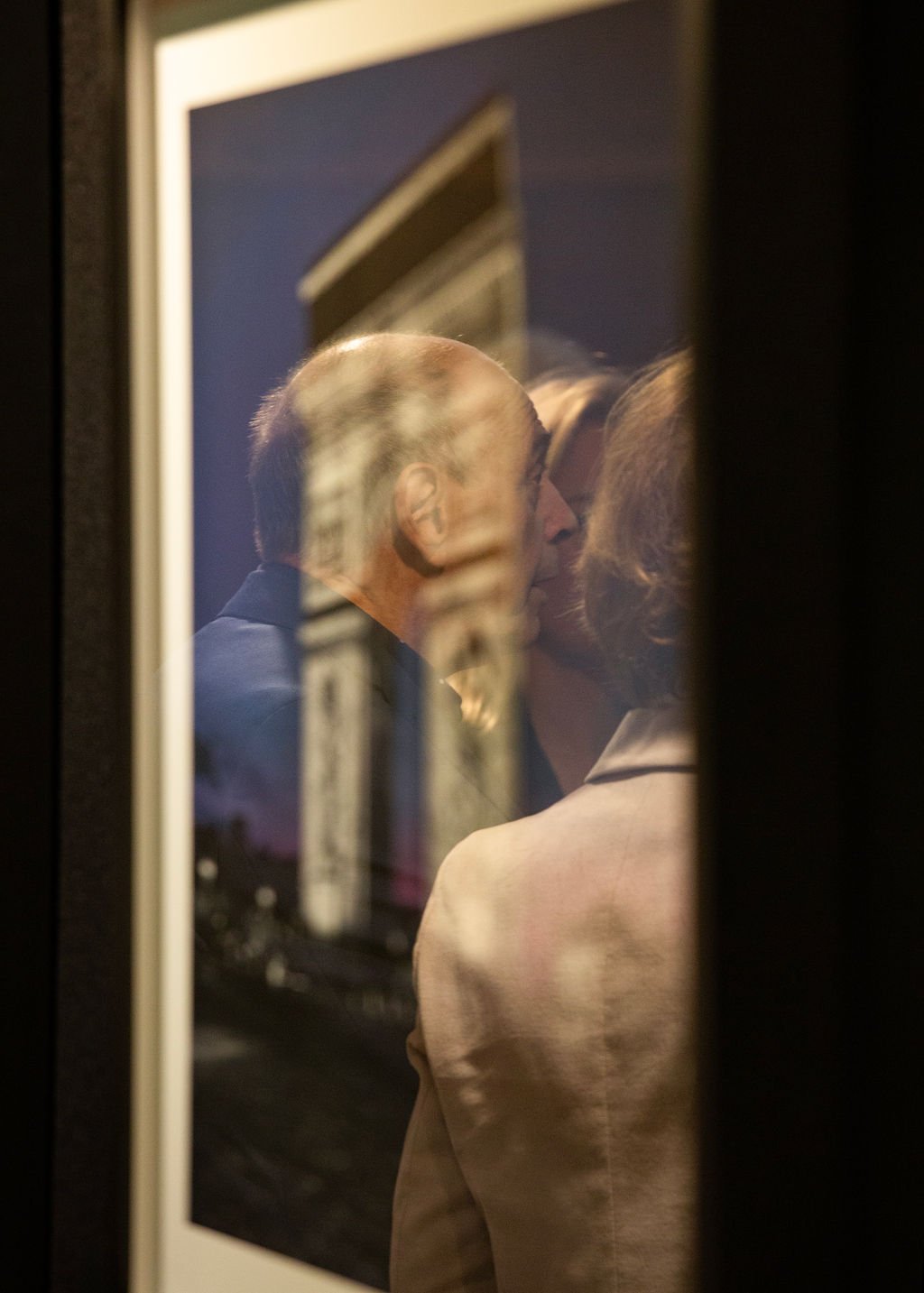

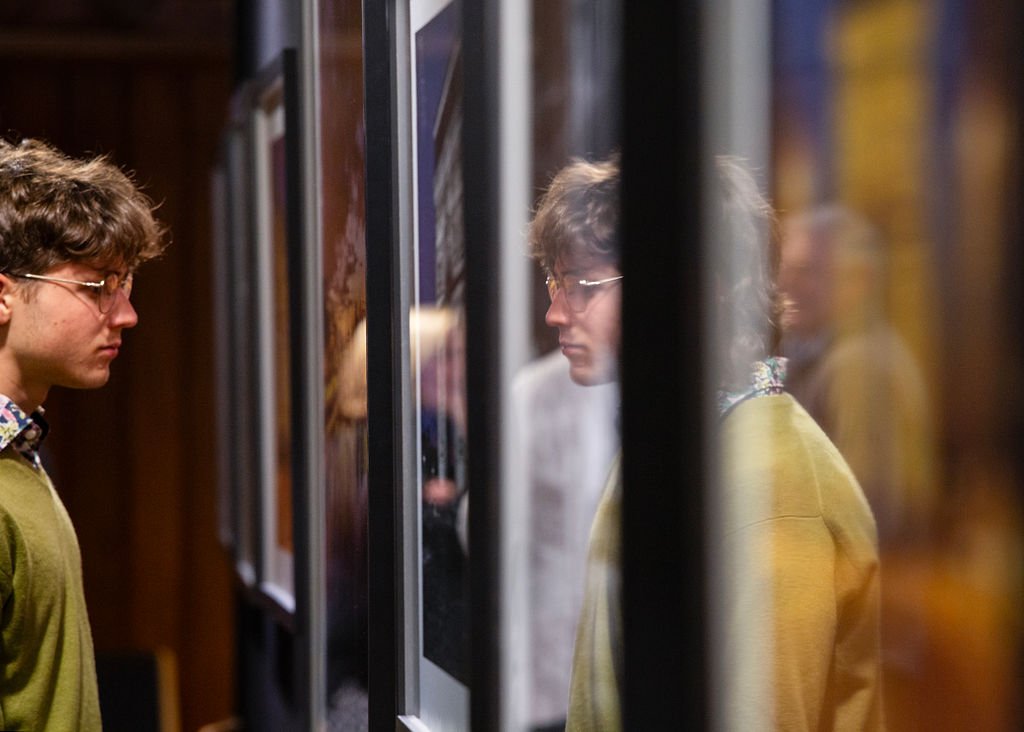
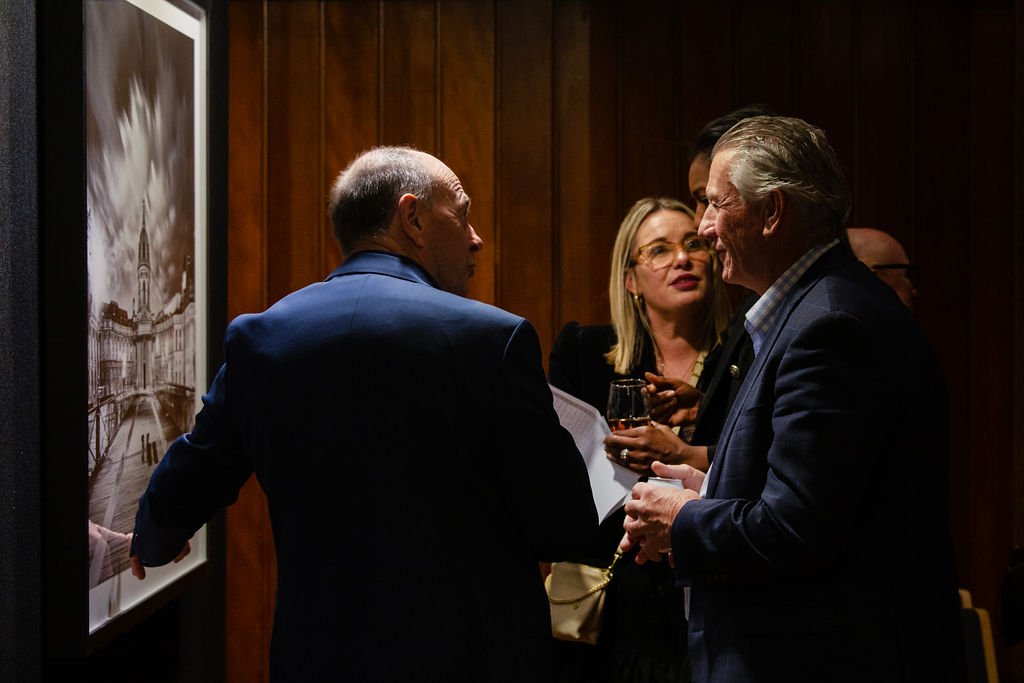
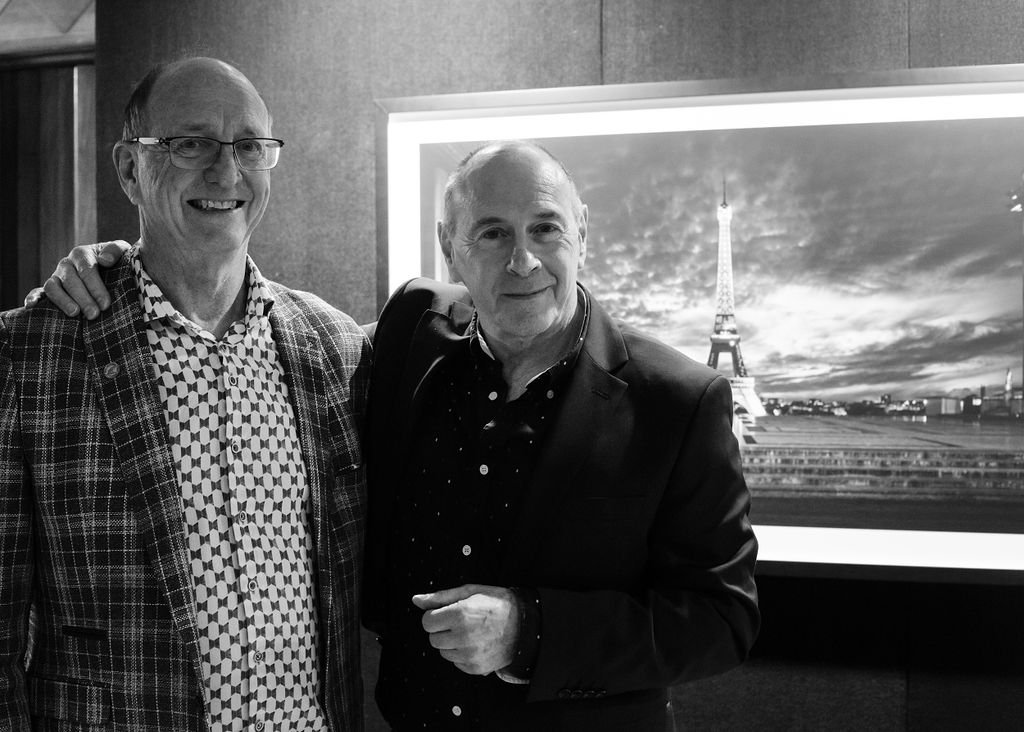


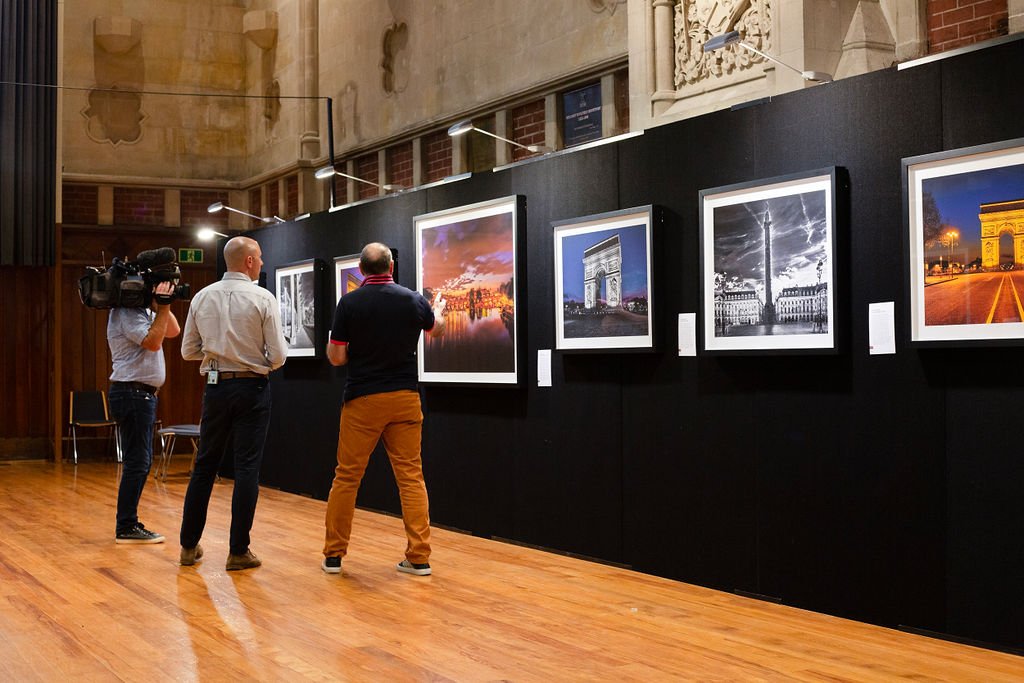
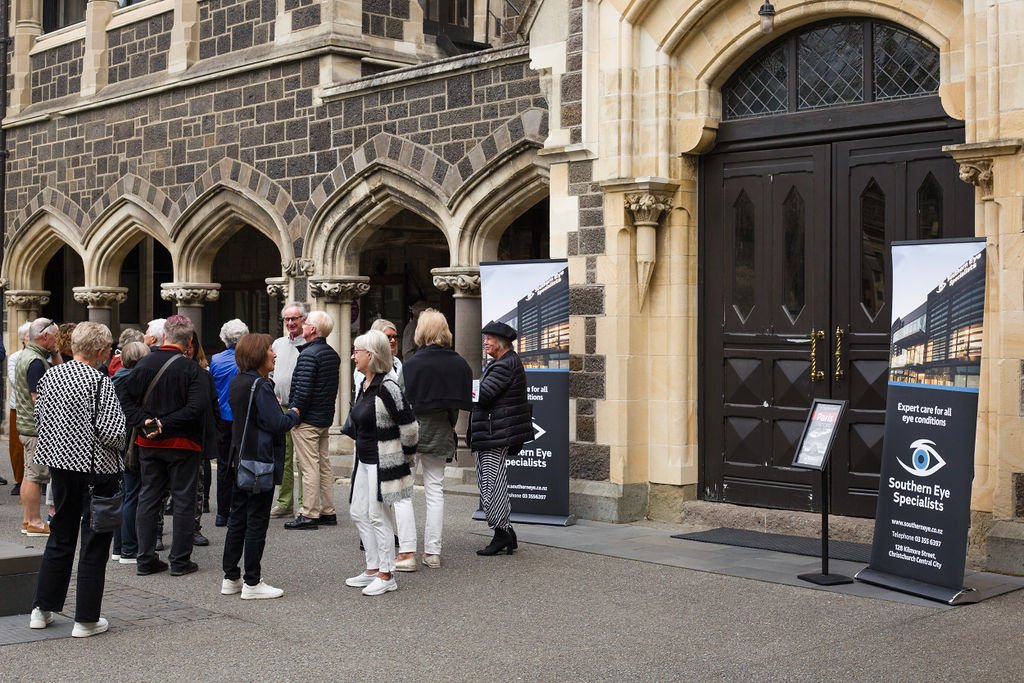
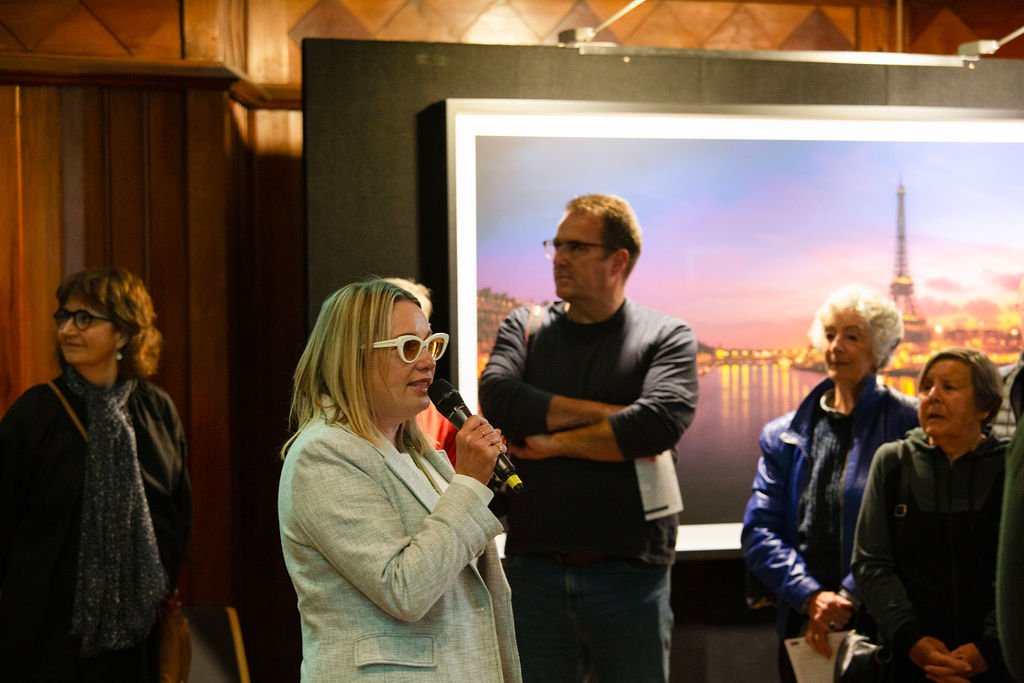
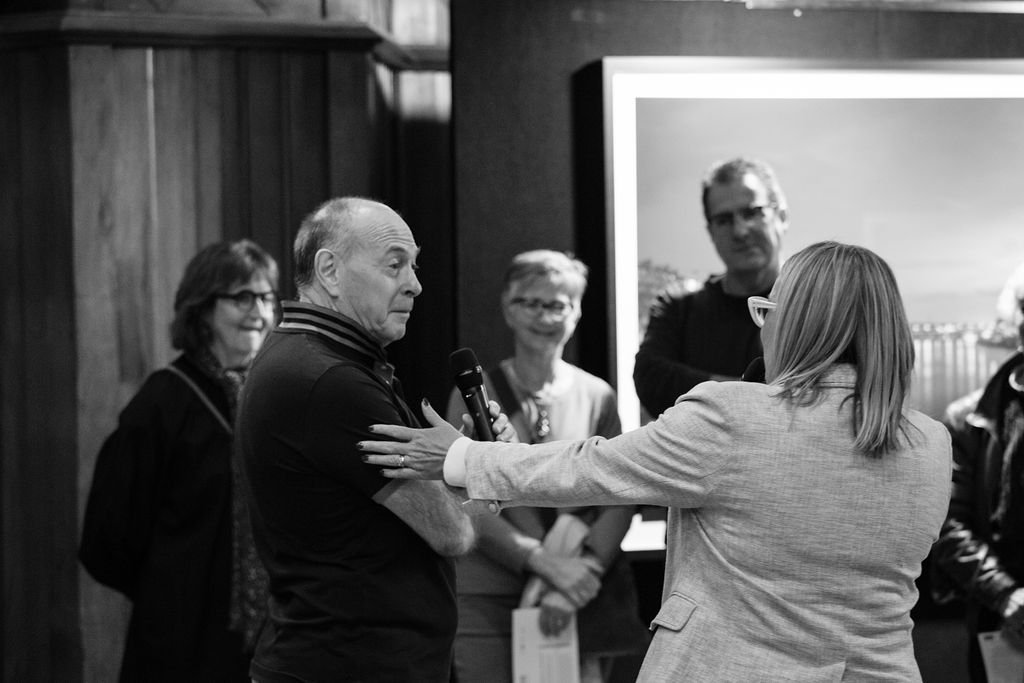
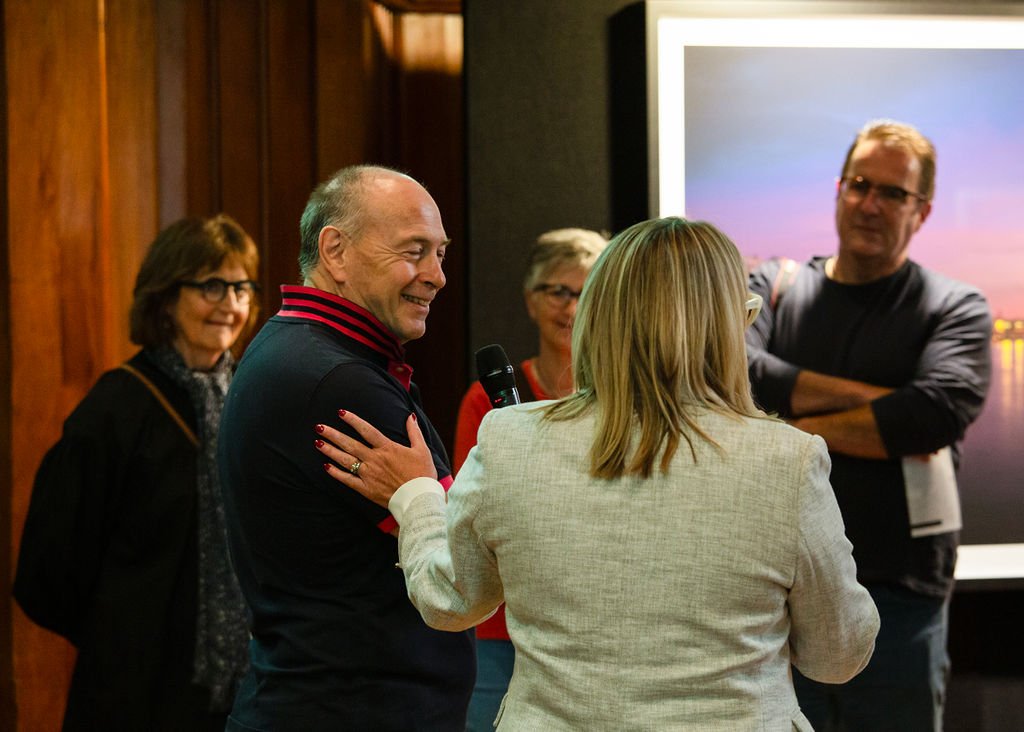
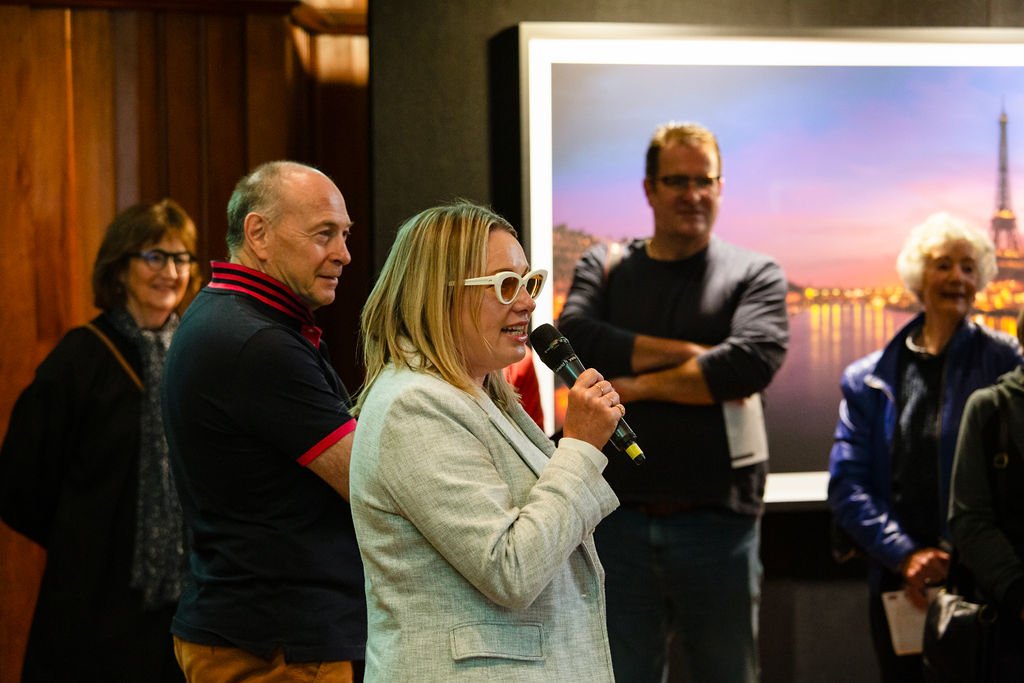
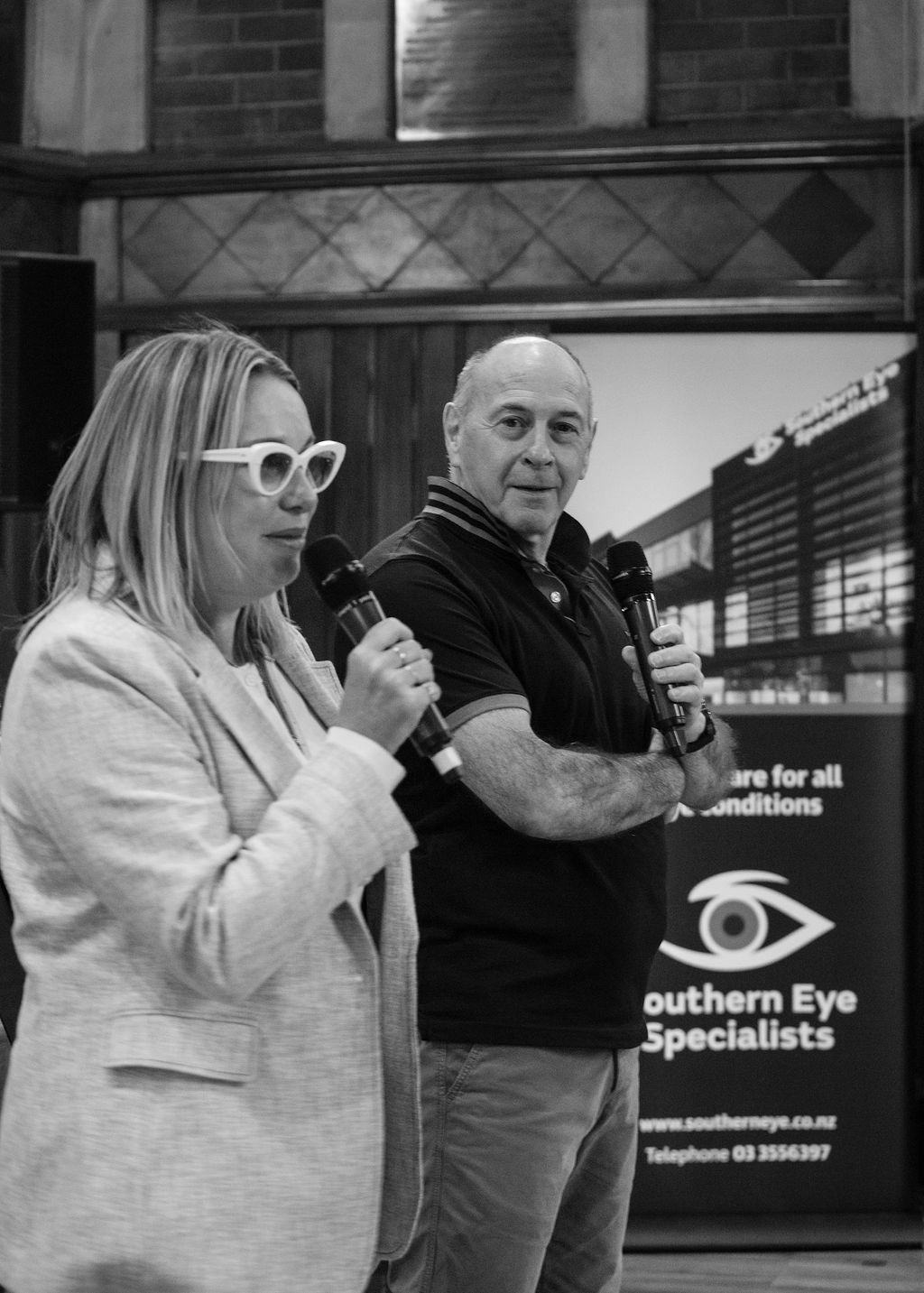
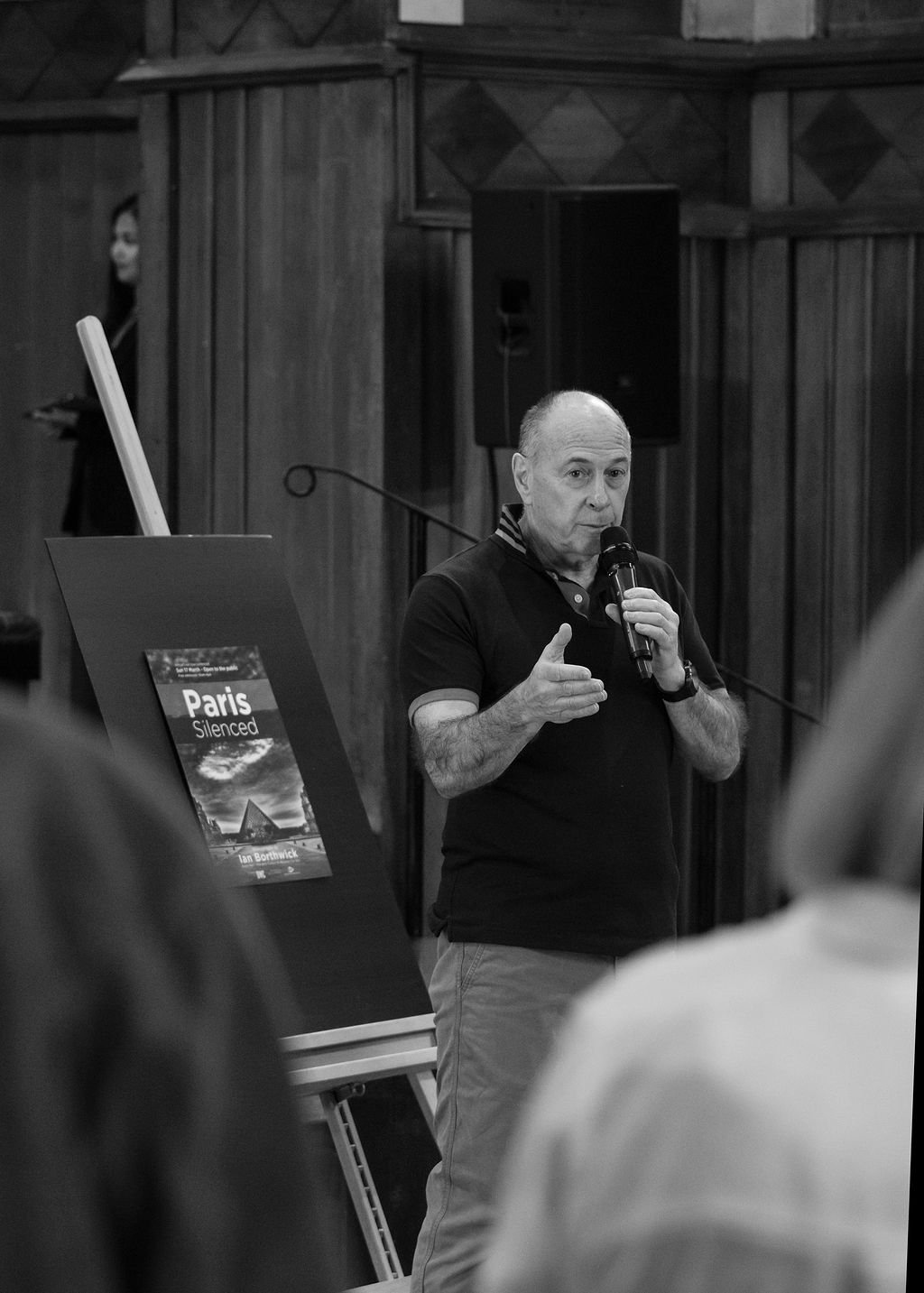
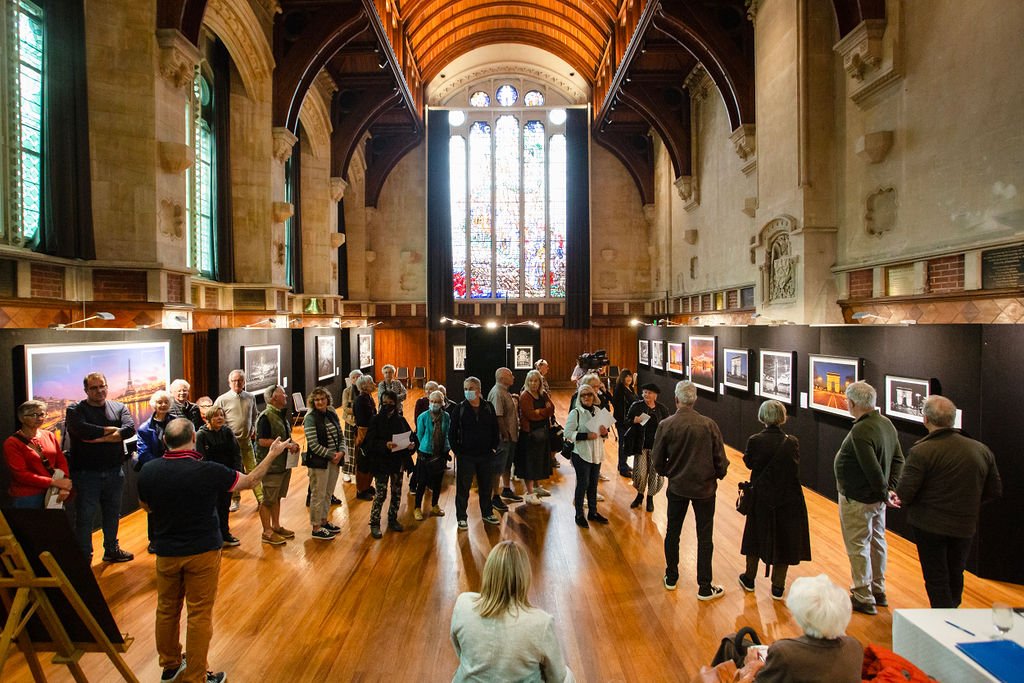
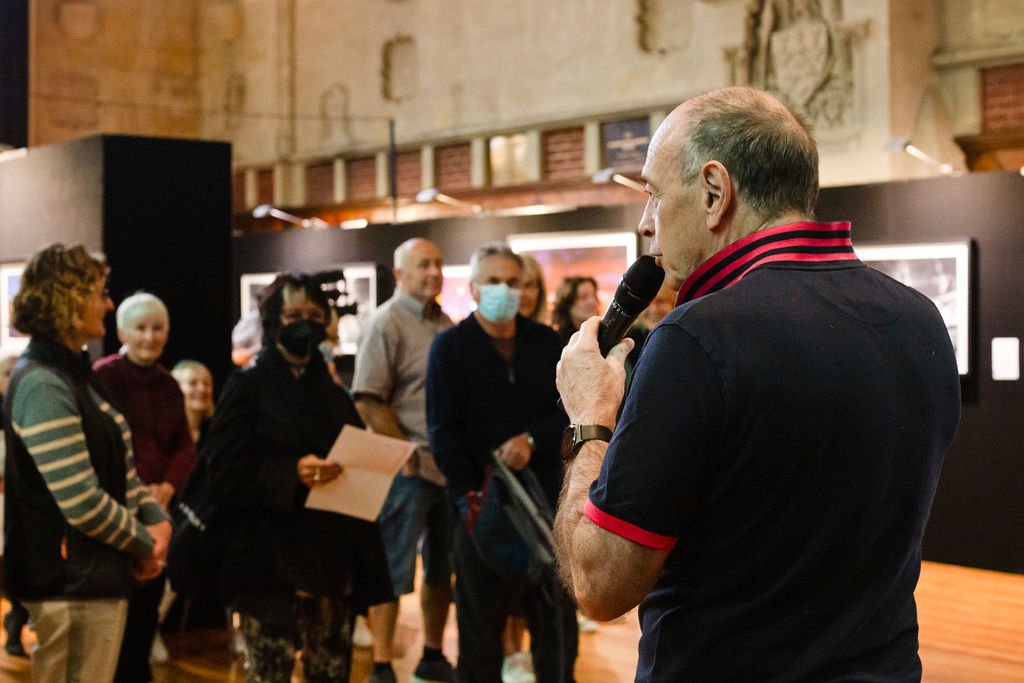
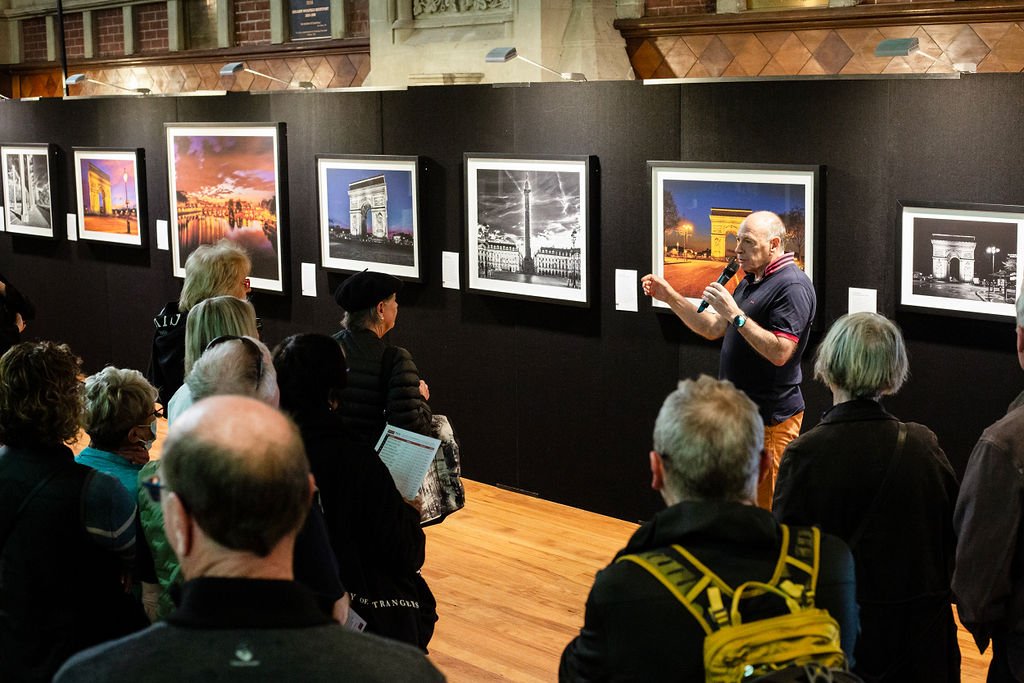
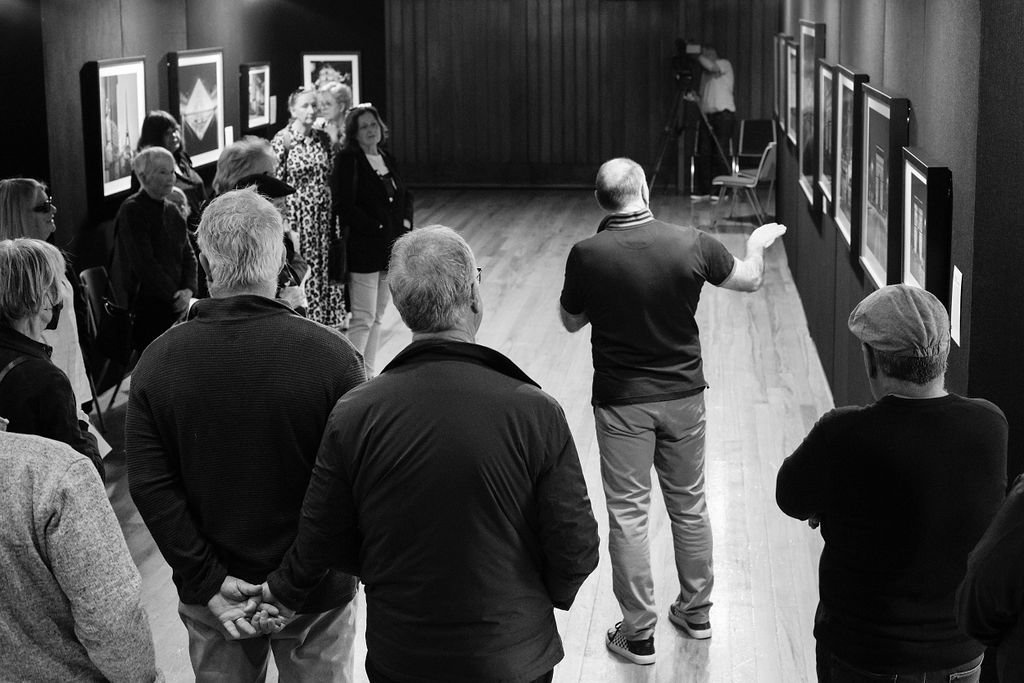
This exhibition is curated by DMC
© 2023 DMC, Deborah McCormick Consulting and Ian Borthwick | Design by Wordshop
